 Get the right two people together and the heat can set the world on fire. 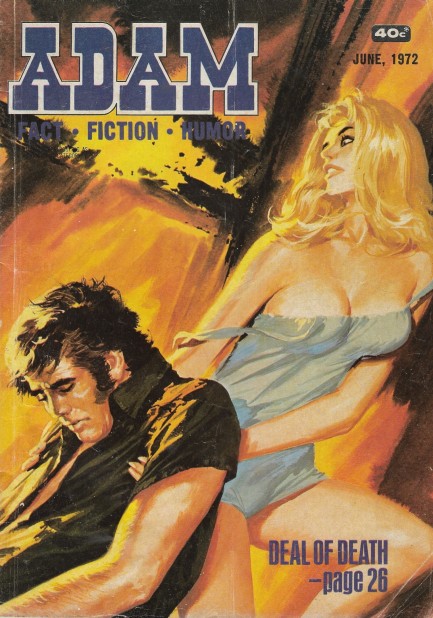  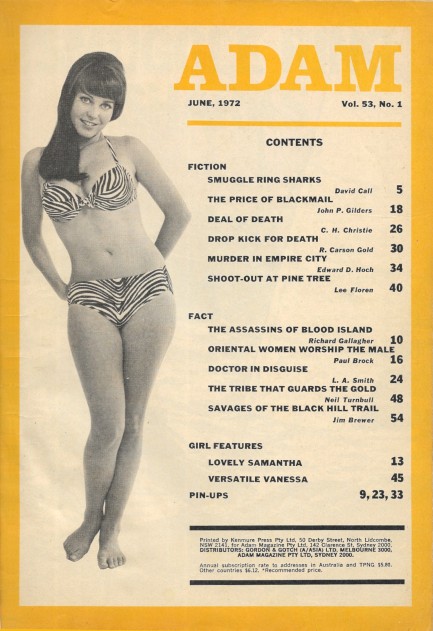 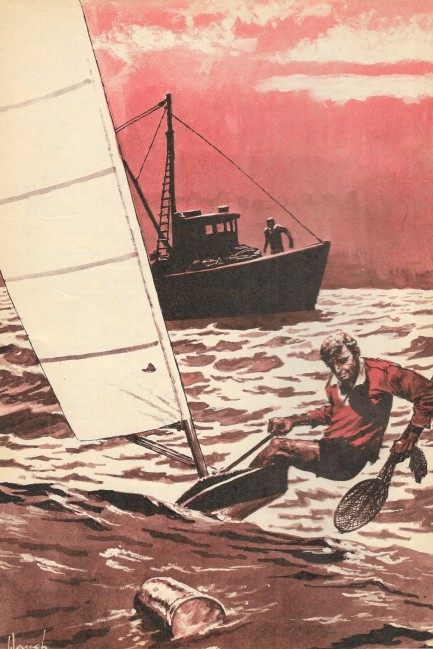 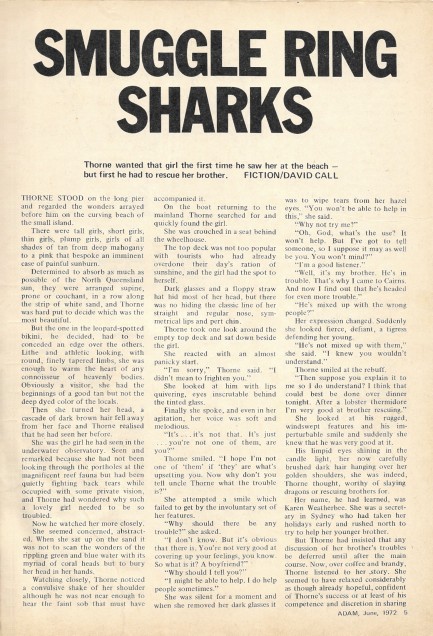  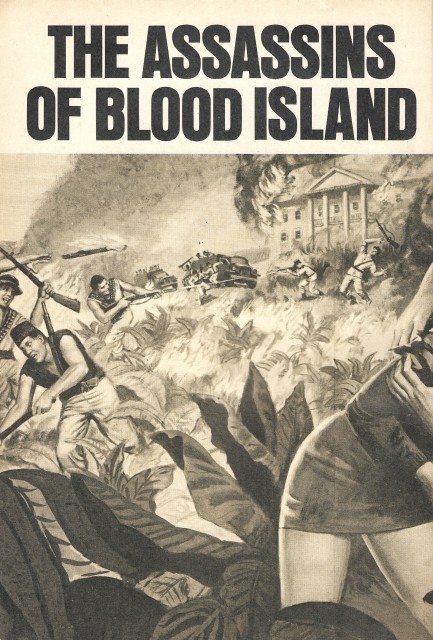 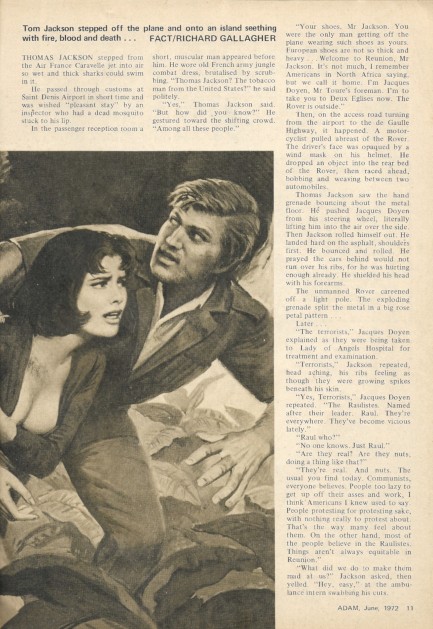 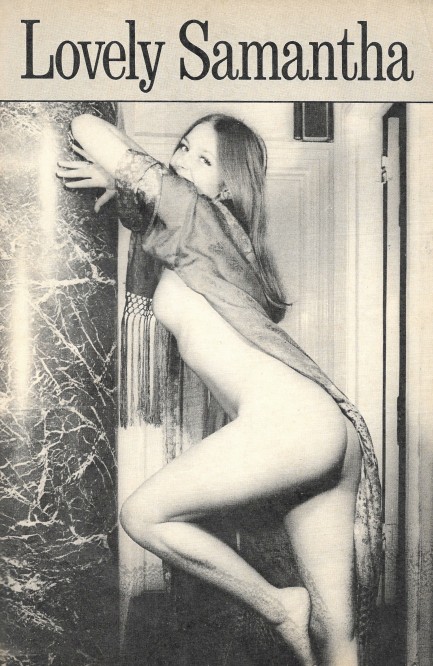  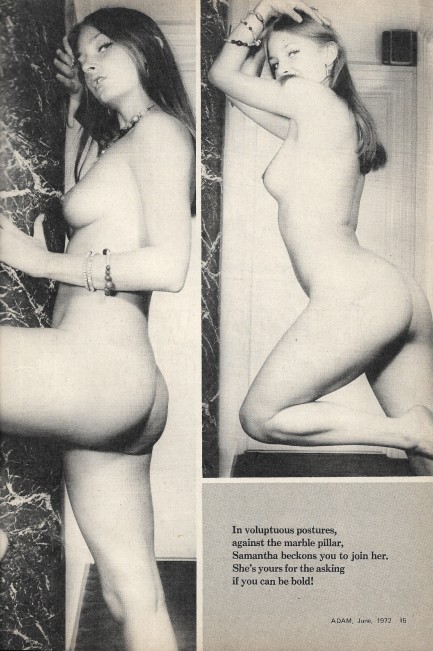  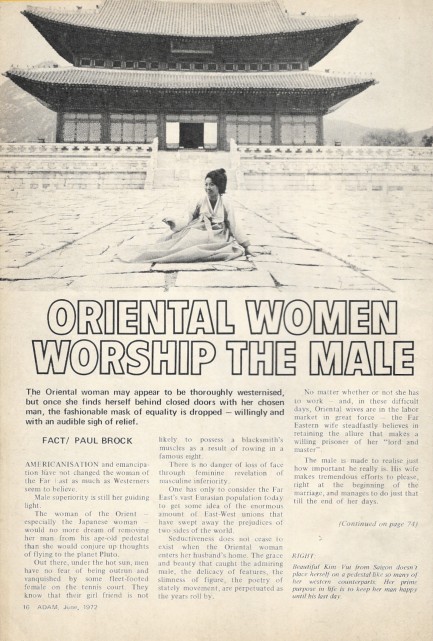 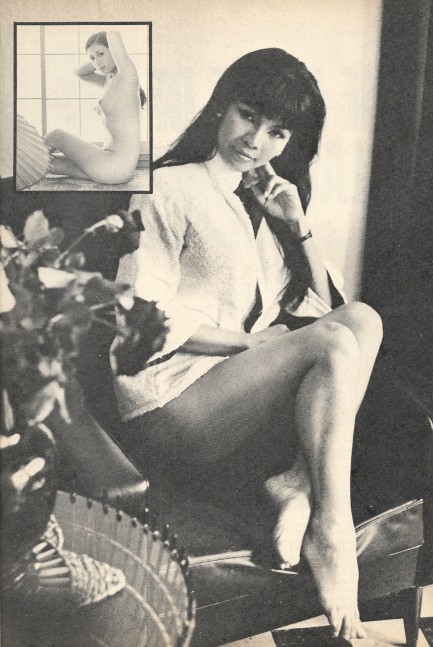 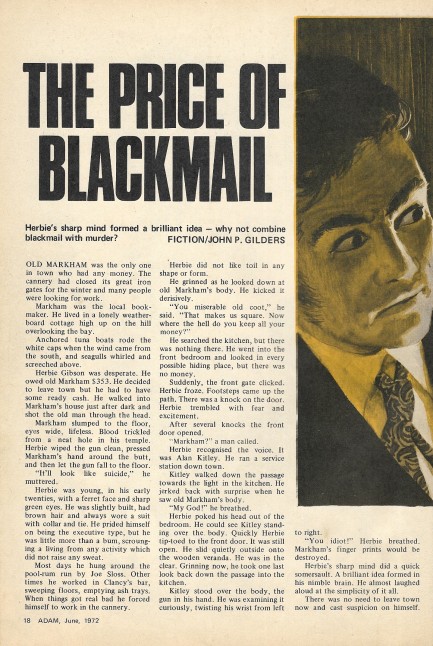 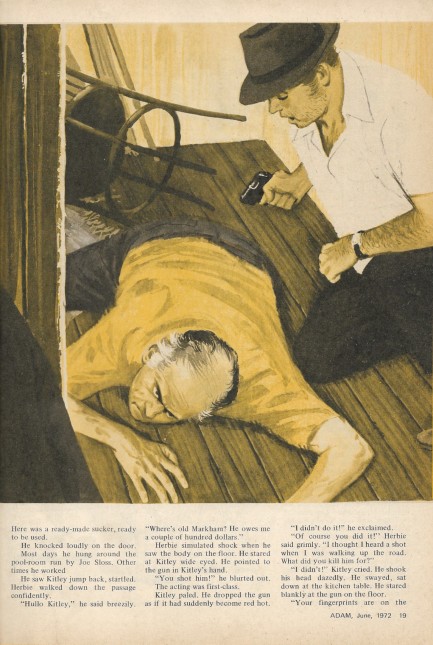 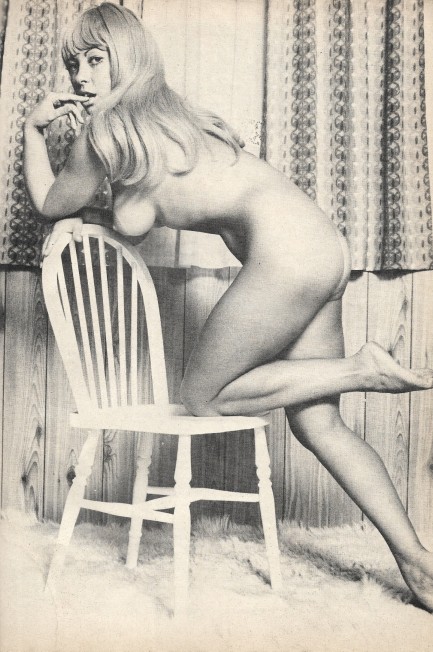 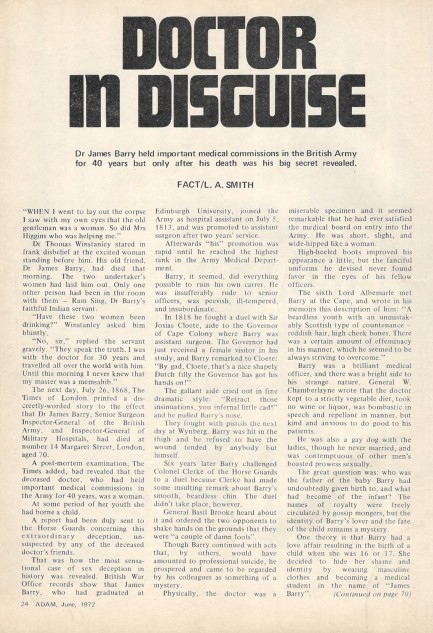 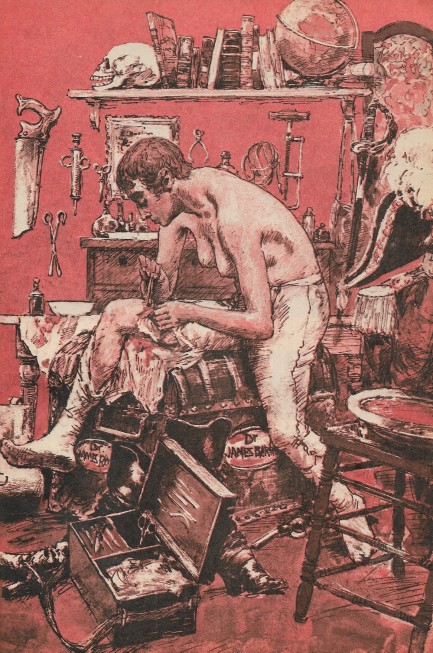 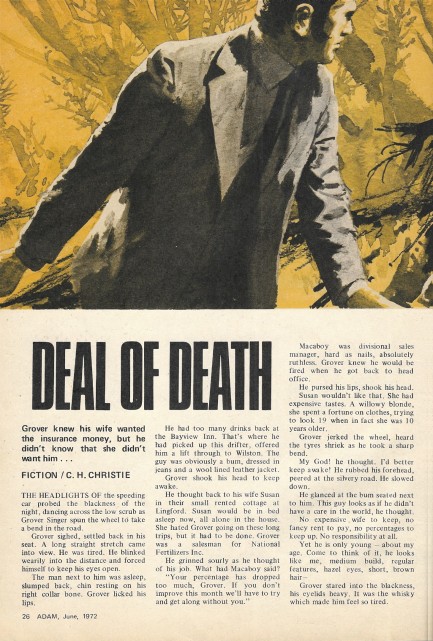 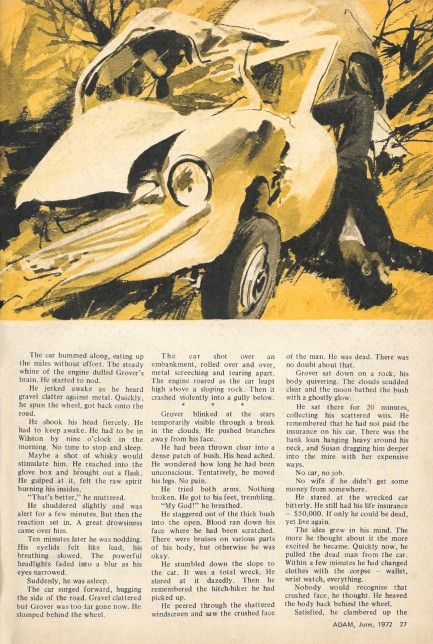   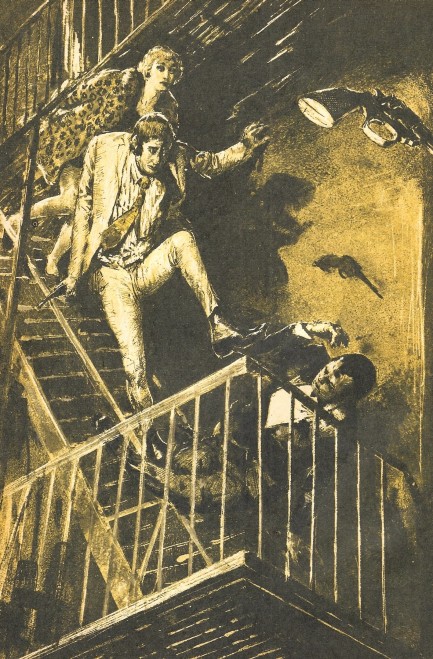 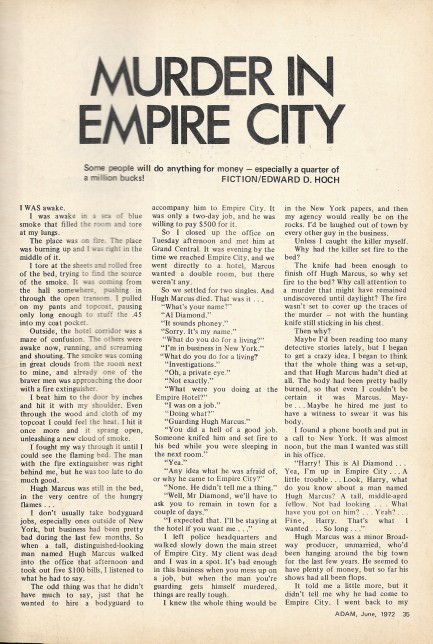    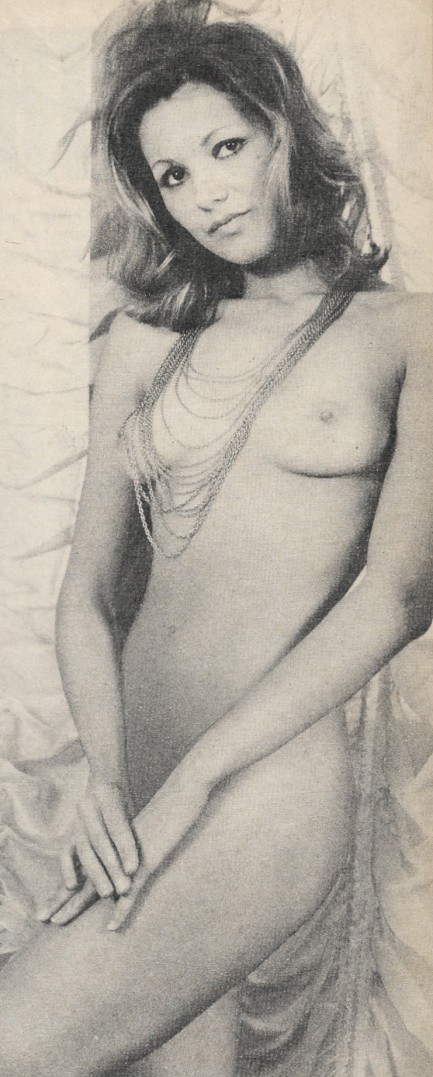 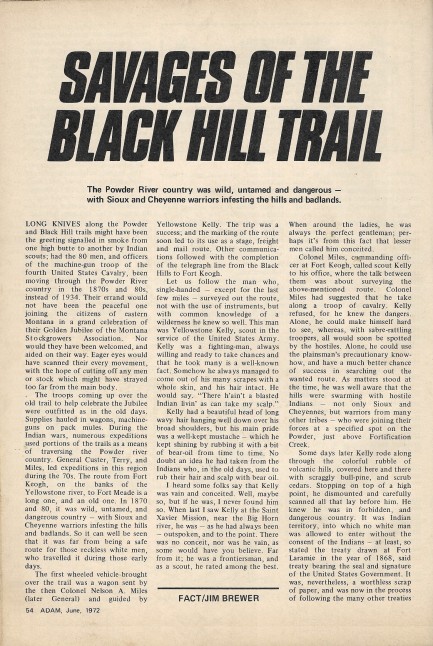 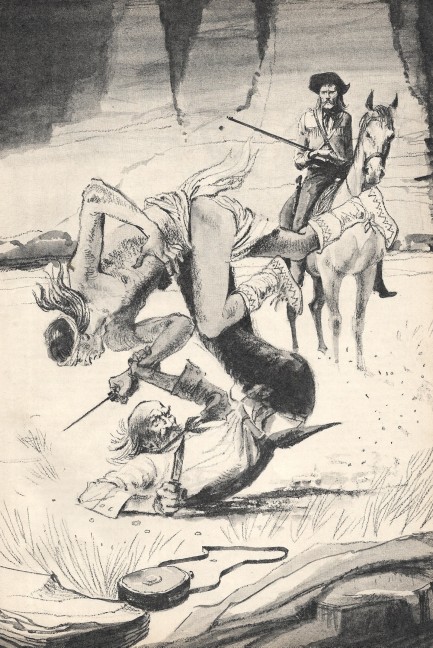 
Above: an issue of Adam magazine with another beautiful cover by Jack Waugh or Phil Belbin, illustrating C.H. Christie's story, “Deal of Death.” It's about a man named Grover Singer who's in debt and fakes his own death for $50,000 in insurance money (about $325,000 today). He does it by crashing his car with another man inside, but his wife knows right away the body isn't his. She doesn't tell the police, though, because she's been having an affair and recognizes the opportunity to run away with her lover and the cash. All that needs to happens is for someone to kill Grover for real. That's what lovers are for.
Also of note is the factual story “Doctor in Disguise.” The illustration give the disguise away. It's about a nineteenth century doctor named James Barry who practiced for forty years and upon death was revealed to be a woman. The long subterfuge involved everything from pretending to shave every morning in order to explain her smooth face to surviving a duel. In 2024, as women's rights remain under sustained attack, there's an opportunity built into this story for extensive commentary, but you know where we'd go, so pretend we went there and we'll let you get on with your Saturday. More from Adam soon.
 I've never been a fan of lingerie, but your nightgown elevates this whole abduction into something really special. 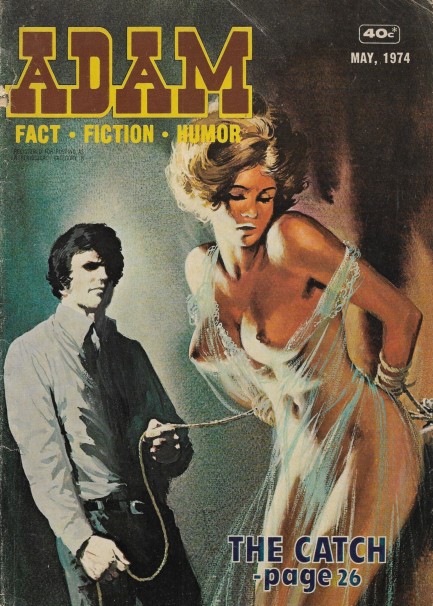
This issue of Australia's greatest men's magazine Adam reached newsstands this month in 1974. The cover illustrates Alexander Tait's story “The Catch,” about a boat captain who's given a slow-acting poison in order to ensure his compliance in a smuggling scheme. Adam covers were always painted to order, and that's especially clear here because not only does this lingerie bondage scene occur in the narrative, but the woman is described as having hair that “stuck out in all directions in some kind of afro style.”
What didn't stick out in the story was a lot of talent or imagination, but that's okay—there's always another thing to enjoy in these mags. For example, we thought “Sex and Serpents” was rather interesting. It's a factual story written by Paul Brock about snakes and sexual symbolism. Brock discusses cultures from ancient Egypt to modern Burma, and reveals that snakes are sometimes pickled or powdered. Our favorite anecdote involves an Appalachian preacher who allegedly used a live snake to beat three men and a woman into repentance for sexual sins. Afterward he probably beat his own snake. You know how it goes with these types.
Elsewhere in the magazine are the expected assortment of nude and semi-nude models, but one of them (panel eight below) is a photographed head and arms atop an illustrated torso. Can't say we've seen that before. Maybe she had a rash that day. Or maybe she refused to pose nude. Imagine her surprise when the issue hit the racks. We can only hope she beat the photographer with a snake. Moving on, there's art by Jack Waugh, and few cartoons that made us smile. Not laugh, mind you. Just smile. Scans below, and we'll be revisiting Adam later this month. 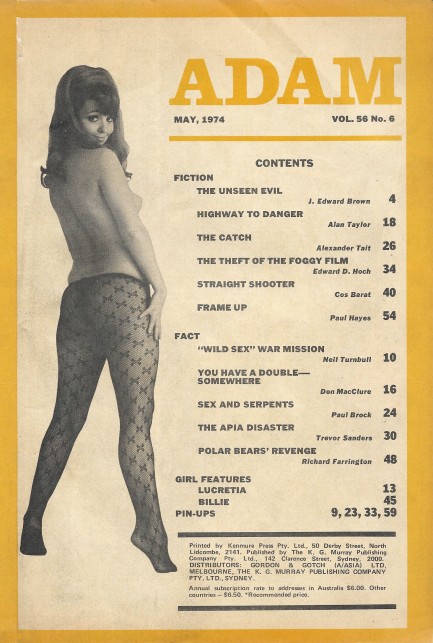 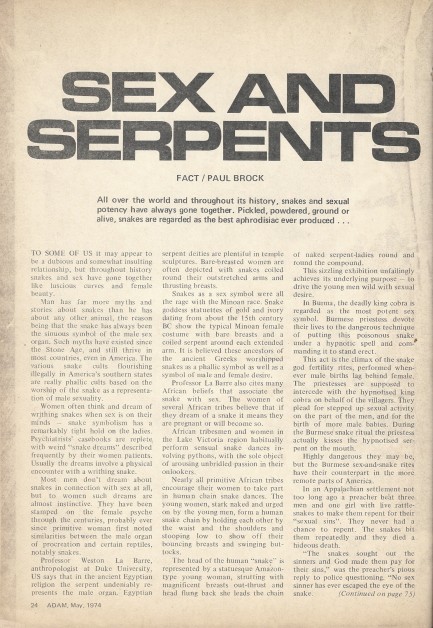 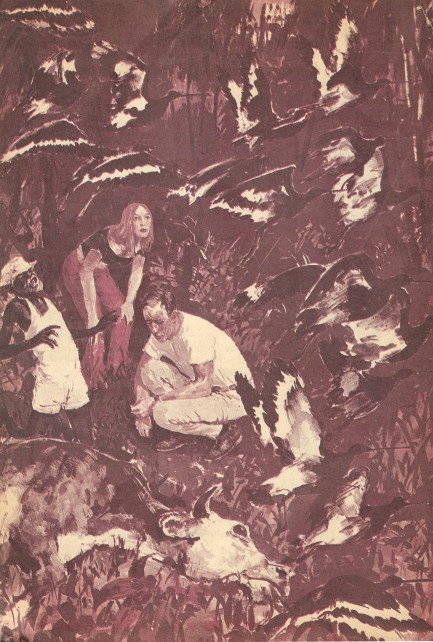 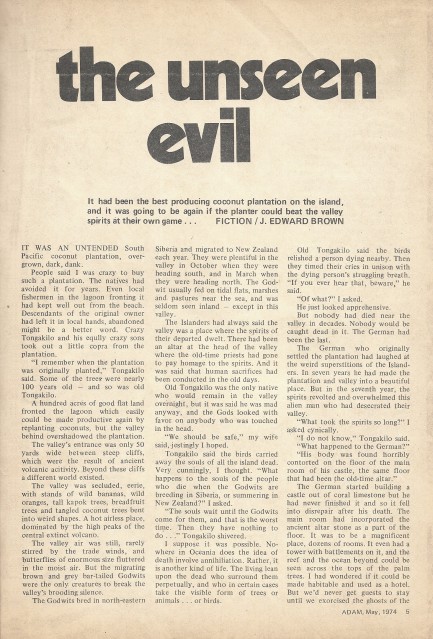 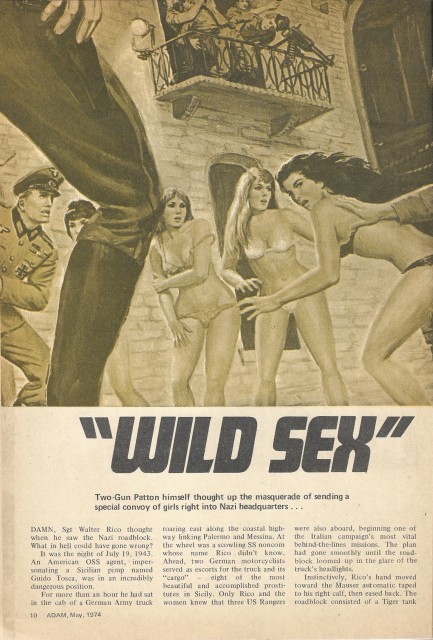  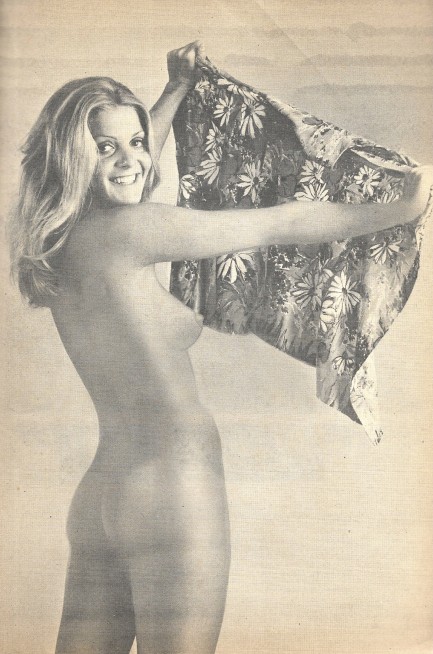 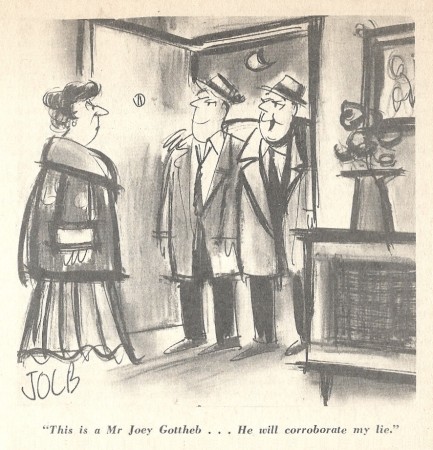 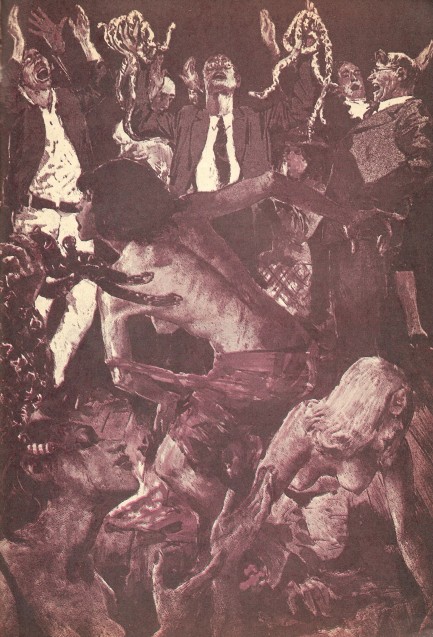 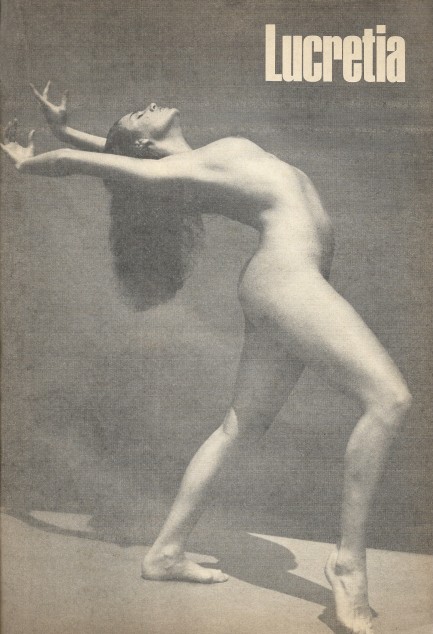  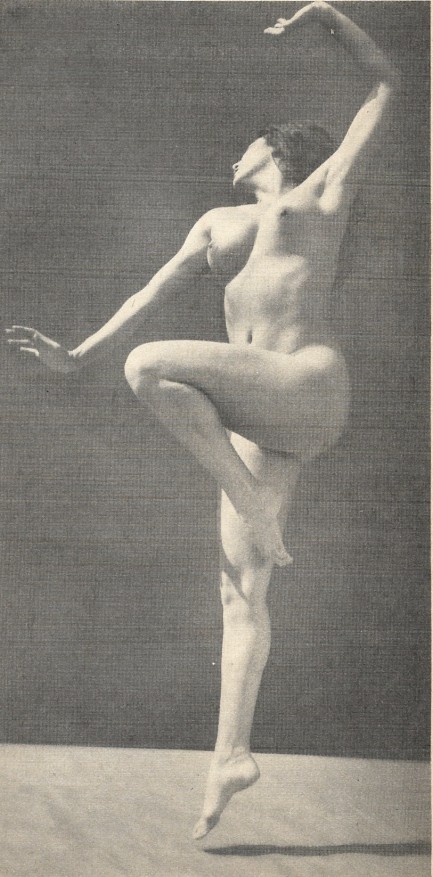 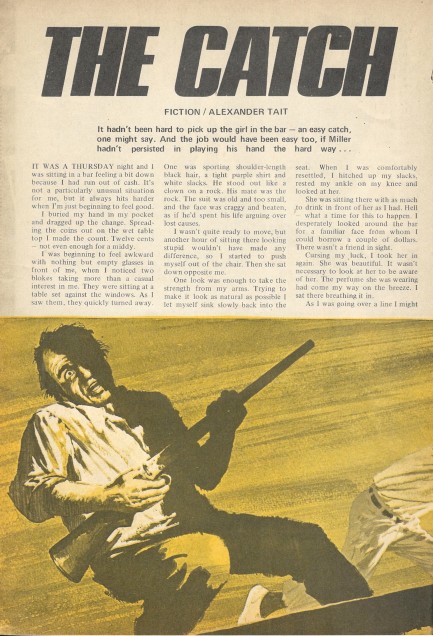 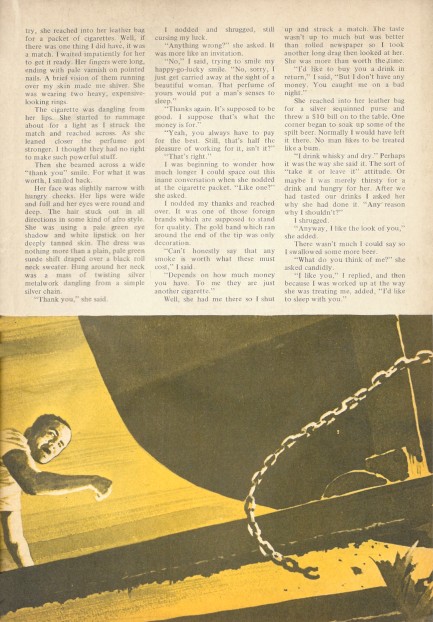  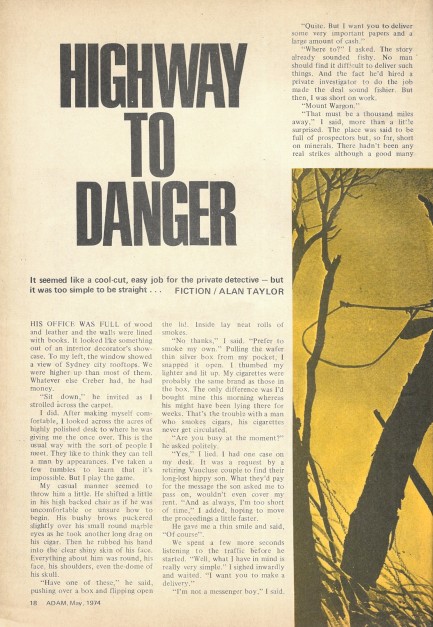 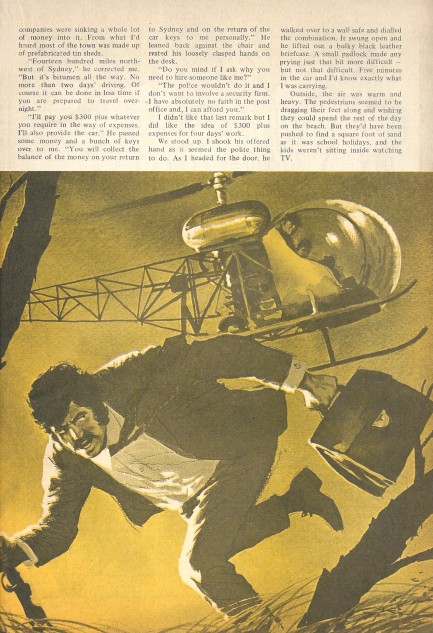  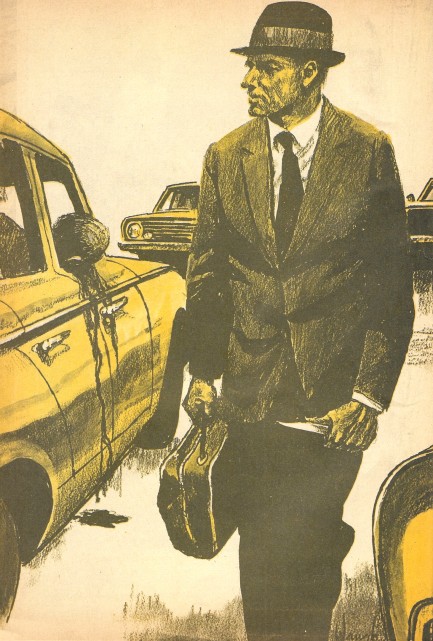 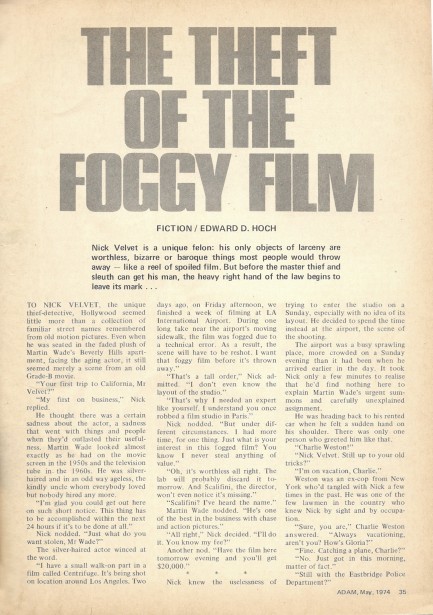 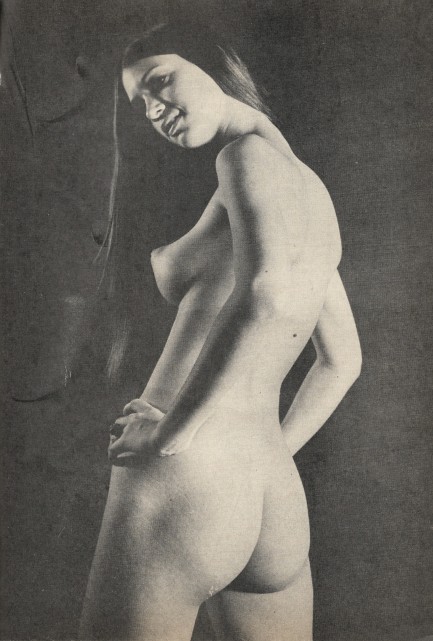 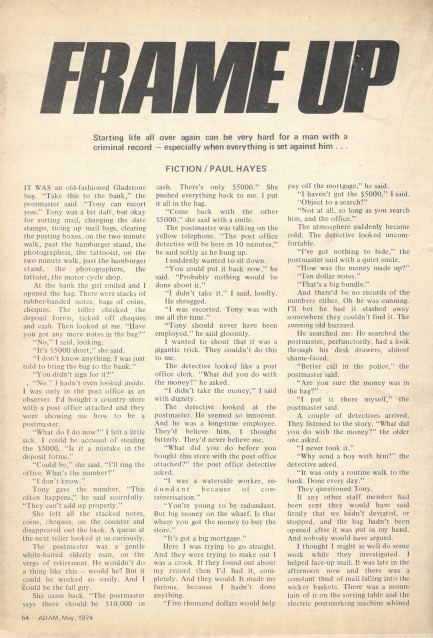 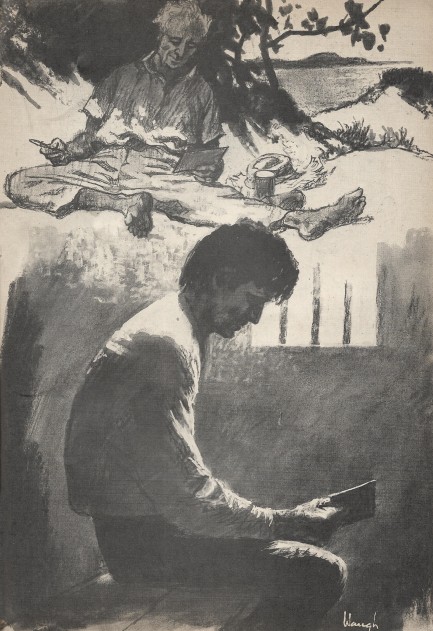 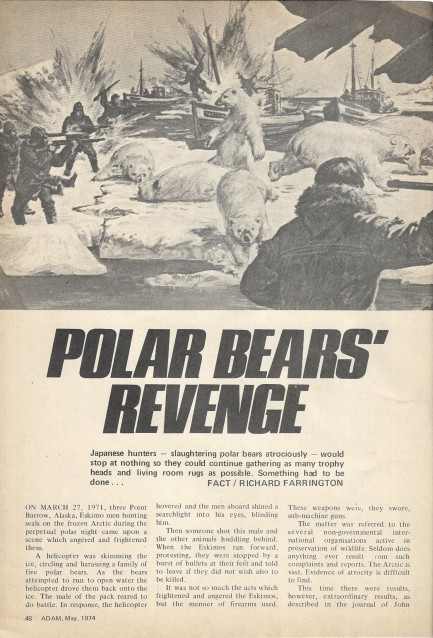 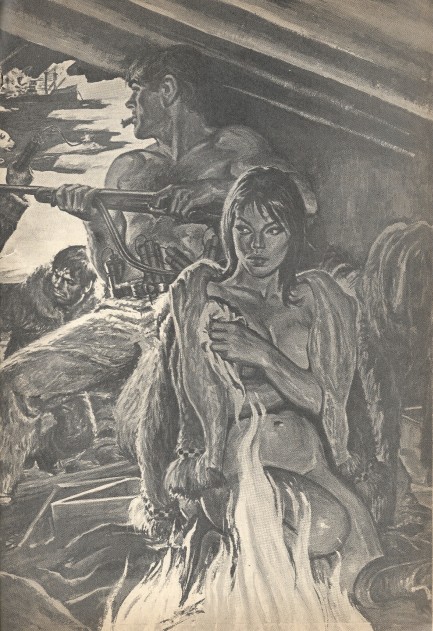   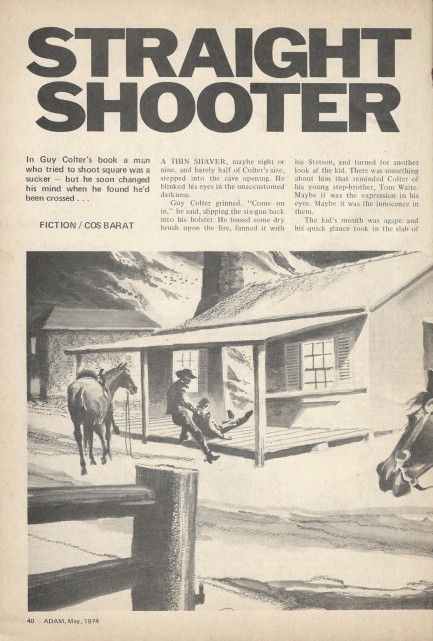 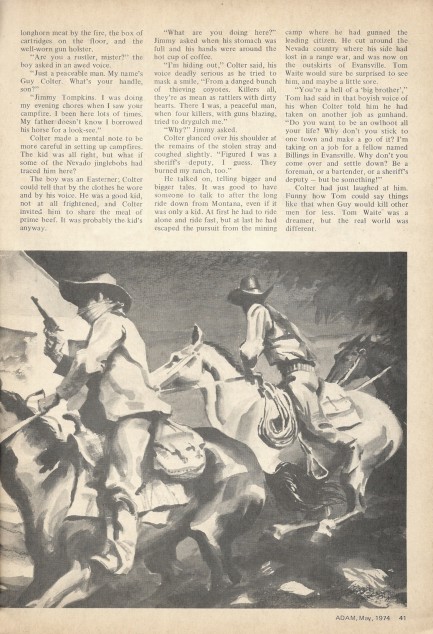 
 This is what's called in the realm of answers a hard no. Don't let the door hit you in the dick on the way out. 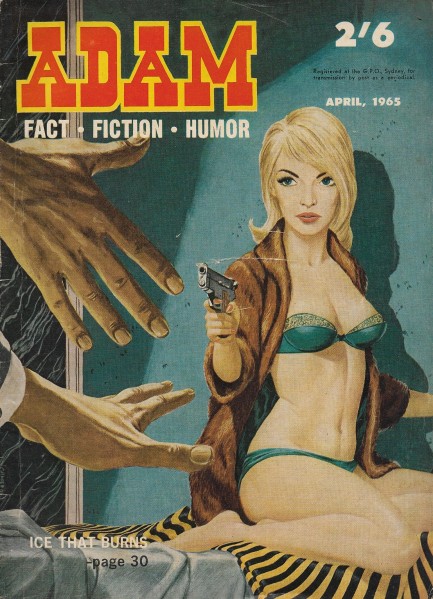
To say that Adam magazine is an interest of ours is an understatement, but we haven't shared an issue for eight months. That's been a result of our drawn out and complicated move, which we initiated last summer, thought we'd have finished by November, but actually just completed to the point of unpacking our scanner last month. Lesson: buying a house in the south of Spain takes three times longer than you anticipate. Rest assured, though, we're still collecting Adam, and today we're sharing our eighty-fourth issue, which takes us down to fifty-four more we need to upload.
This particular example, which was published this month in 1965, was tightly bound, so we have only a handful of scans because we didn't want to destroy the magazine by flattening it. Apparently there's such a thing as a triangle scanner meant for such situations, but we never heard of one until this week. Anyway, the cover here of a woman holding off a prospective assailant was painted to illustrate Walter S. Bratu's story, “Ice That Burns,” in which a random everyman runs afoul of a Nordic femme fatale, and gets snared in a blackmail and bribery plot. In a twist he eventually uses his car to bash hers off a cliff, but it didn't surprise us. In vintage men's magazines women who are sexually unavailable to the hero usually come to bad ends.
There's also a story from Carl Ruhen that wins the award for best title of the issue, if not all of 1965: “So Ineffably Sad.” It's about a man named Jacky Ryan who accidentally kills a woman and must somehow cover up the crime. This issue also has signed work from Jack Waugh (he'd give up on signatures as the years progressed), and of course a couple of pictorials, both with unidentified models. As we said, we can't show you everything because of our desire to preserve the magazine, but if we ever get a triangle scanner we'll add to this post. For now, we have a mere fifteen panels below.
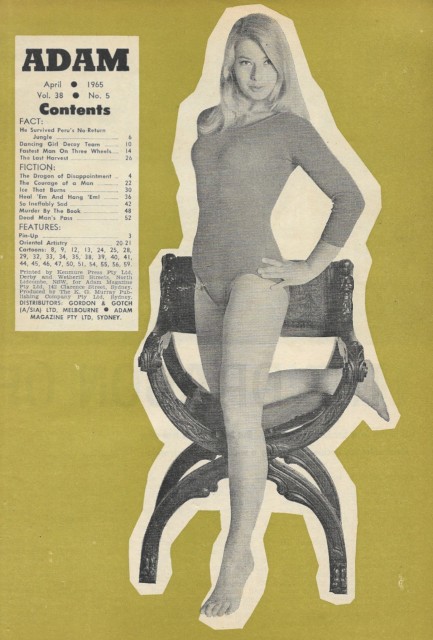 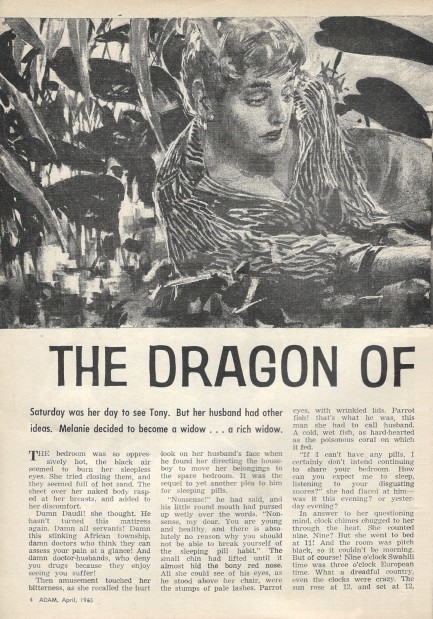 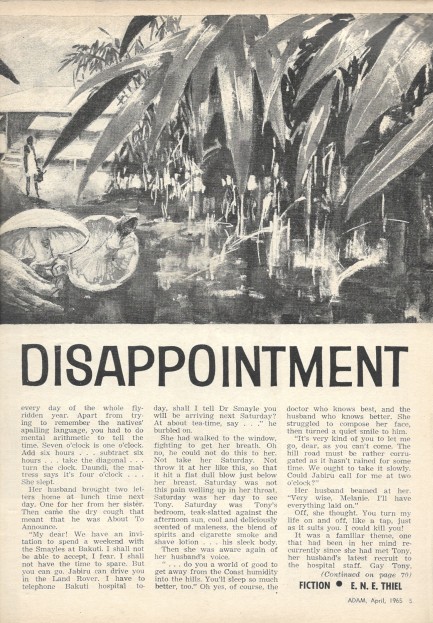 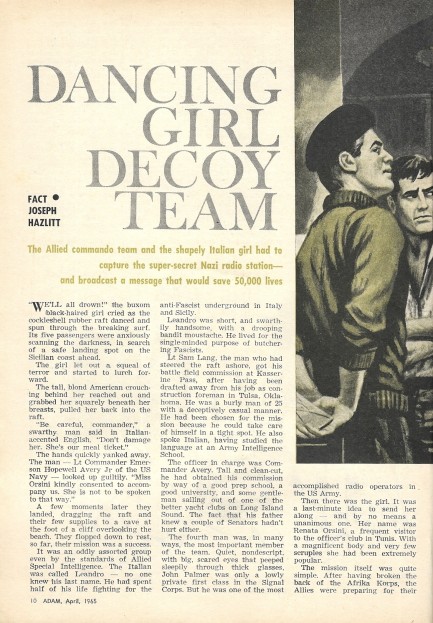 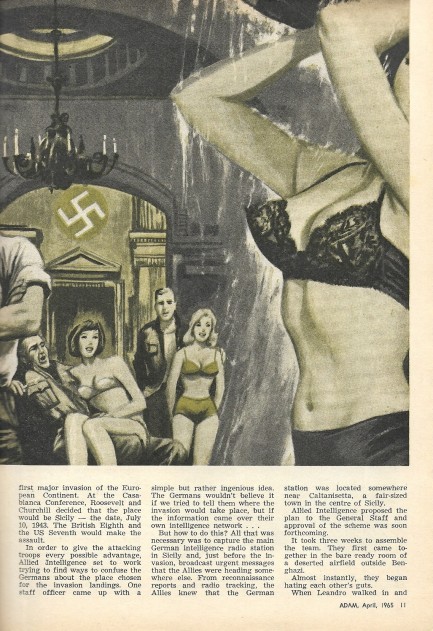 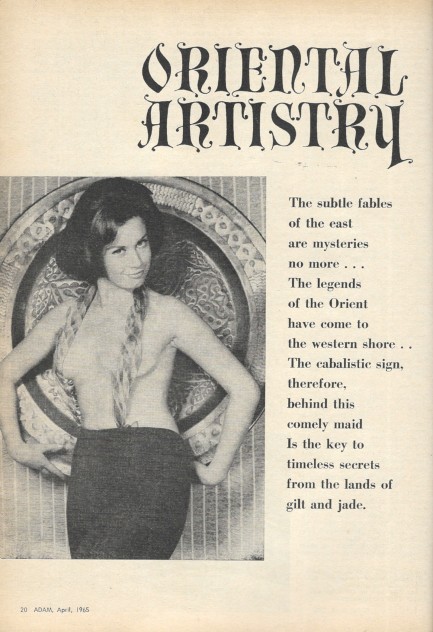  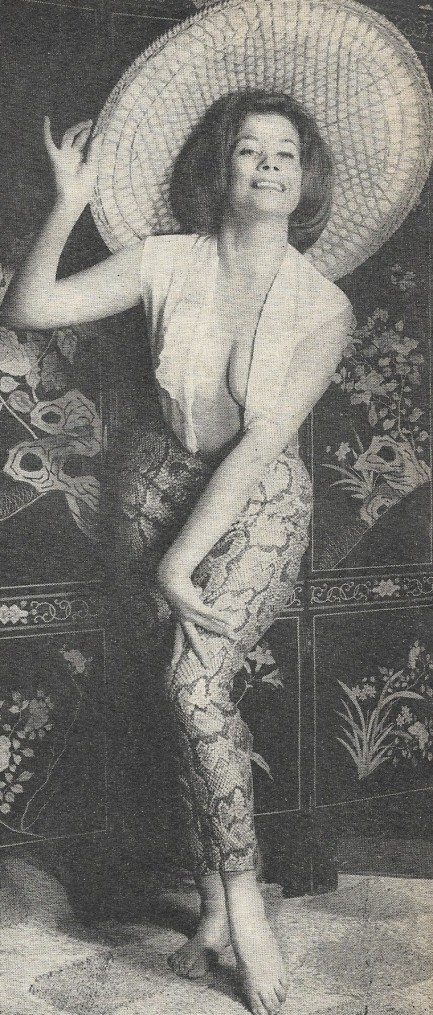 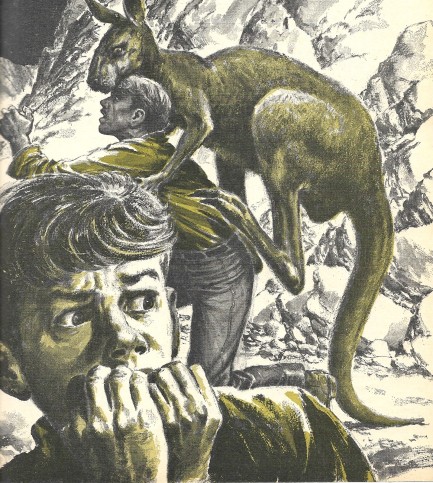 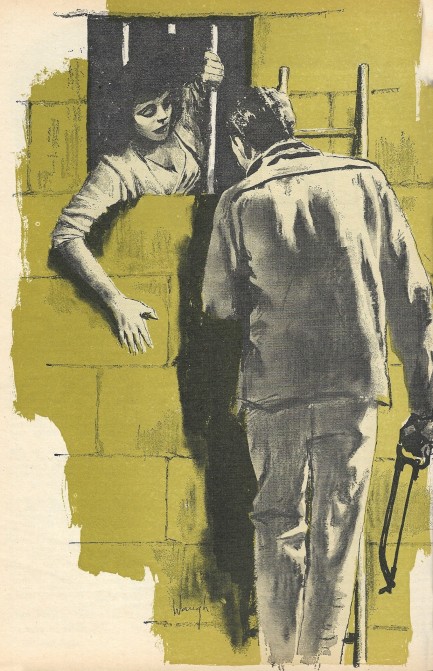 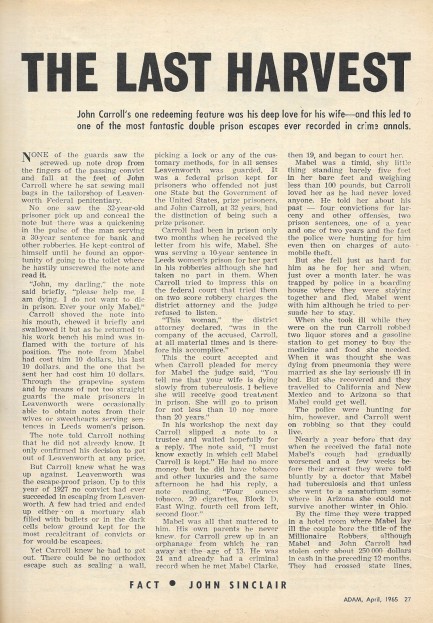 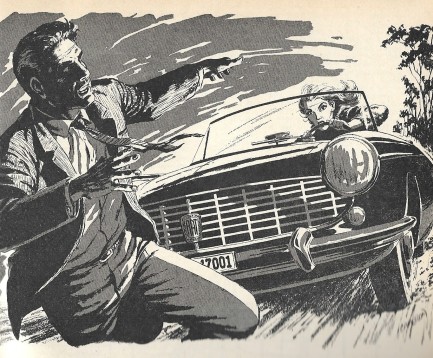 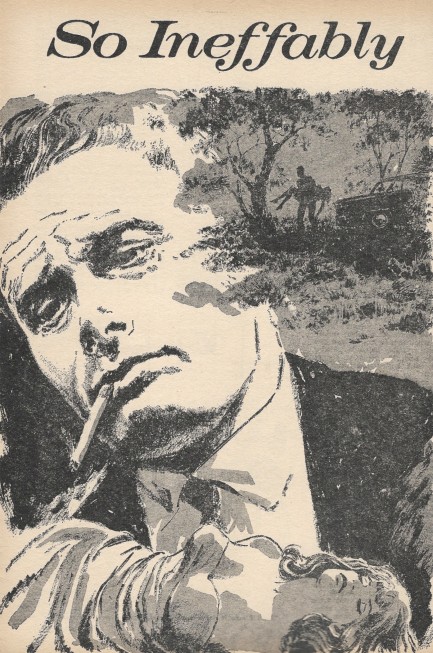 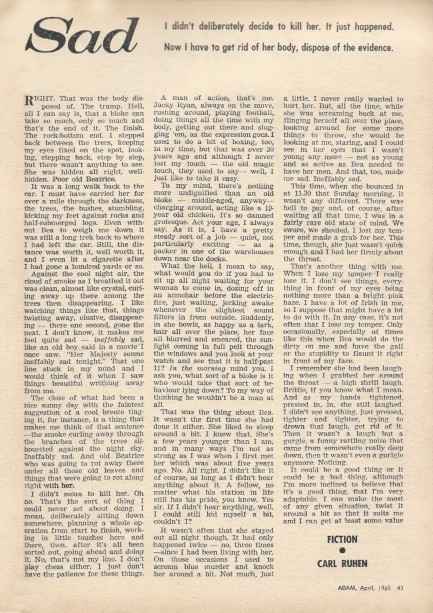 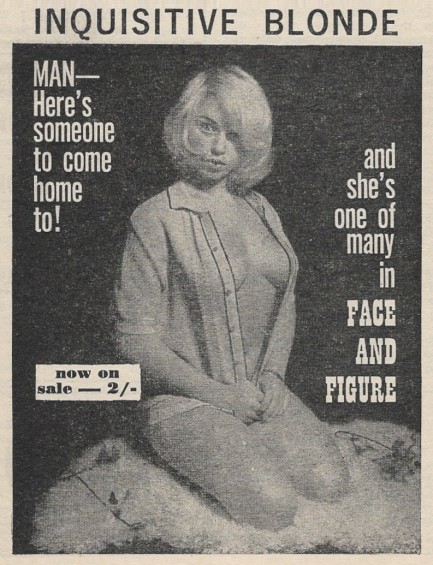
 I see a tiny island! If we make it there we can recite captions from classic castaway cartoons until we're rescued! 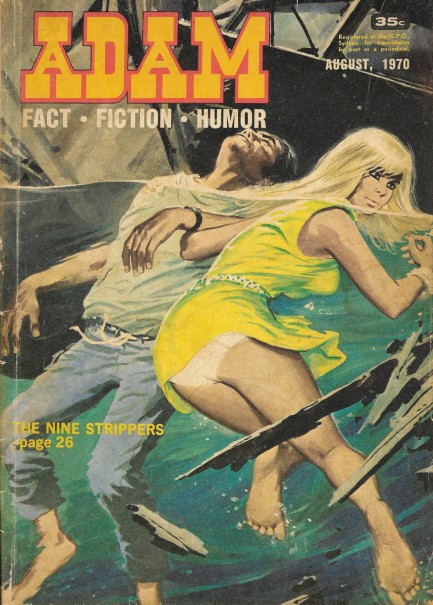
We have another issue of Adam today, with a fun cover illustrating Ron Rawcliffe's story, “The Nine Strippers.” Obviously, with a title like that we had to read it, and it deals with a charter boat captain hired to take nine exotic entertainers upriver into the wilderness under mysterious circumstances, and it turns out they've been hired by an organized crime cabal. When the gathering is raided by federal police the captain must escape intact with bullets flying, strippers fleeing, and mafiosi trying to hijack his boat. Also in this issue of Adam you get fiction by Leonard Calhoun and John P. Gilders, plus a bit of boxing and a lot of models, including German born Israeli actress Helena Ronée just below, and French actress Catherine Rouvel in the feature "She Wins Them All." And circling back to the cover and its two potential castaways, look forward to this: we have another set of castaway cartoons coming up.
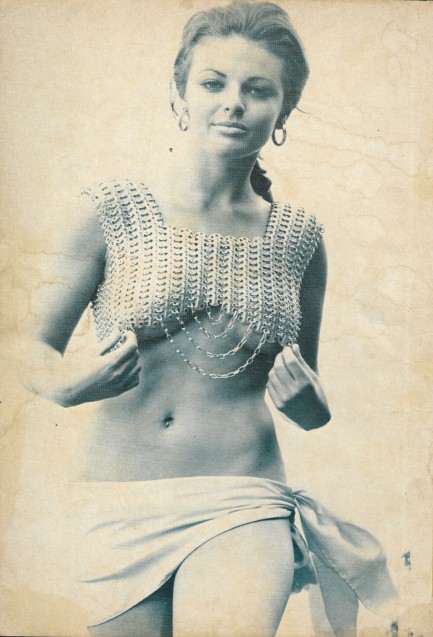 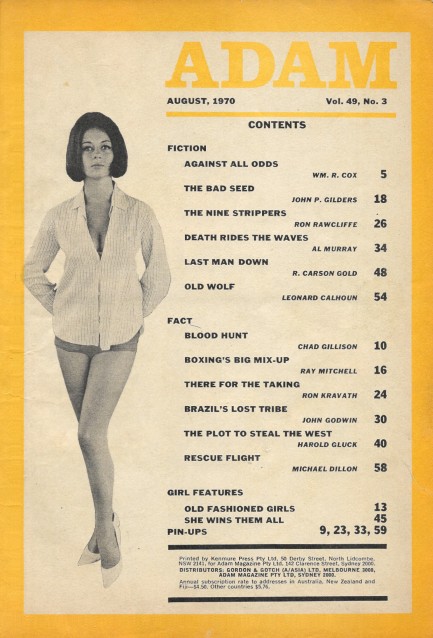 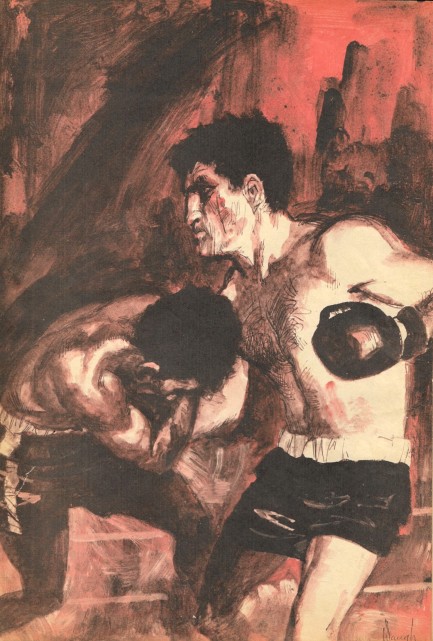 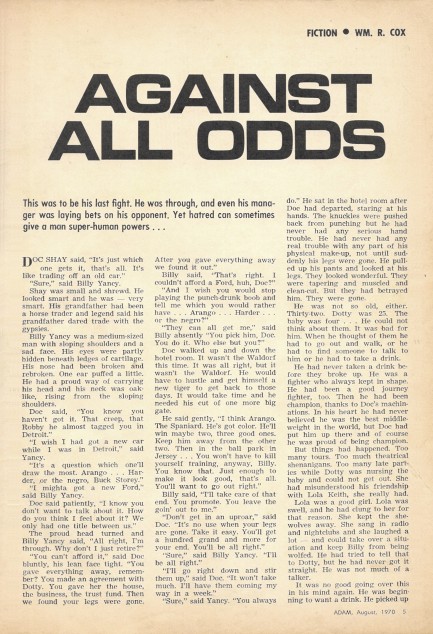  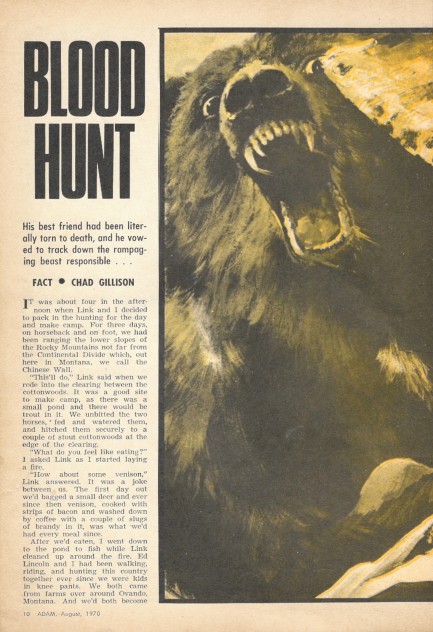 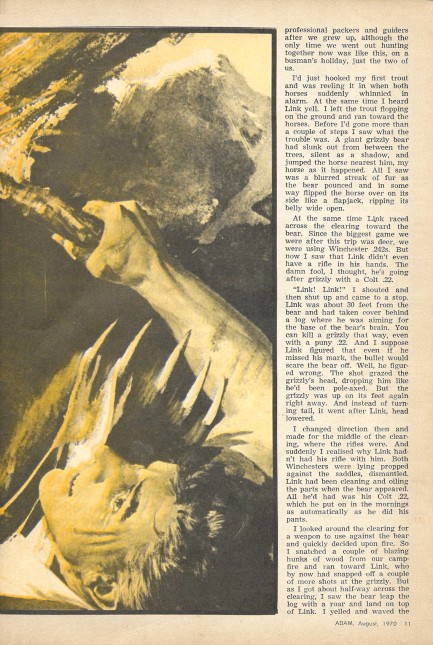 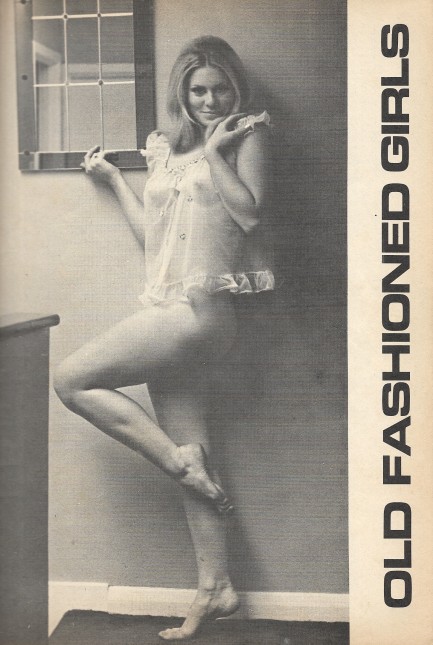 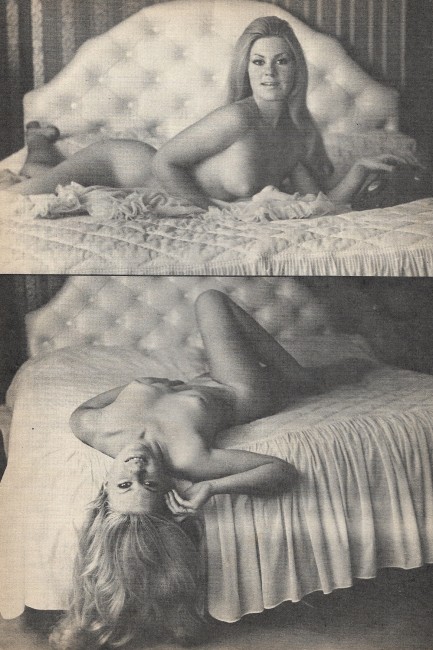 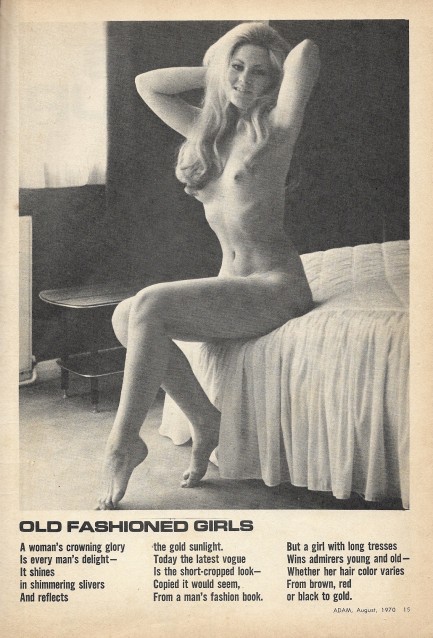 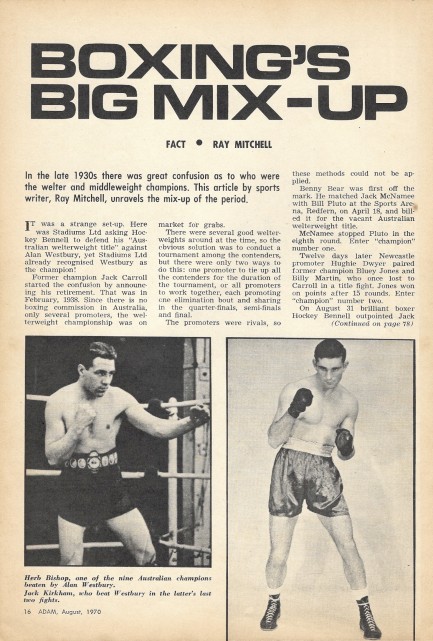 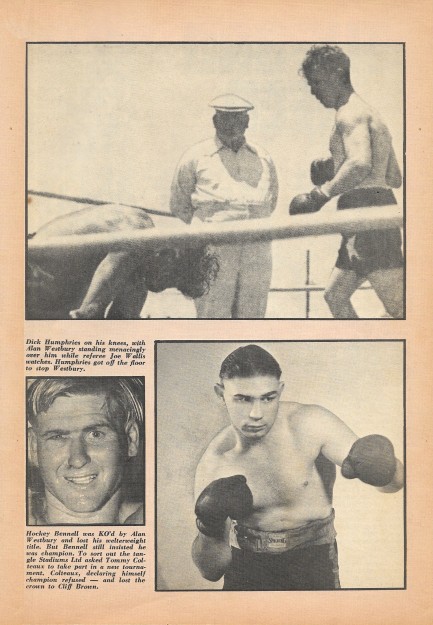 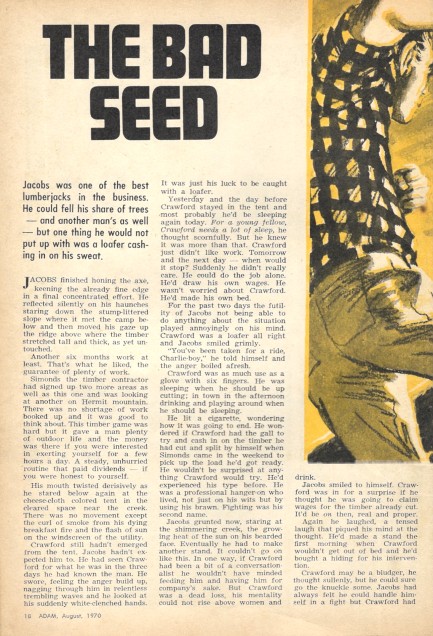 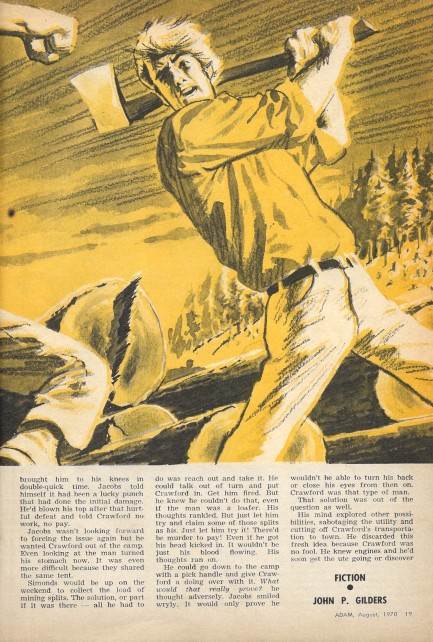   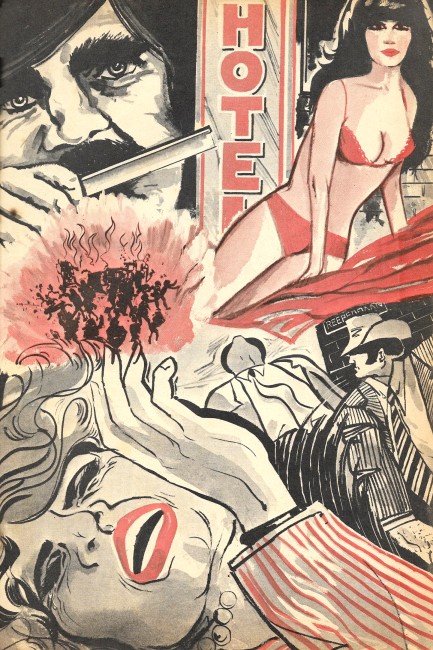  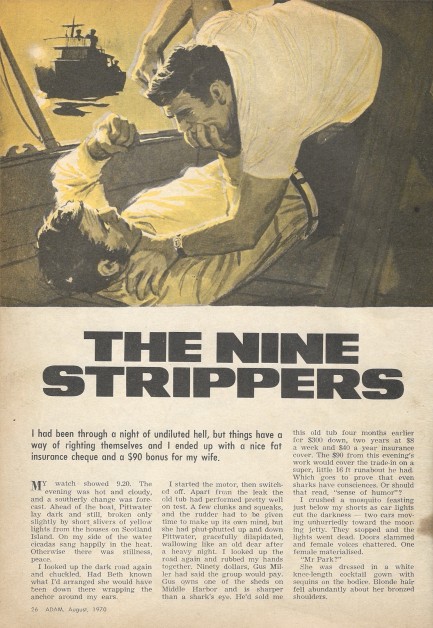 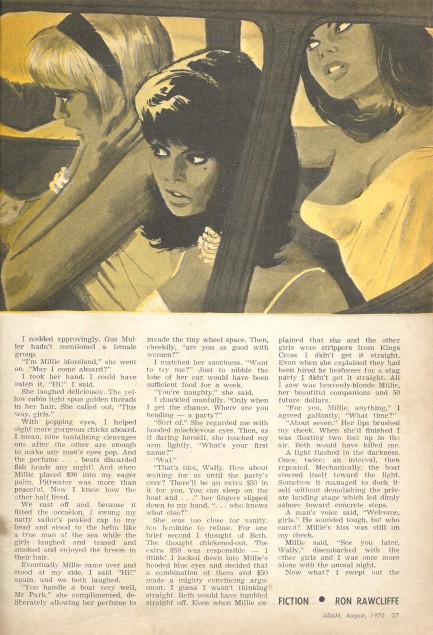 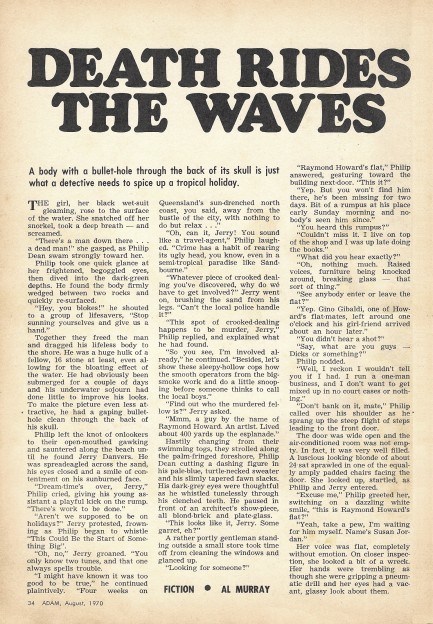 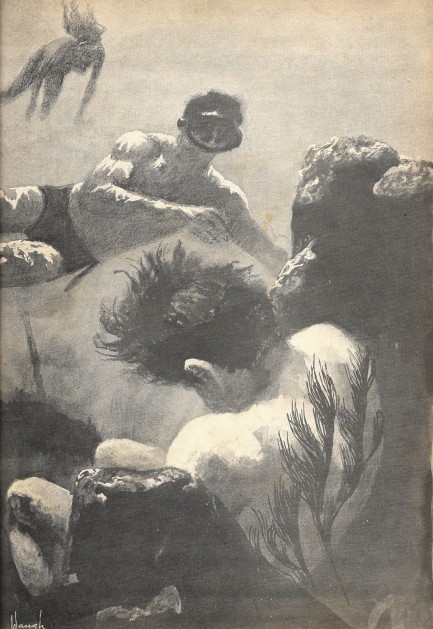 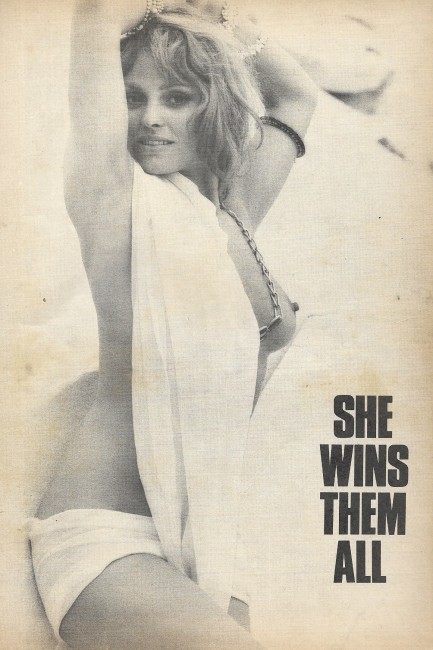    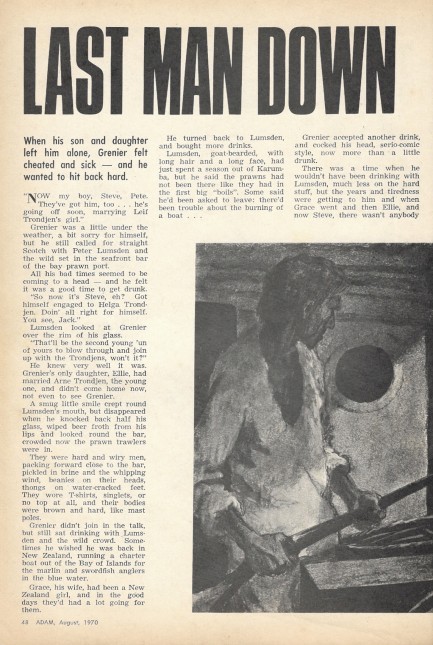 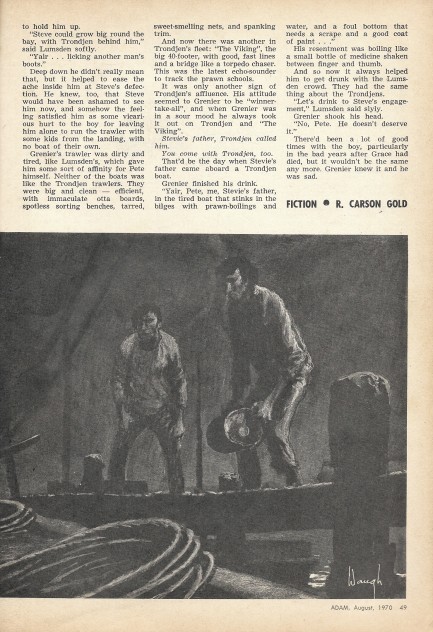 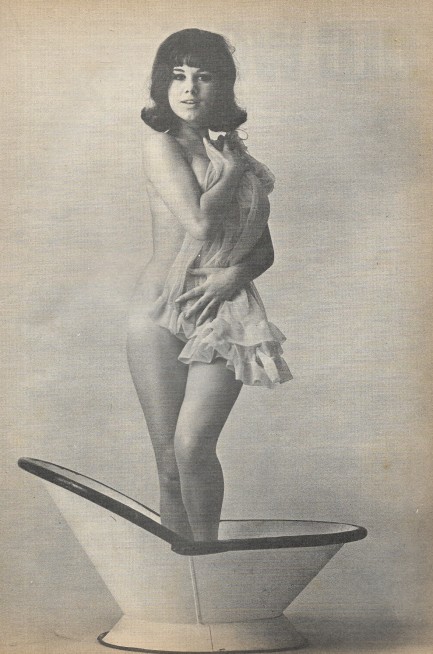 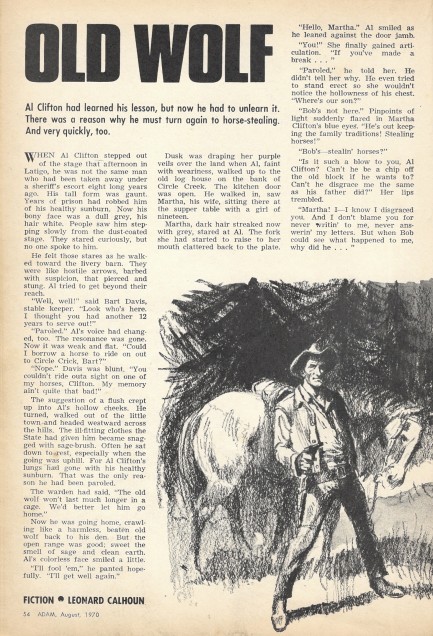 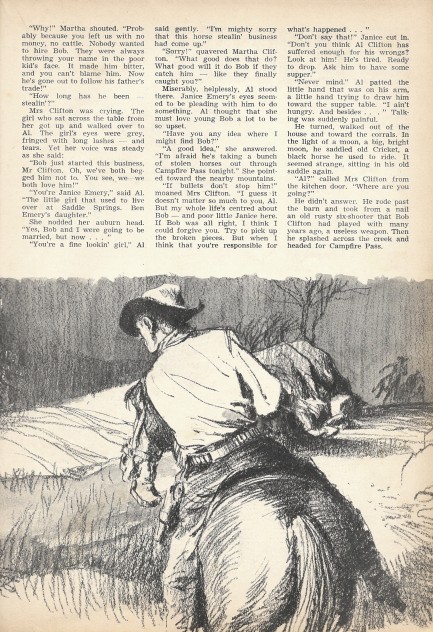 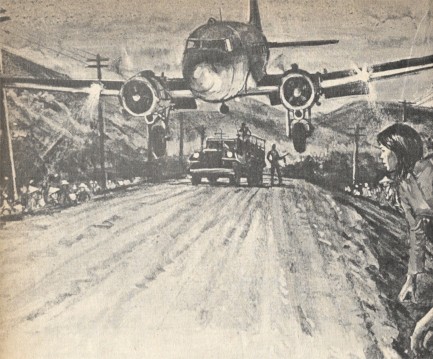 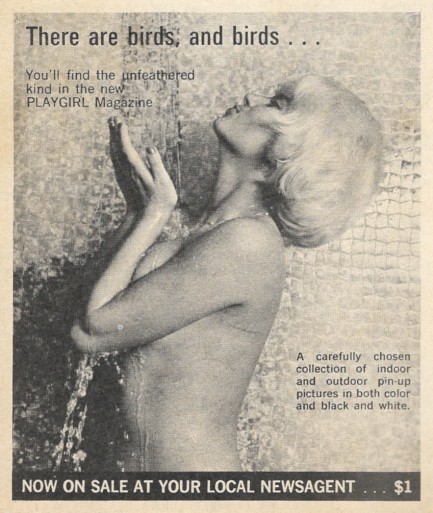 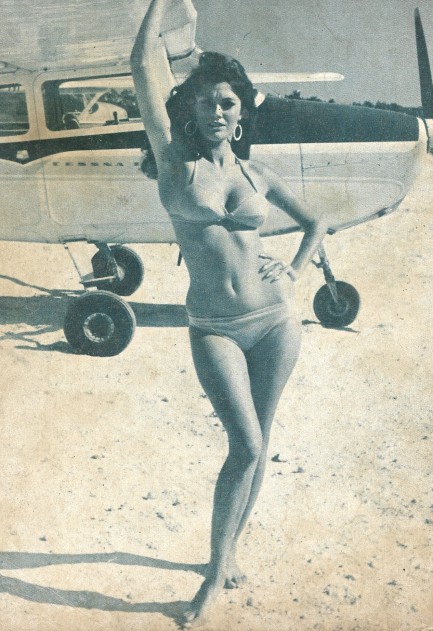
 Interesting, full of stories, and very well read. 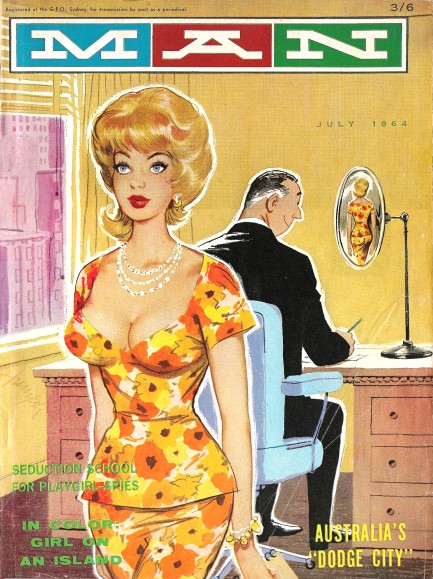
As much as we love K.G. Murray Publishing's men's magazine Adam, especially during its early 1970s period, we have to admit that the succinctly titled Man is probably the prettiest magazine ever produced by the Aussie company. Today's issue from this month in 1964 is an example. The colors explode from the pages. The art, some of which is by Jack Waugh and the single-monikered Humph, is detailed and lovingly rendered. The format is large (so much so that we had to scan every page you see here in two parts and assemble them in GIMP). And the stories are pure male wish fulfillment.
The magazine was such a popular offering that K.G. Murray even published a pocket edition, which we've already shown you. In today's full-sized edition, as always you get several beautiful models, including one supposedly named Van Leman posing on a sea turtle like it's a coin-operated ride outside a Kwik-E-Mart. We imagine the turtle wasn't happy about it, but how can you tell? It's a turtle. They never look happy. Man also provides a few celebrity shots, including of British actress Gloria Paul, and Danish flash-in-the pan Heidi Hansen. All that and more in many scans down under.
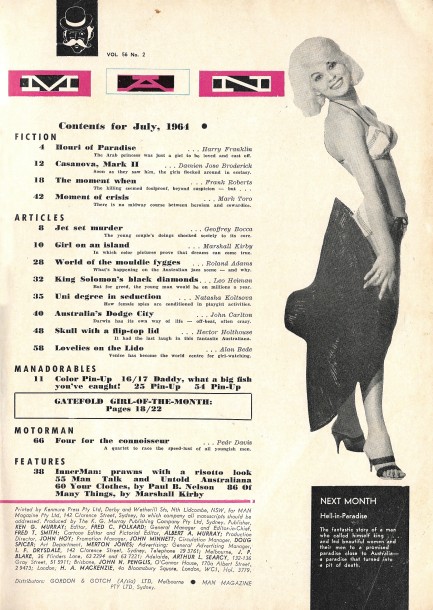 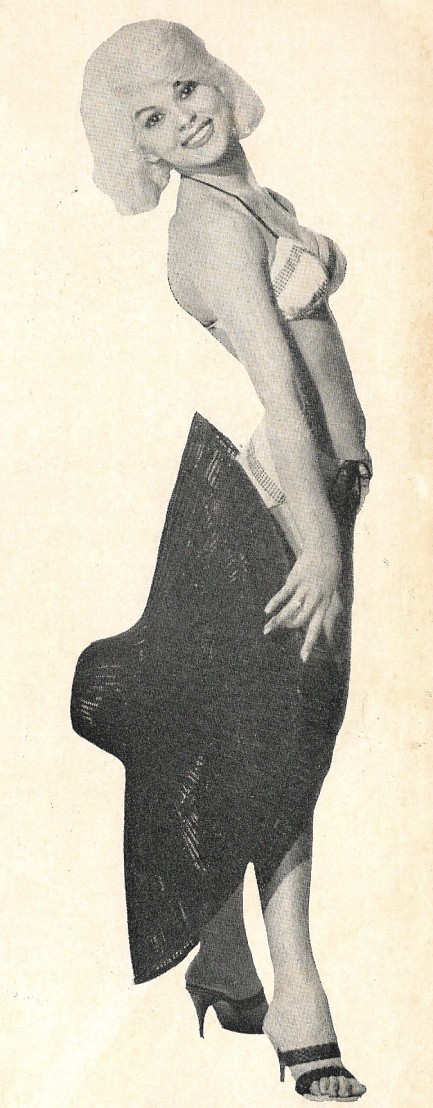 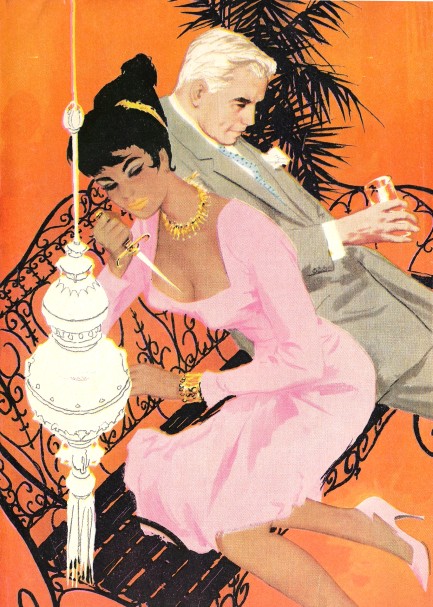 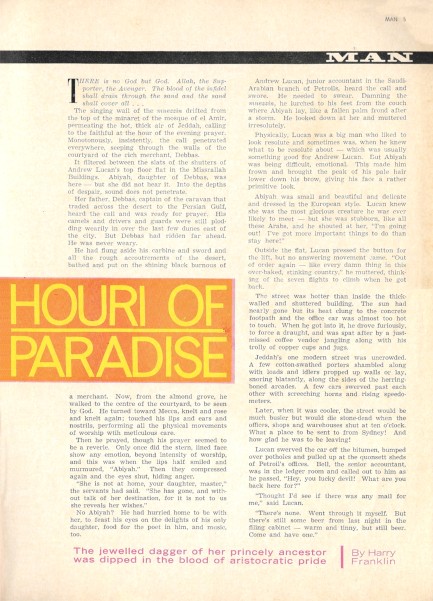 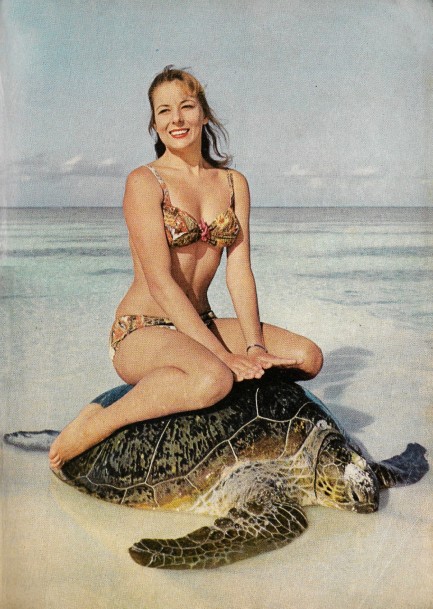 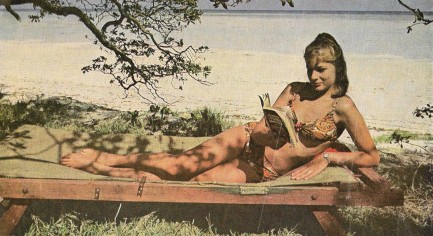 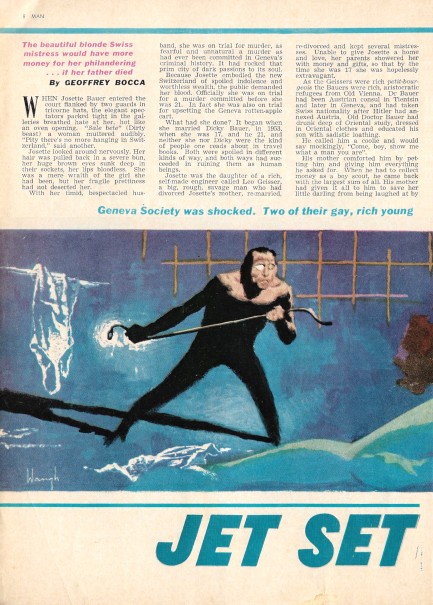 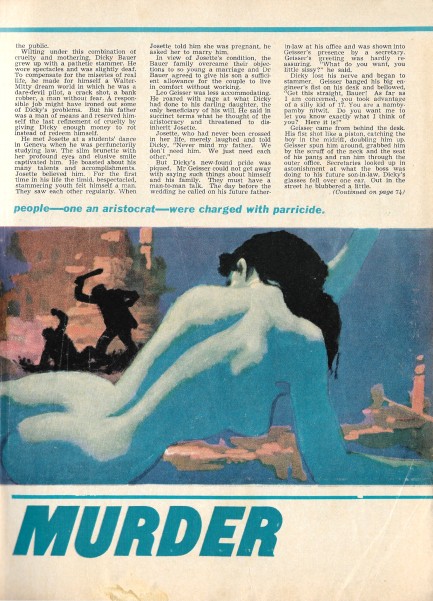 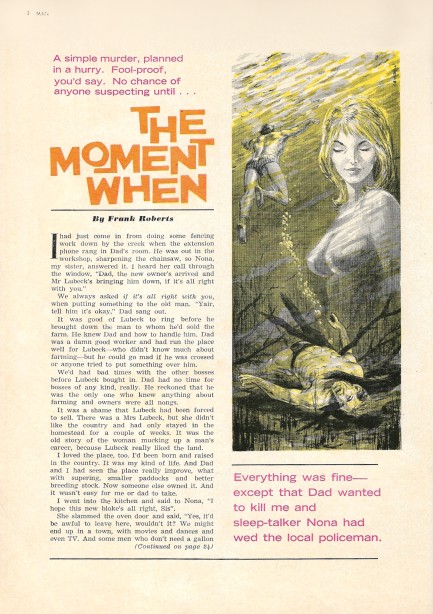 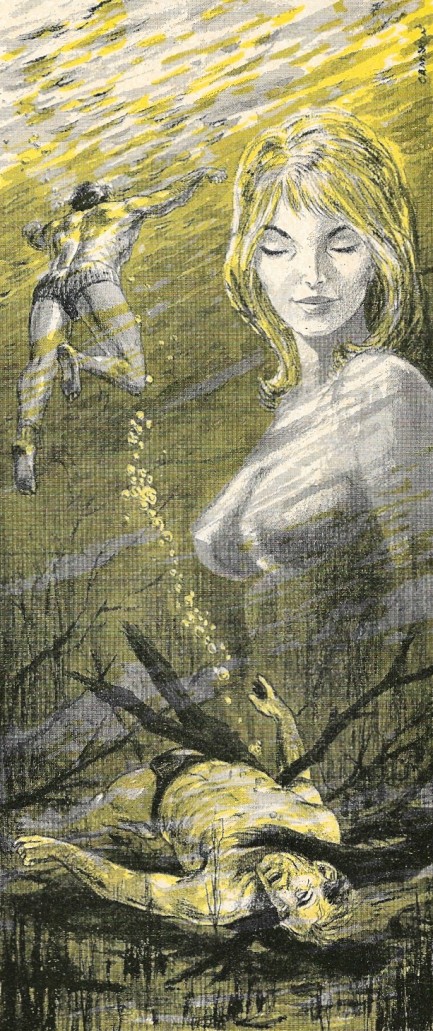 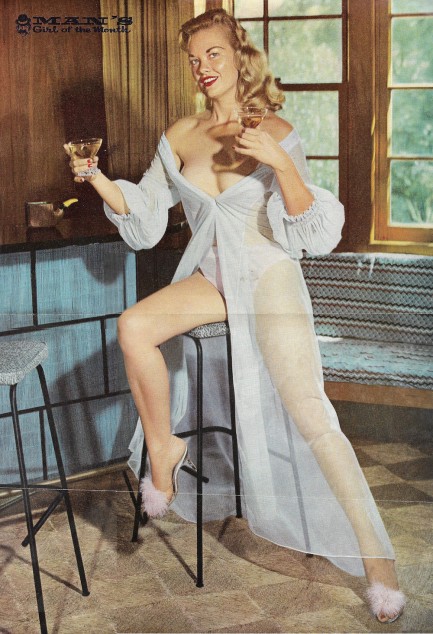  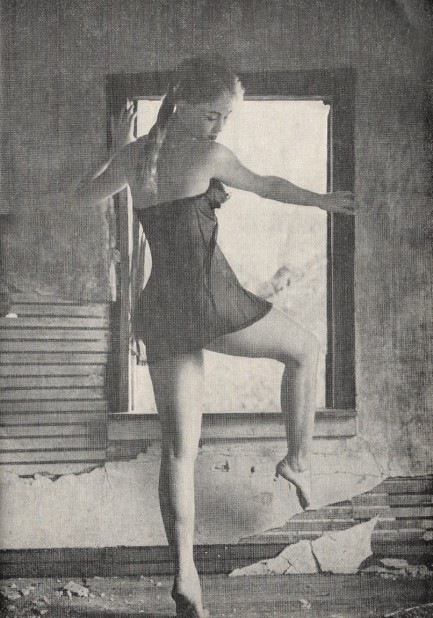 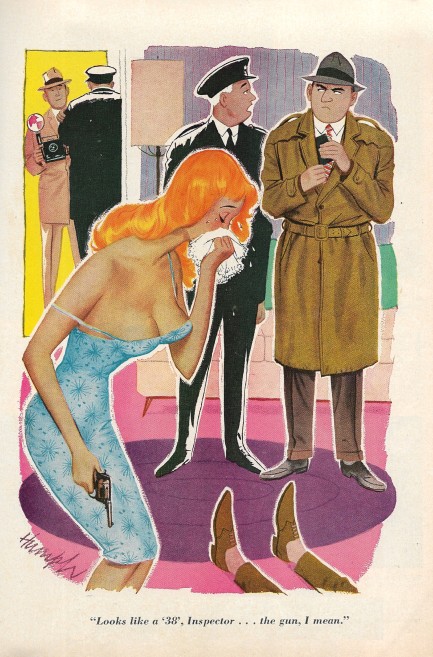 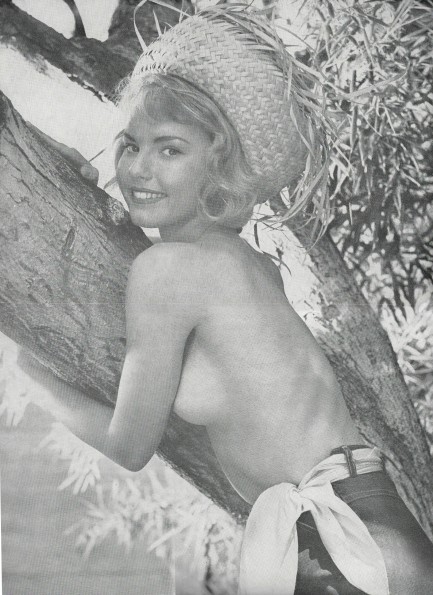 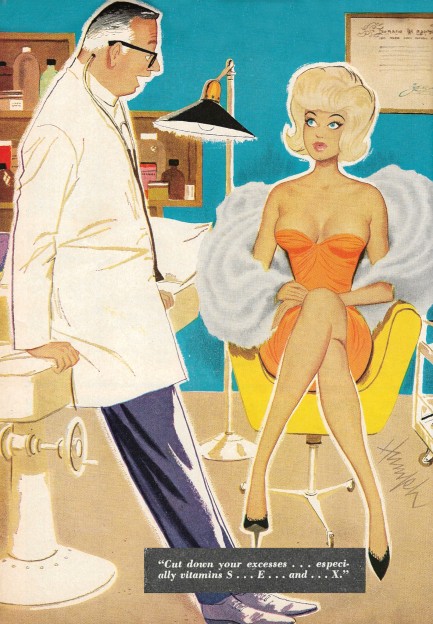  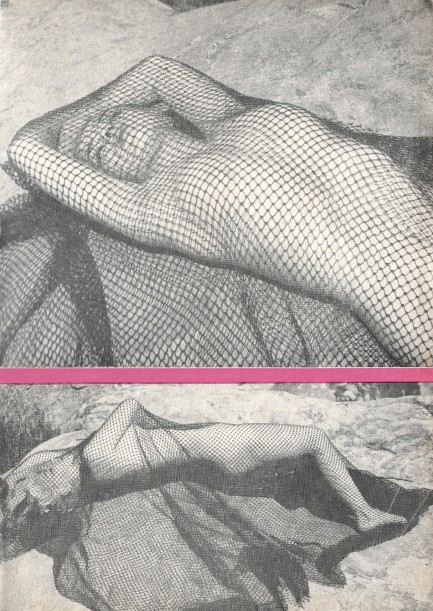 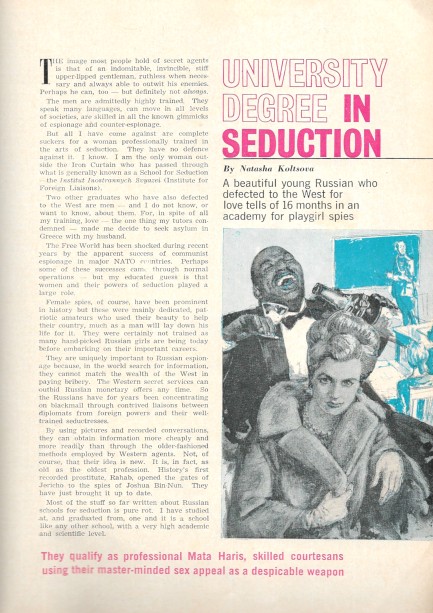 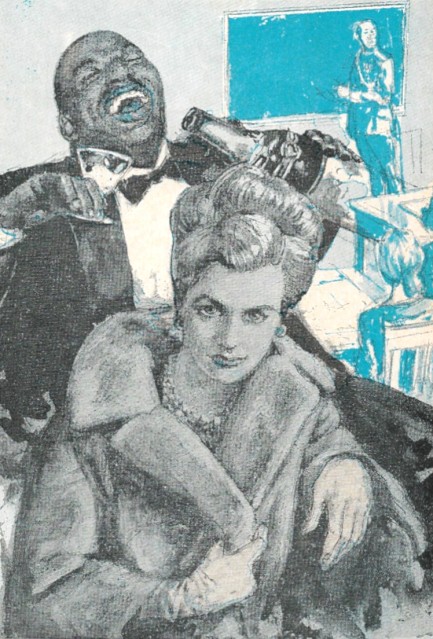 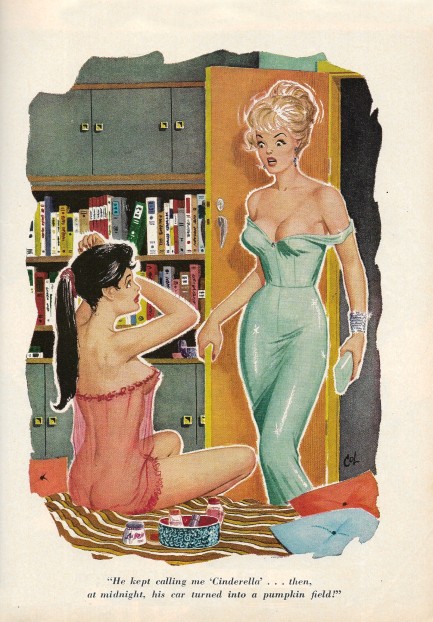 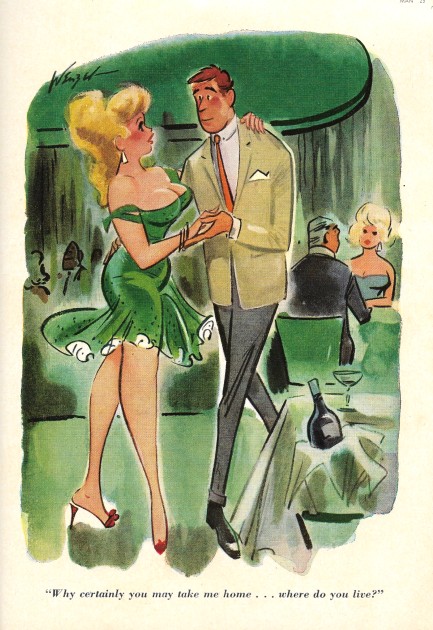 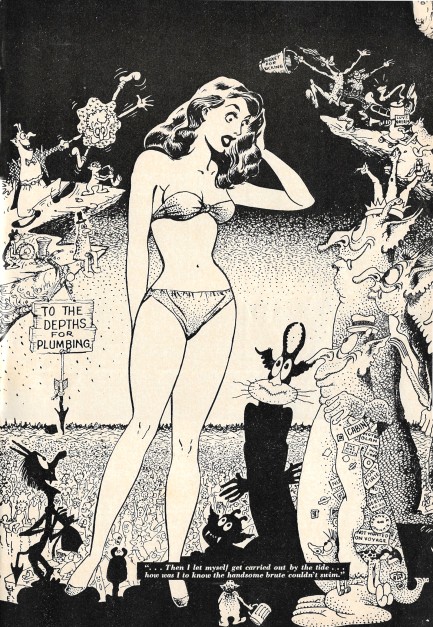 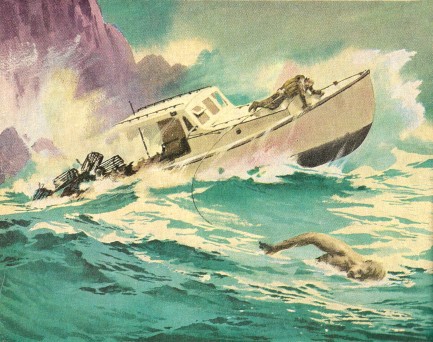 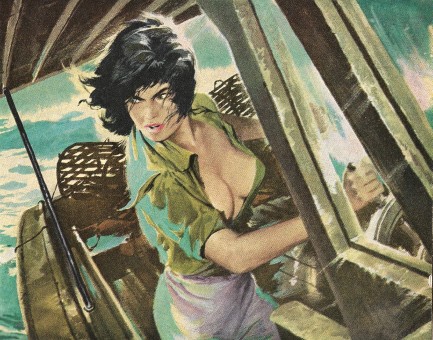 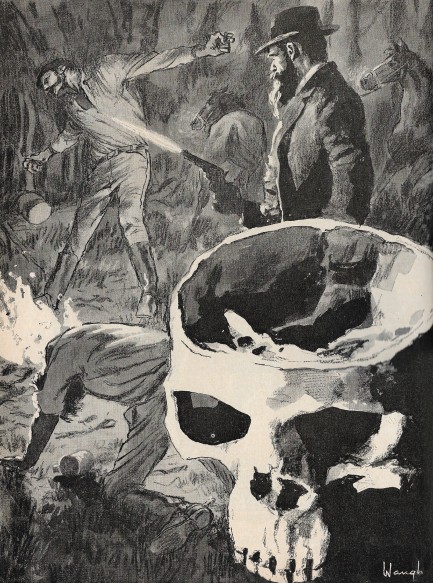  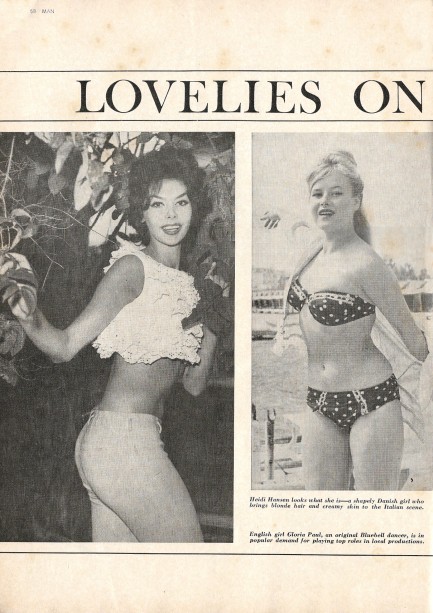  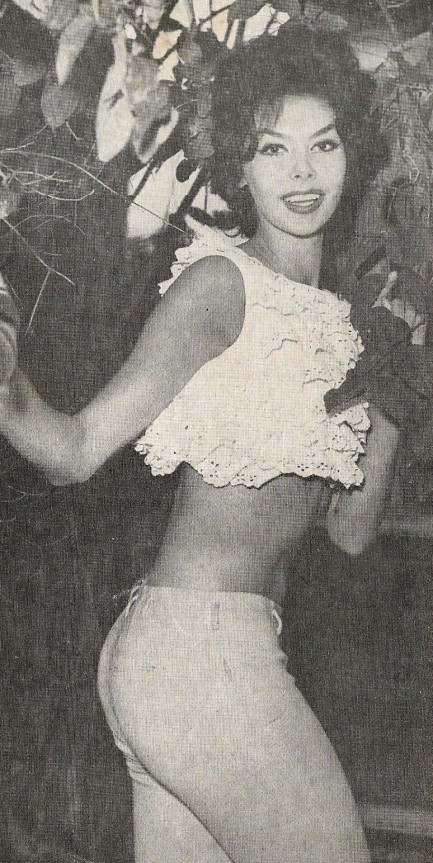 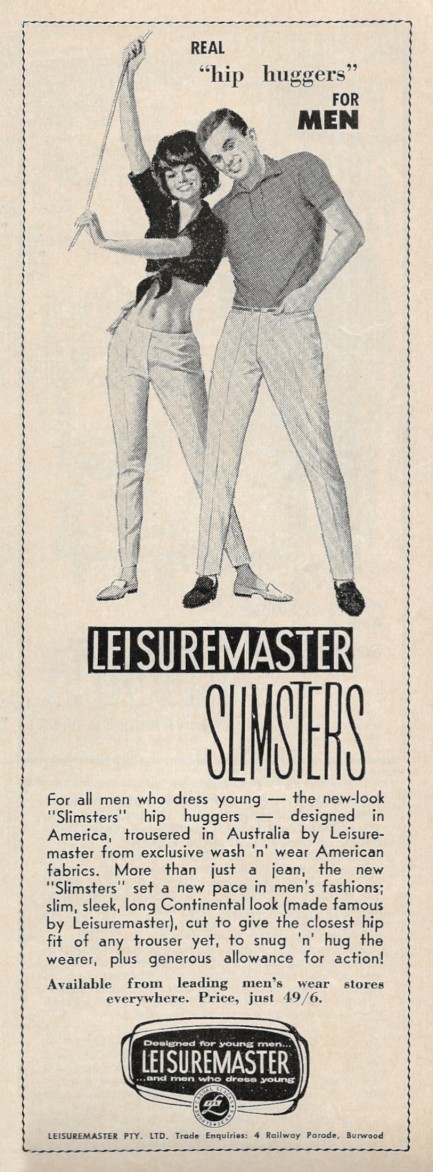 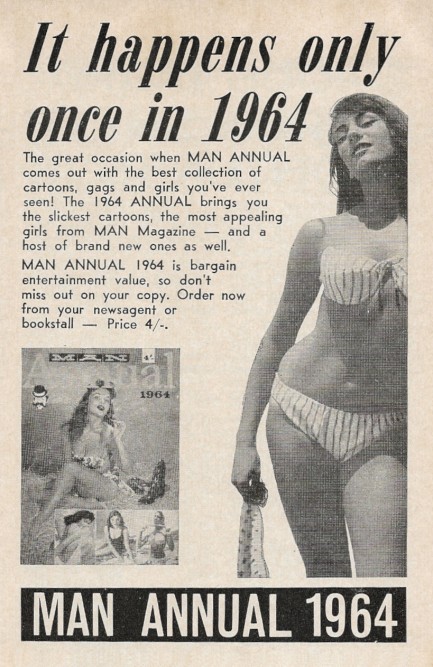
 The story's on the verge of ending badly for all of them. 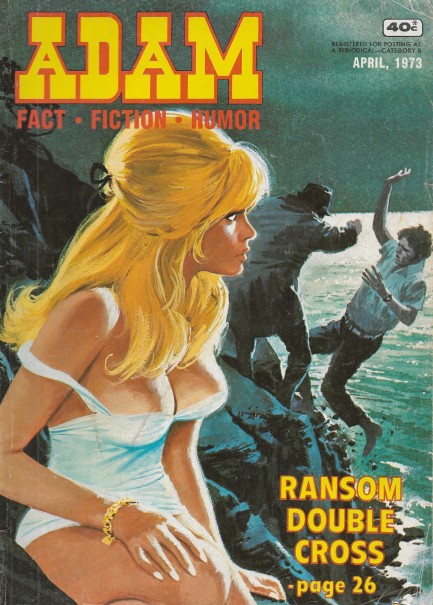  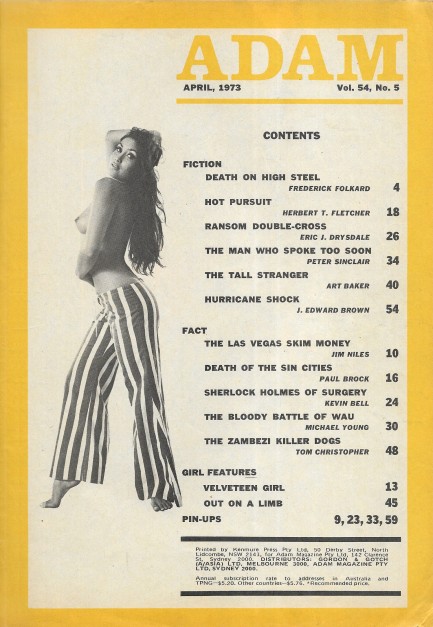 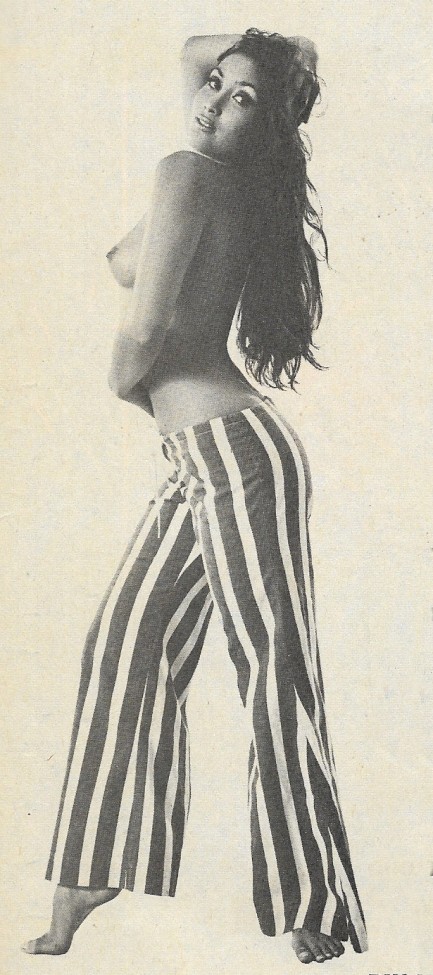 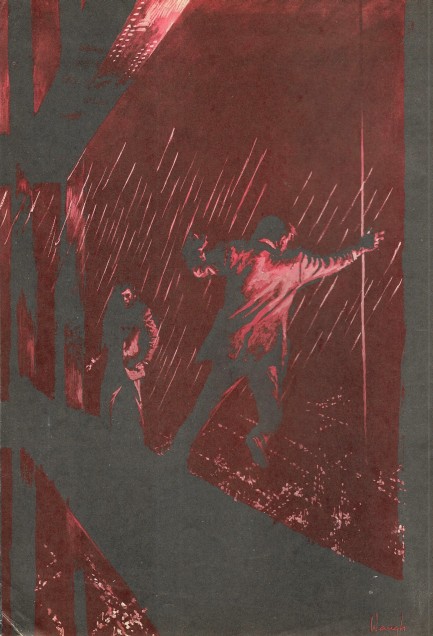 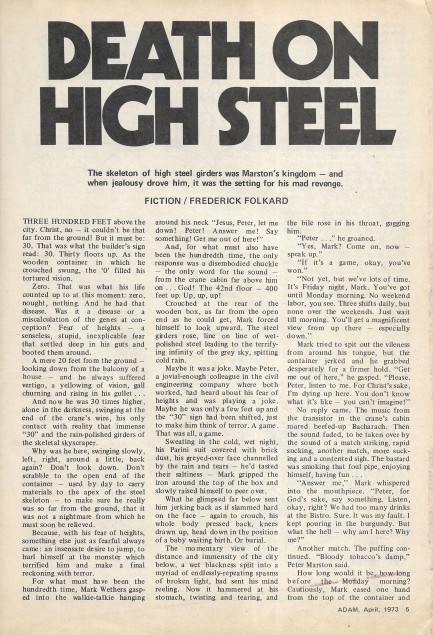  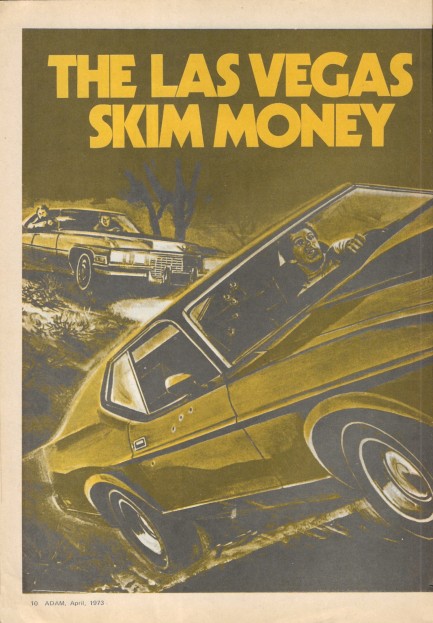 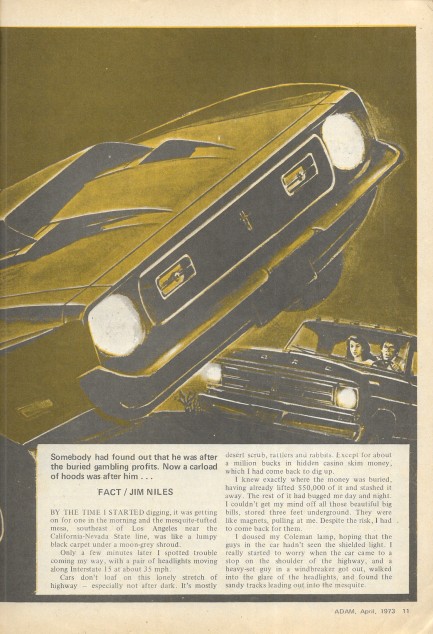  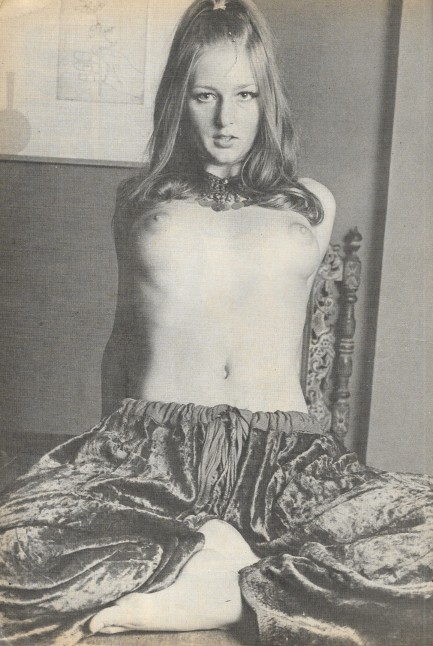  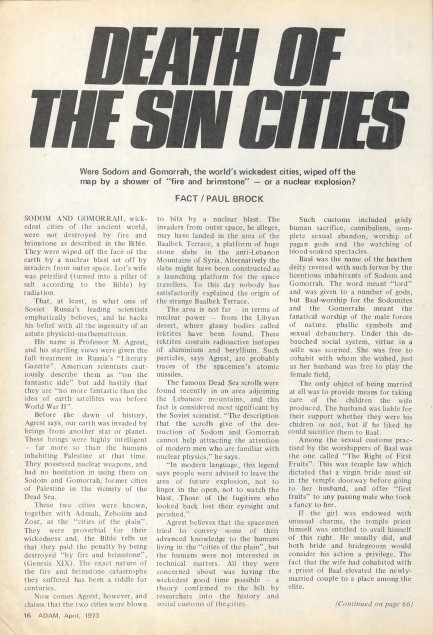 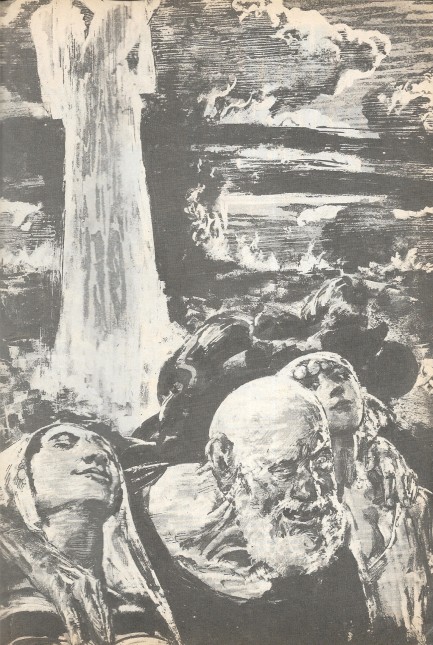 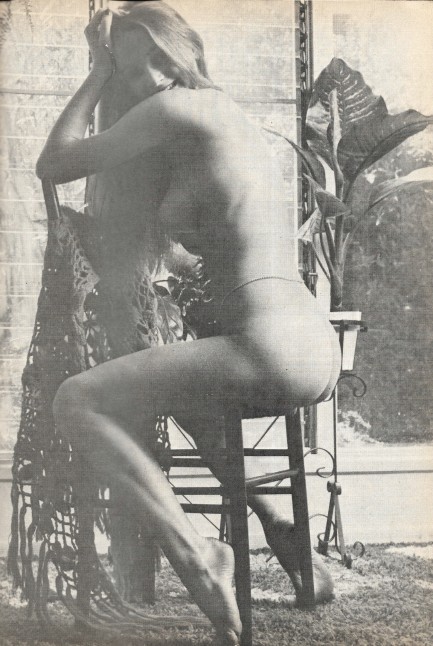 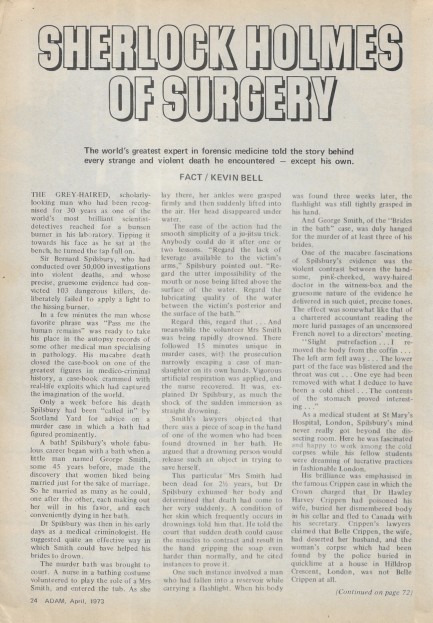 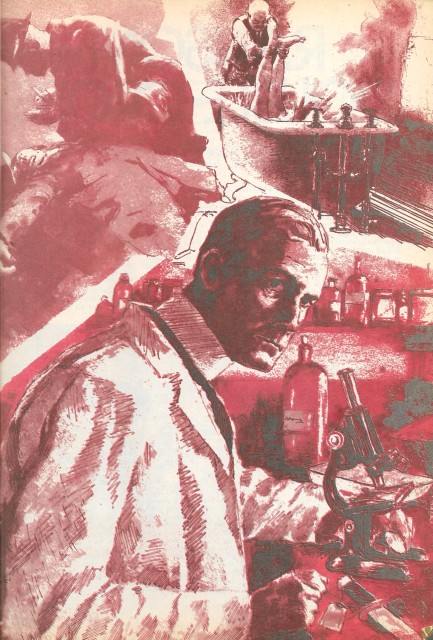 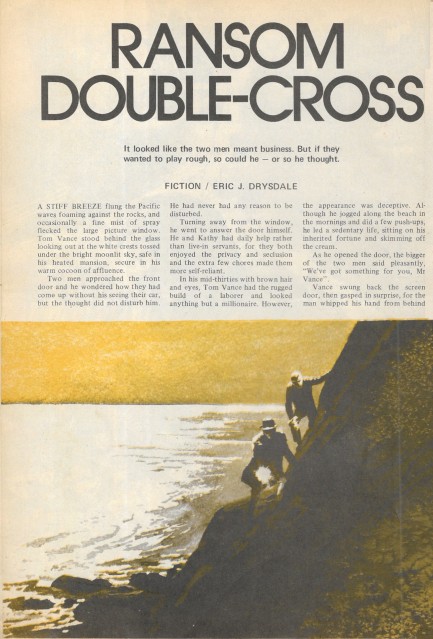 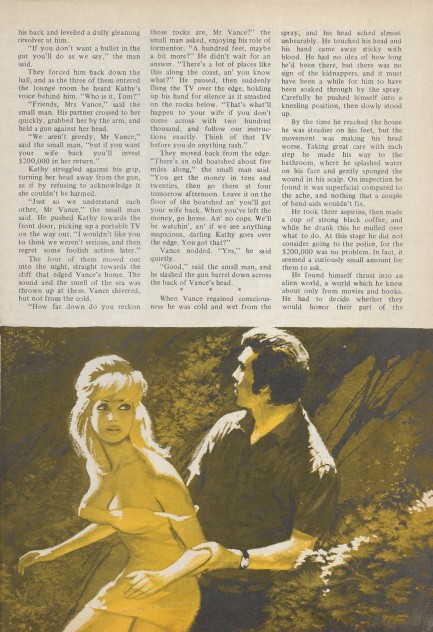 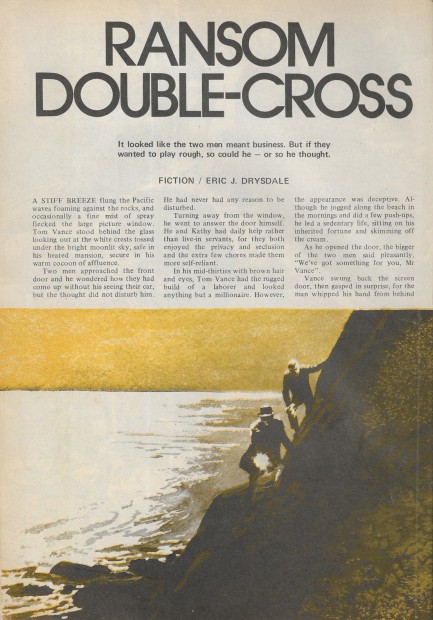 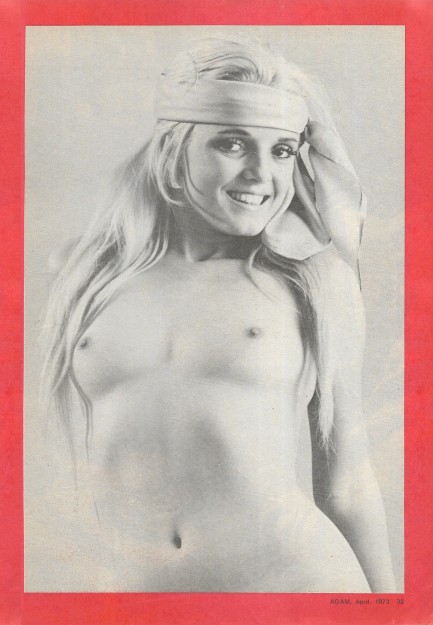 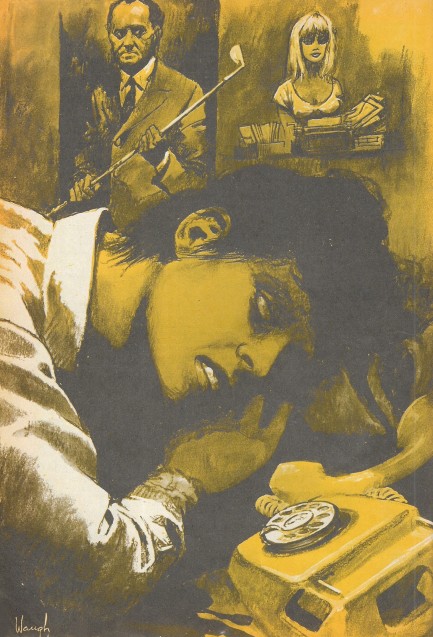 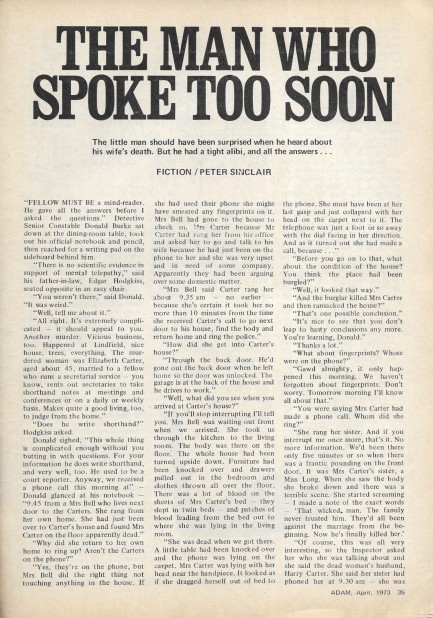 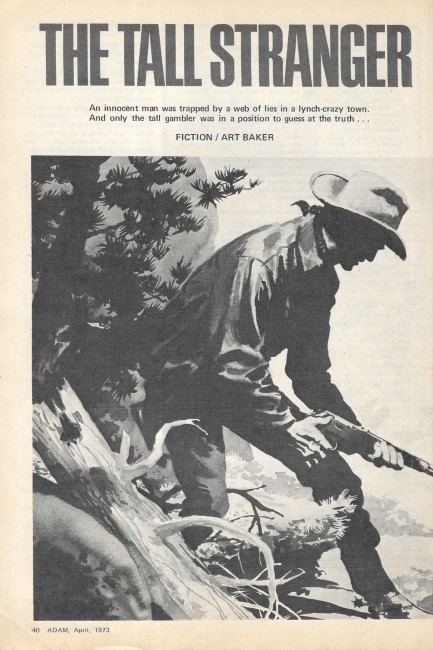 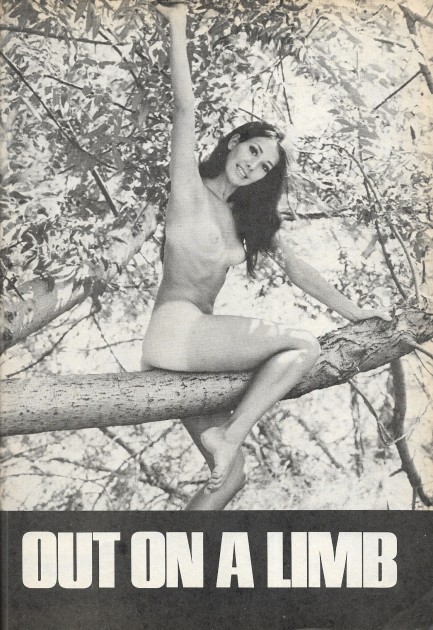  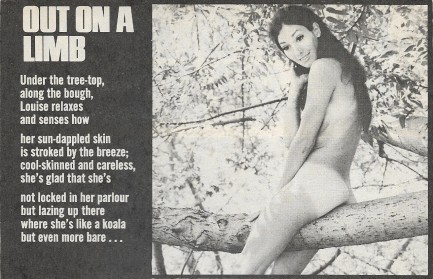 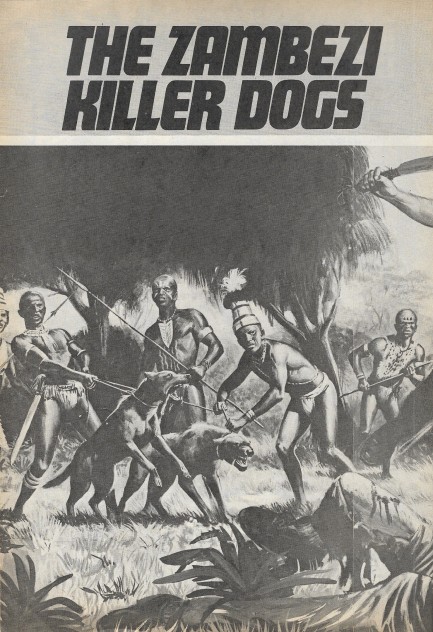 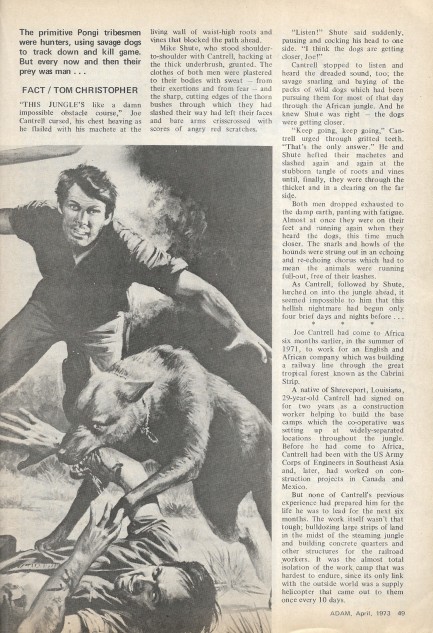 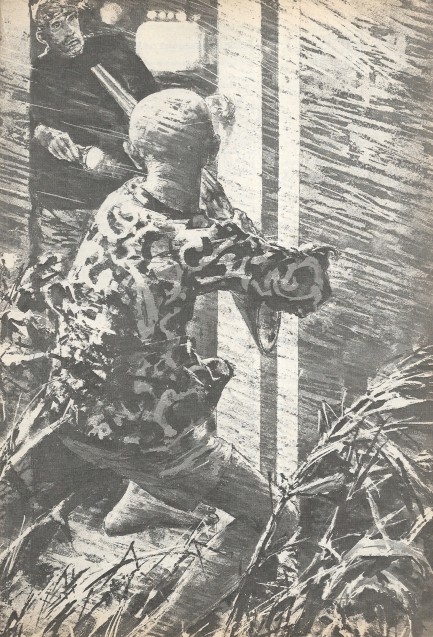  
The above issue of Adam once again features two men about to fall to their deaths while fighting. The magazine used this idea often, including on our last example. The art, which is probably by Jack Waugh, illustrates Eric. J. Drysdale's tale, “Ransom Double-Cross,” about a rich man whose wife is kidnapped for $200,000 ransom. He later learns that she's in on the scheme and wants to have him murdered so she can inherit everything. But you can't keep a good man down. His wife goes over a cliff, as do her two accomplices. The inside front cover of this issue is graced by Italian actress and occasional space femme Ornella Muti, while the rear cover model, just above, is familiar, but unidentified for now. We'll have more from Adam later.
 Some men go head over heels for a woman. 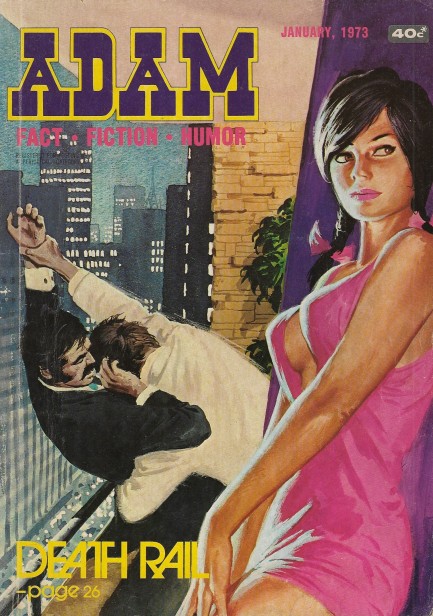
We have another of issue of Adam magazine for you to feast your eyes upon. This one was published in January 1973, and the cover illustrates the story, “Death Rail,” in which author Jack Ritchie asks the eternal philosophical question, “What do men think about when they are falling?” The answer is probably: how to land on the other guy. And what does a woman think about? In the story she congratulates herself for having inherited everything that belongs to her falling husband, and all just by making him erroneously believe she was screwing his business partner, and luring the two into a balcony fight. And the twist, unrevealed until the last sentence, is that it was all a misdirection play. She actually had been cheating, but with the chauffeur, not the business partner. Pretty good work from Ritchie, and another excellent effort from Adam. 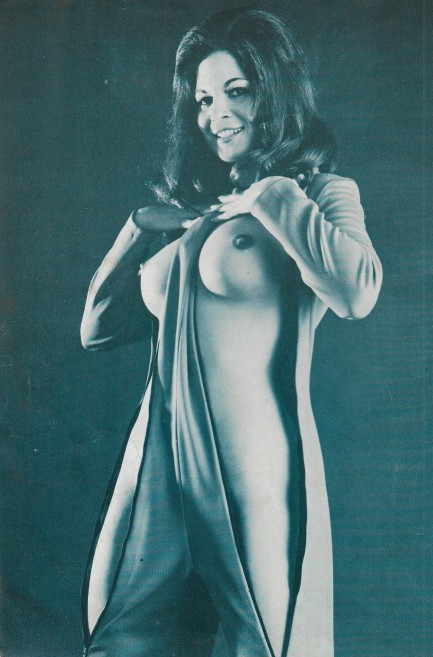 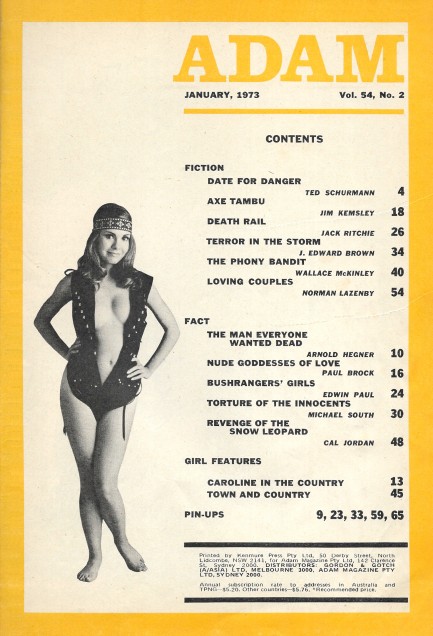 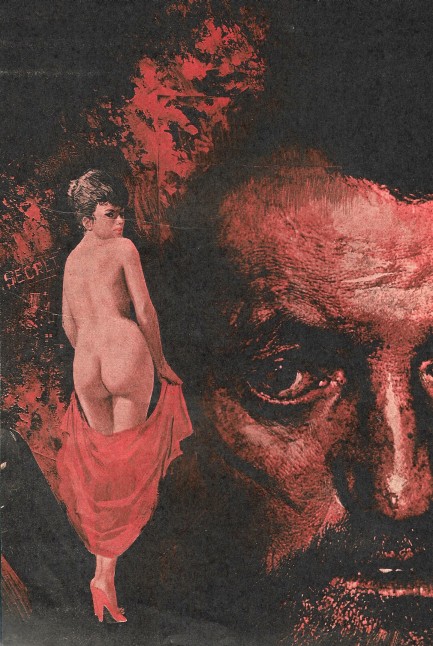 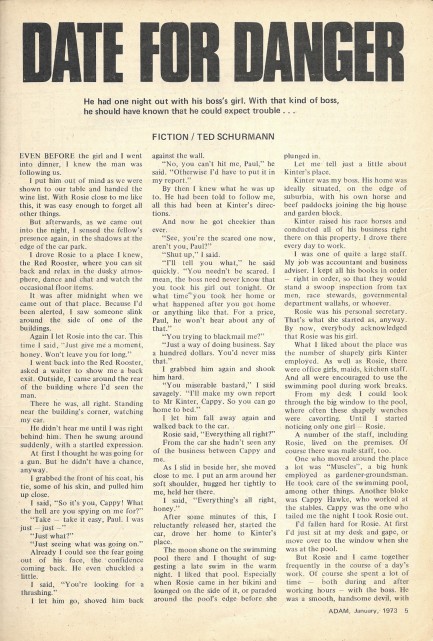 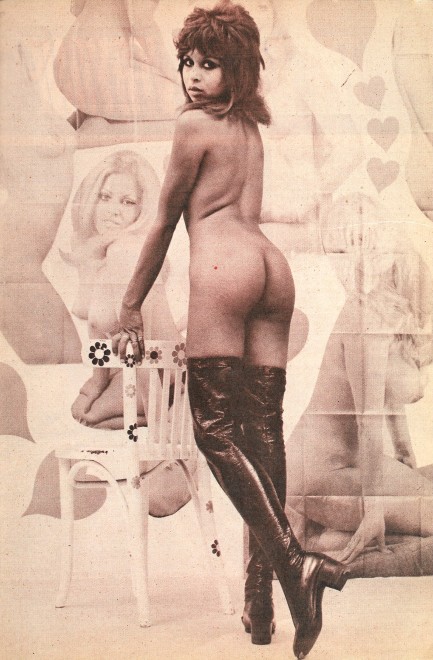 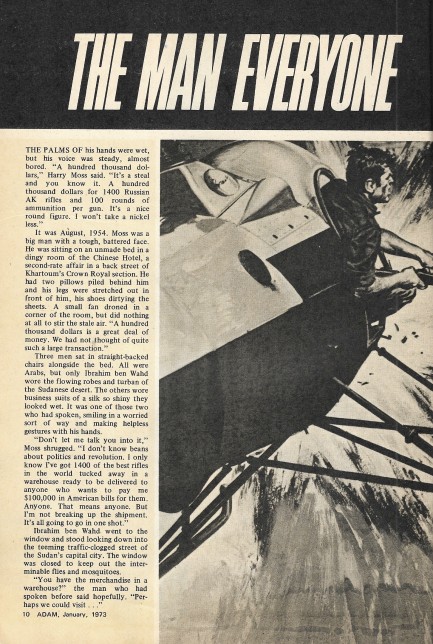 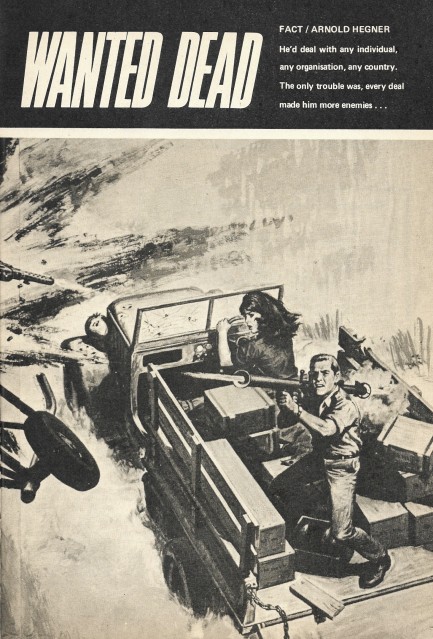 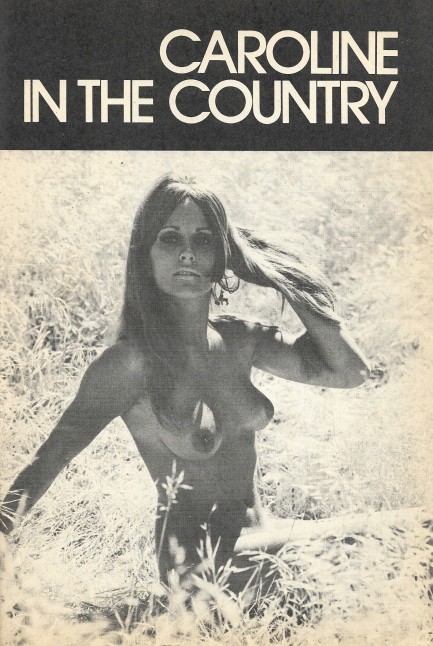  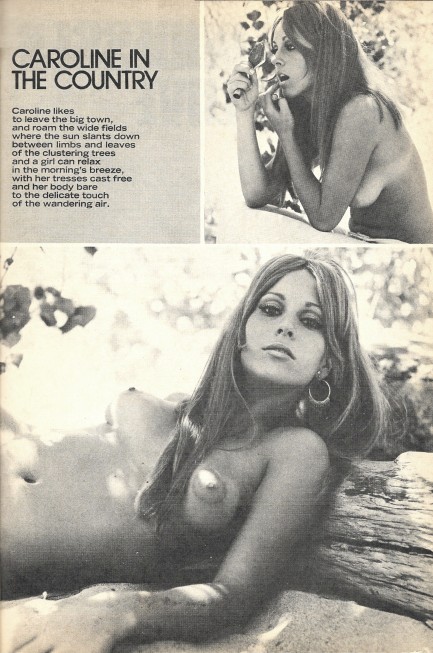  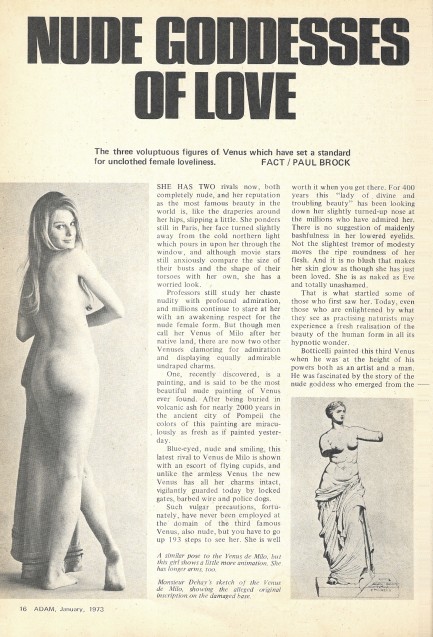 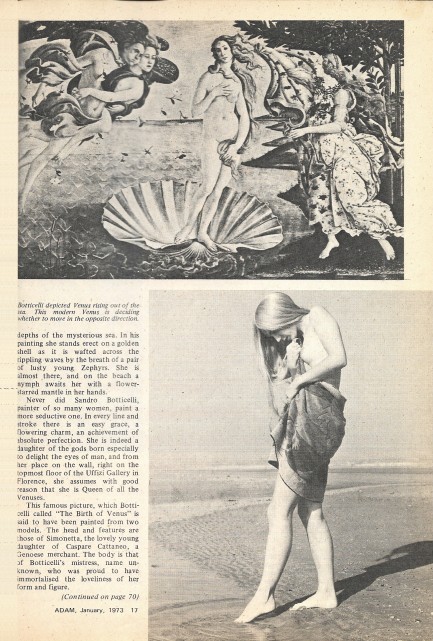  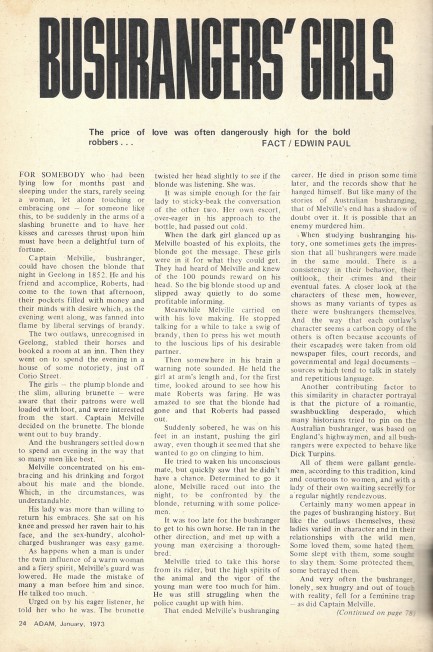 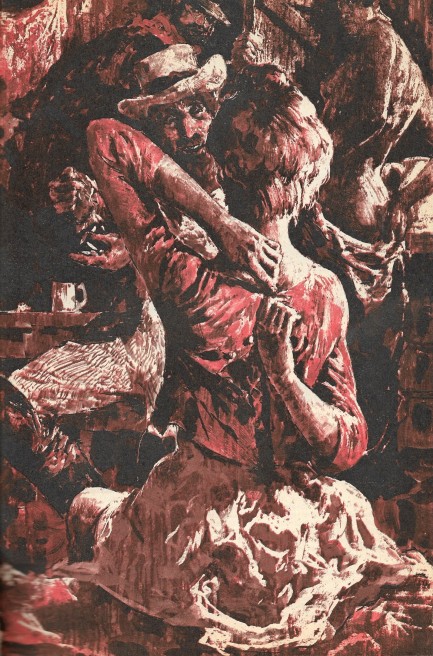 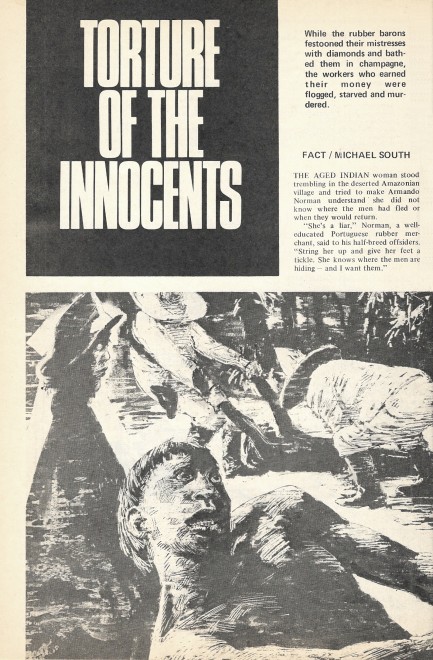 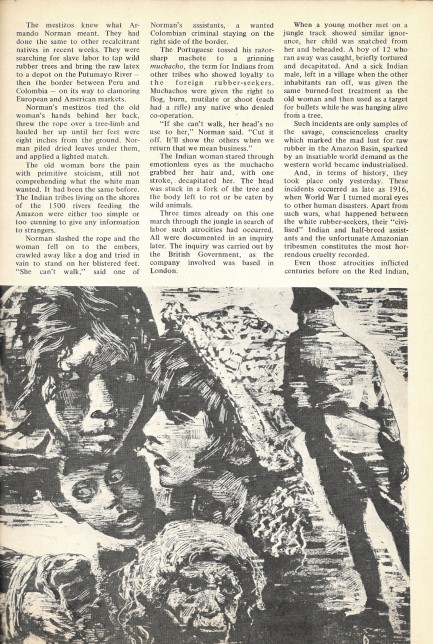  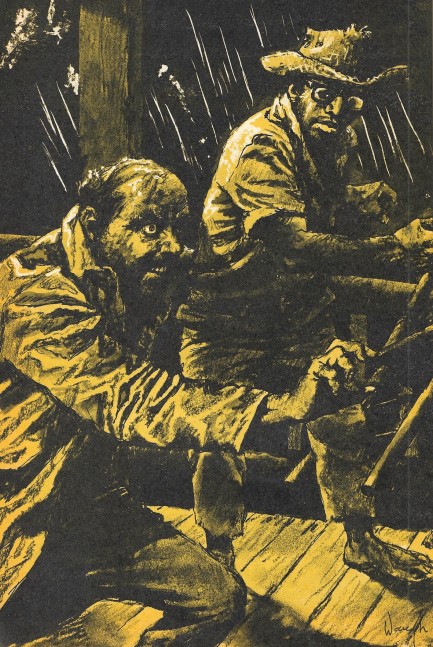 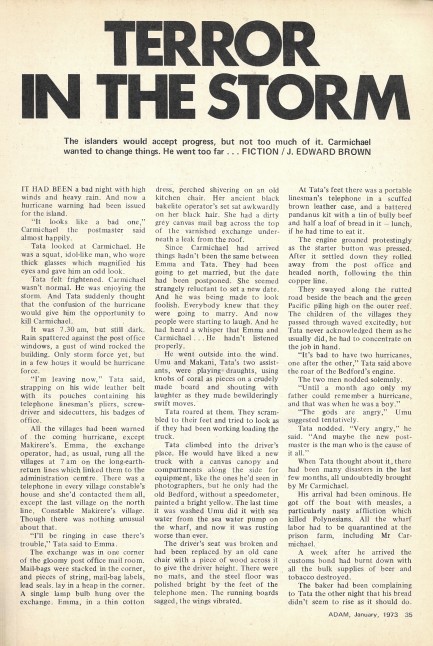 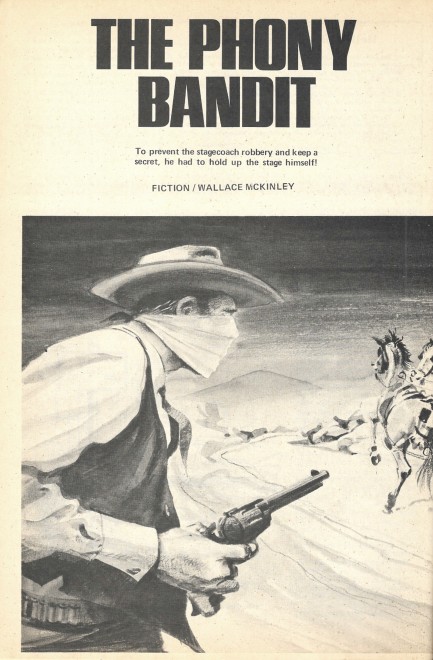 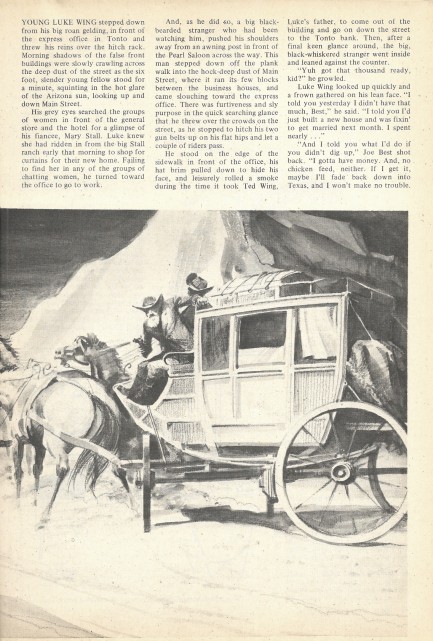 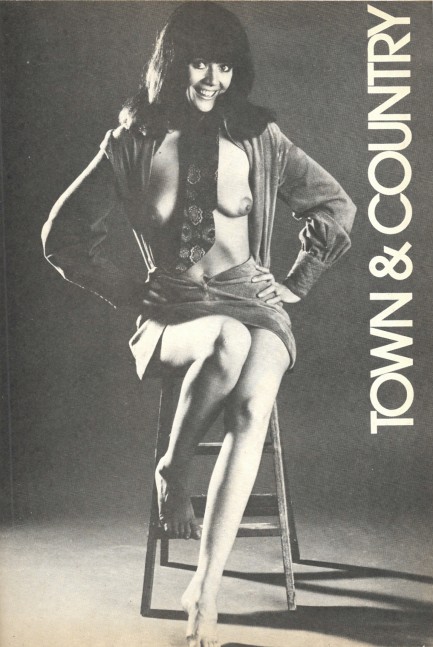  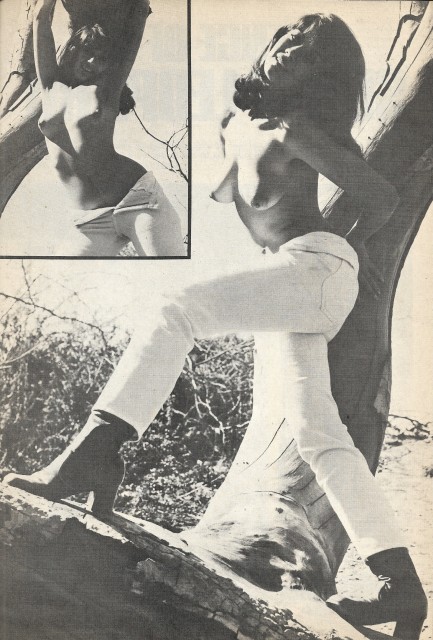 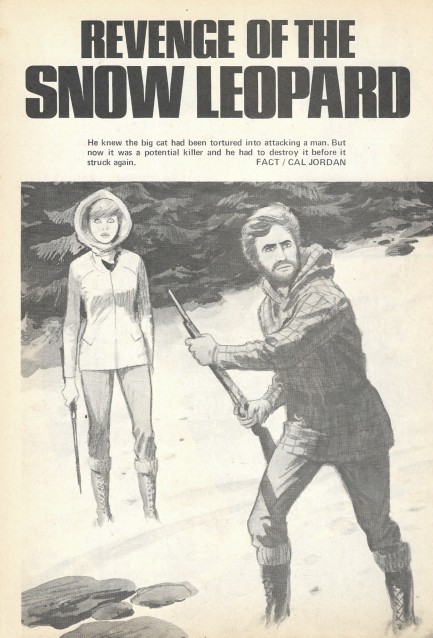 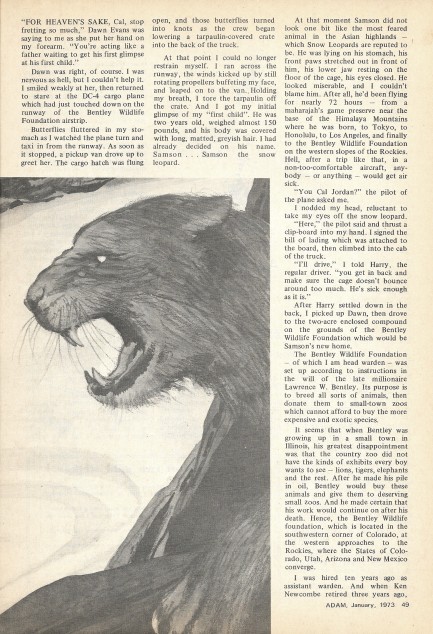 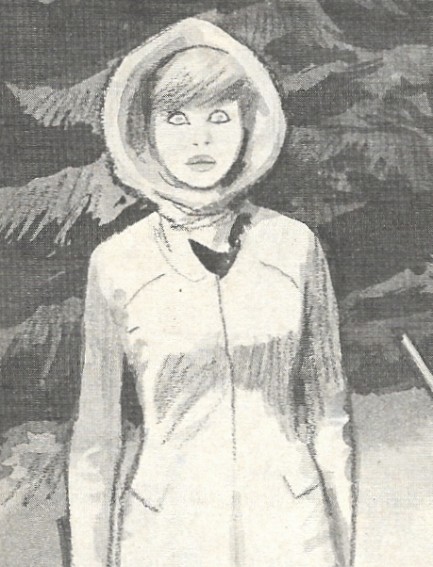 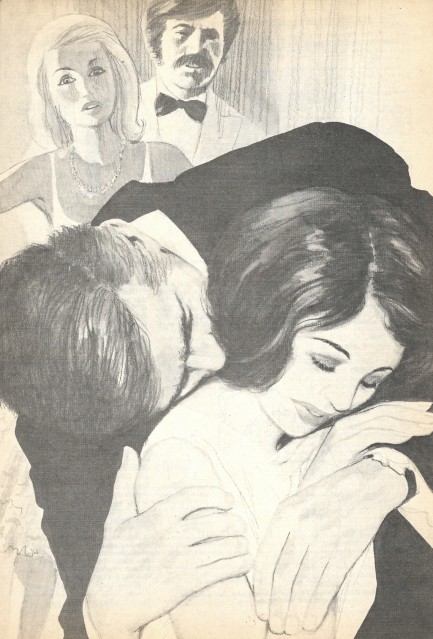 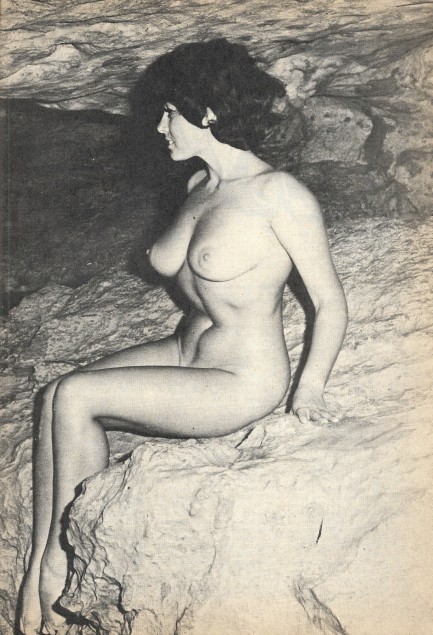  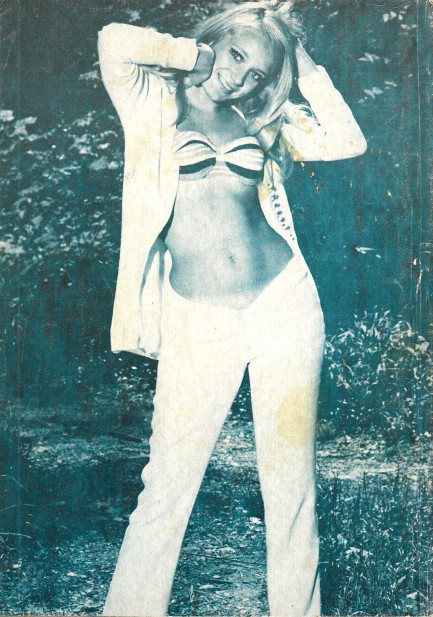
 Don't worry! I'm going to get the three of you out of there! 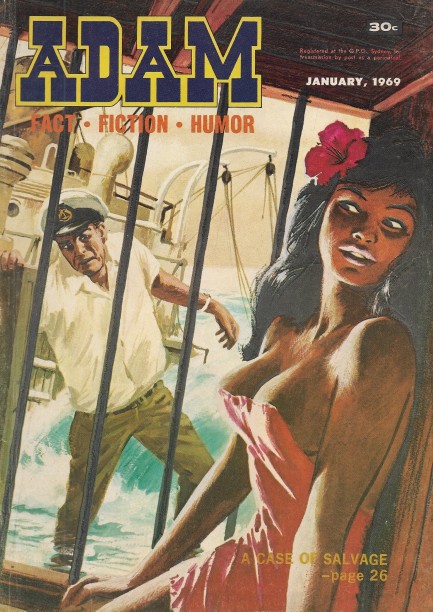
Our girlfriends—affectionately PI-1 and PI-2—rolled their eyes at this one, and why wouldn't they? We did too, but we work with what we're given, and we certainly couldn't ignore the fact that this January 1969 Adam magazine features a cover of a woman whose gravity defying breasts are directly in the center of the art. Men's magazines, those concoctions of macho fantasy set to print, are inherently sexist, but we are mere documentarians of mid-century art, literature, and film—and crime, and weirdness, and sex—in the various forms they take. This one is a particularly eye-catching example.
While literary magazines published prestige fiction, men's mags like Adam carried on the pulp tradition, giving authors without highbrow leanings opportunities to expose their work to wide audiences. Without the efforts of such publications, modern literature might look very different. Stephen King, for example, published many of his early stories in Gallery, a middle-tier smut monthly nobody would have mistaken for Playboy. Speaking of which, Playboy published early works from Ian Fleming, Ursula K. Le Guin, and even serialized the entirety of Ray Bradbury's Fahrenheit 451 in 1954, a year after its initial publication landed with a thud.
As far as we know Adam didn't produce any major writers except James Lee, aka Jim Aitchison, whose Mr. Midnight books were recently made into a series now streaming on Netflix. But failing to graduate lots of future bestselling authors doesn't change what Adam was—a publication that aimed for mass male appeal by merging all the elements of what was once known as pulp. Those elements included mystery, crime, war, exotic adventure, risqué humor, and a dose of relatively tame sexual content. We have all that and more below in thirty-plus scans, and something like seventy-eight issues of Adam embedded in our website.
 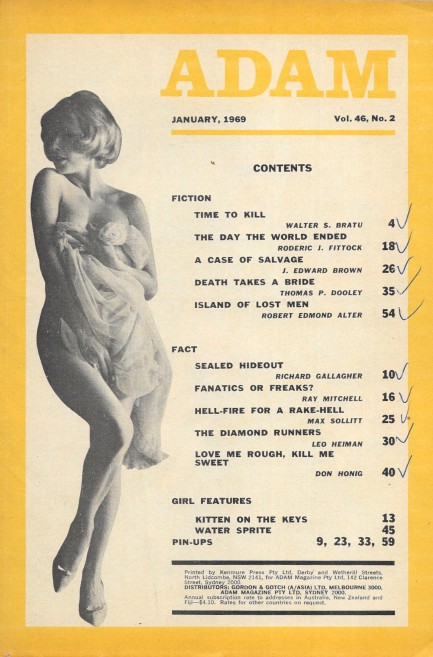 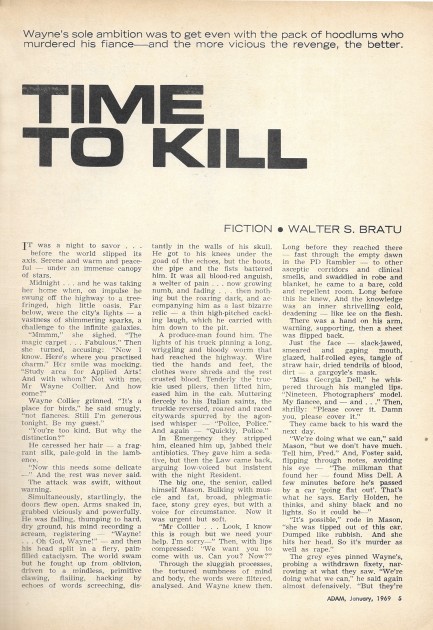 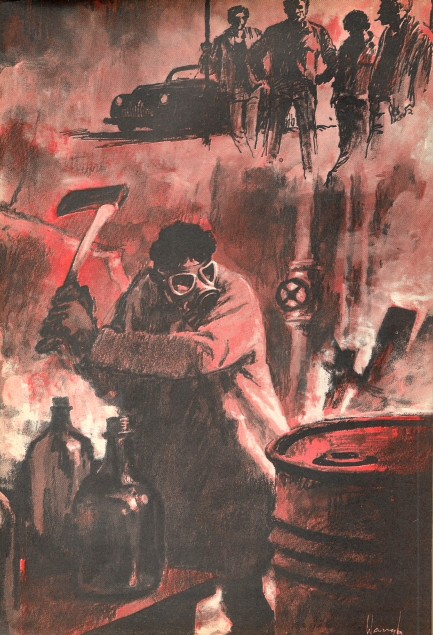 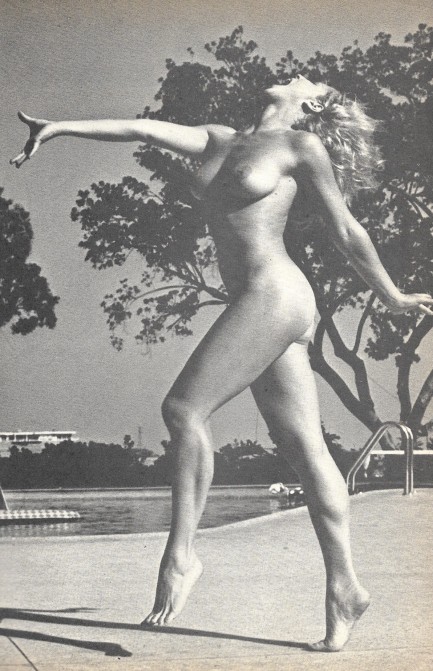 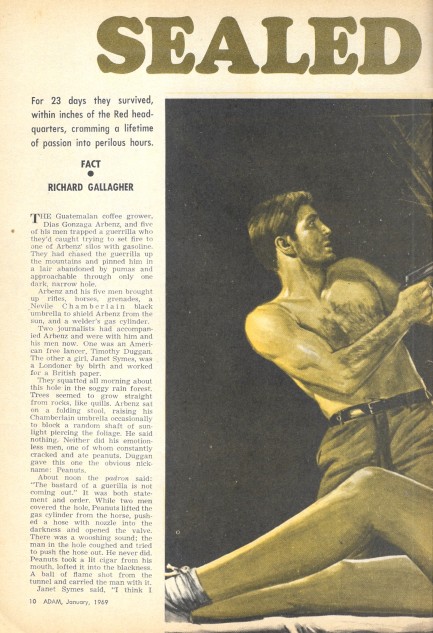 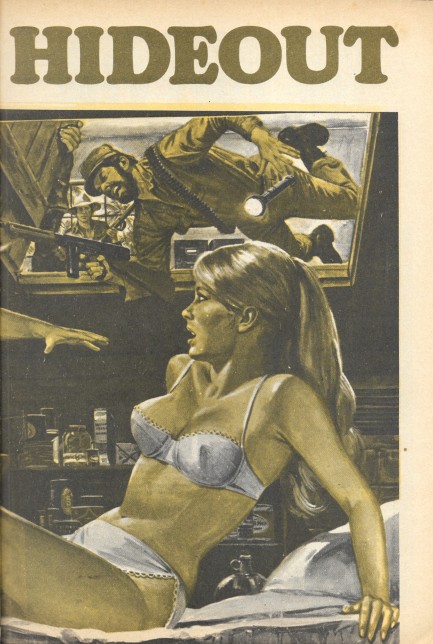 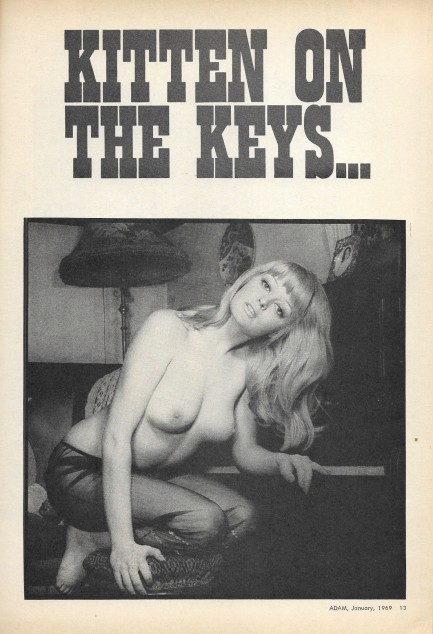 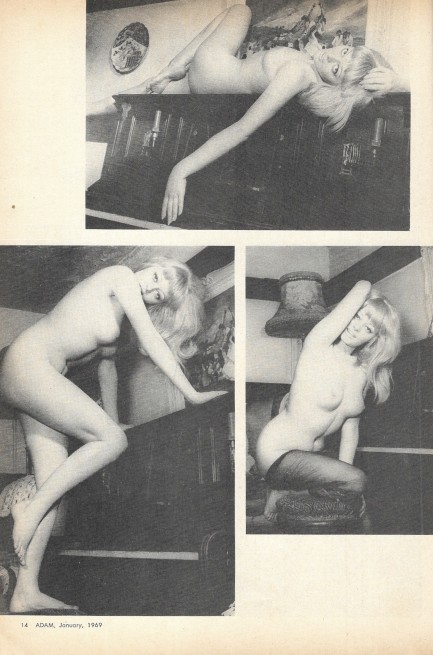  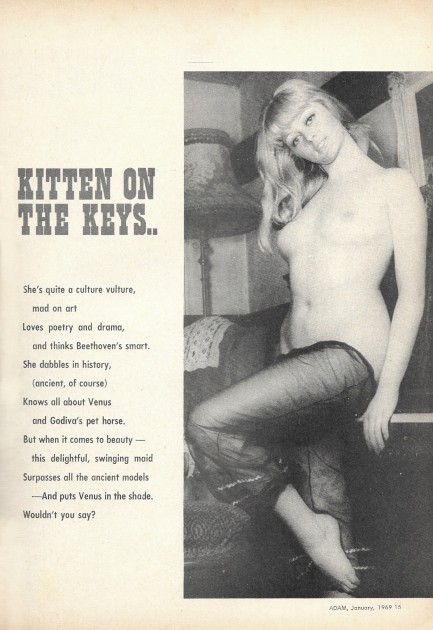 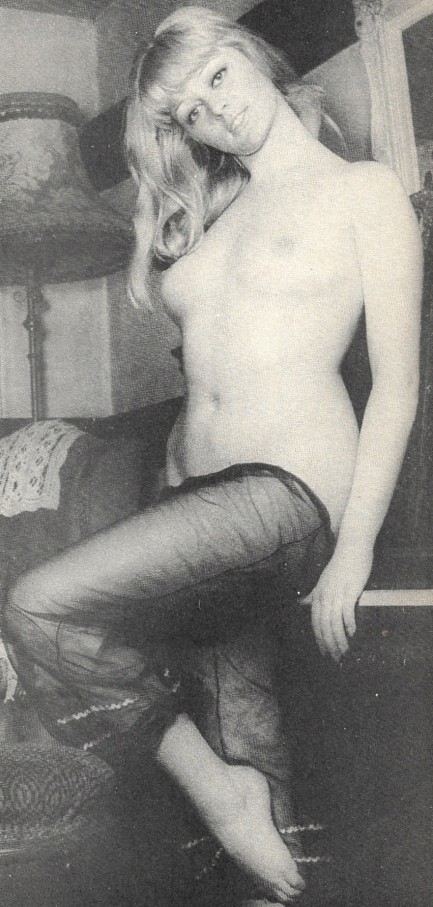 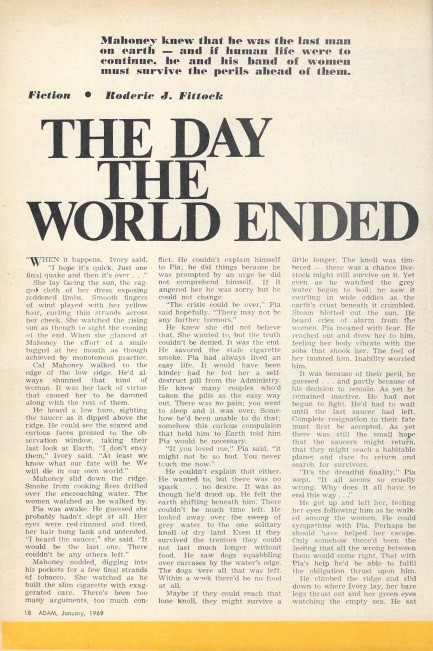 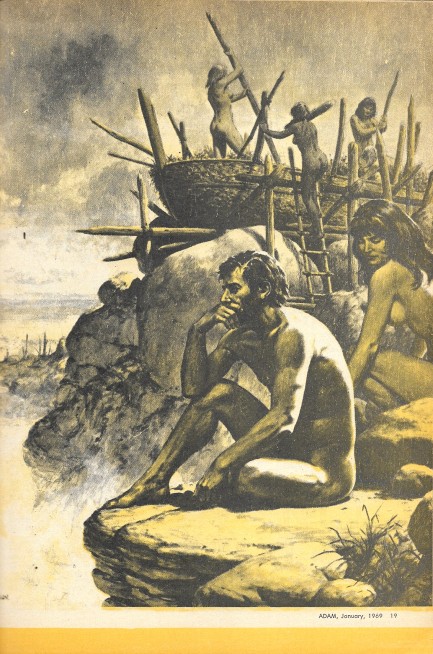  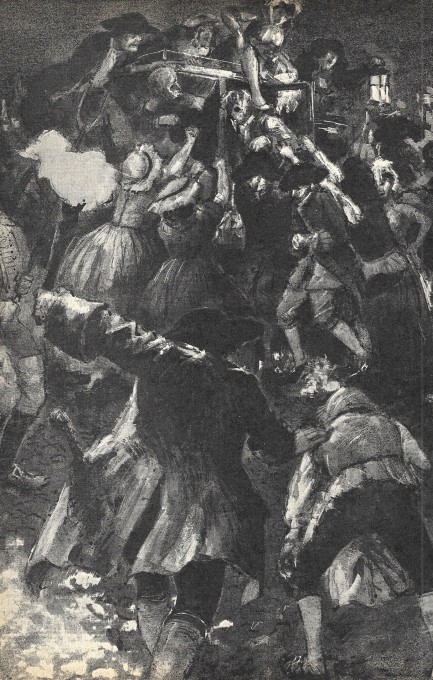 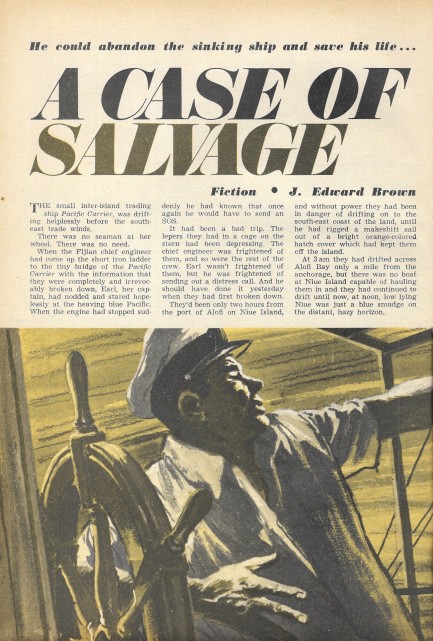 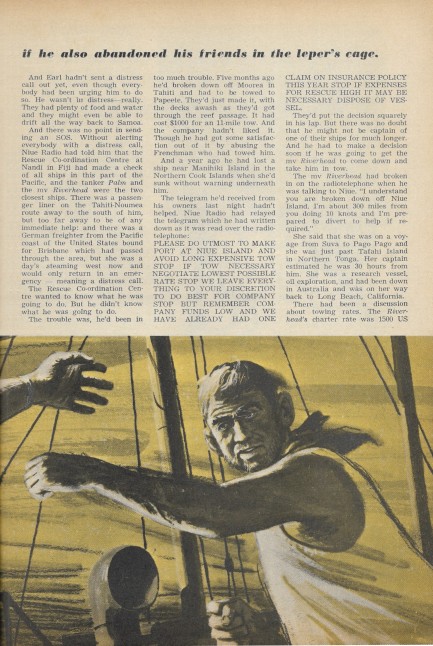 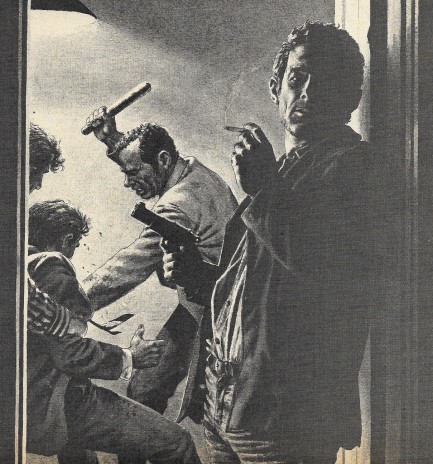 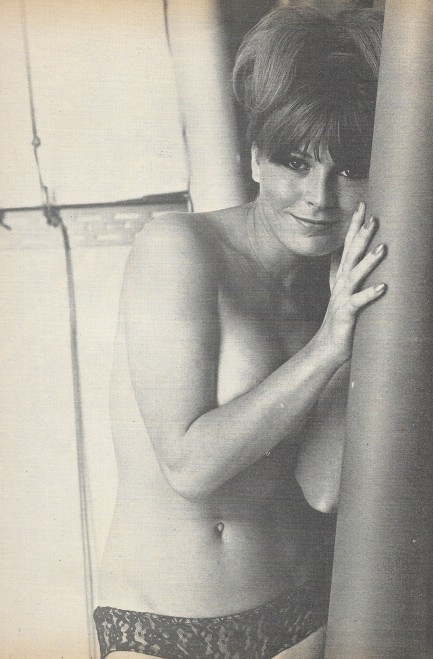 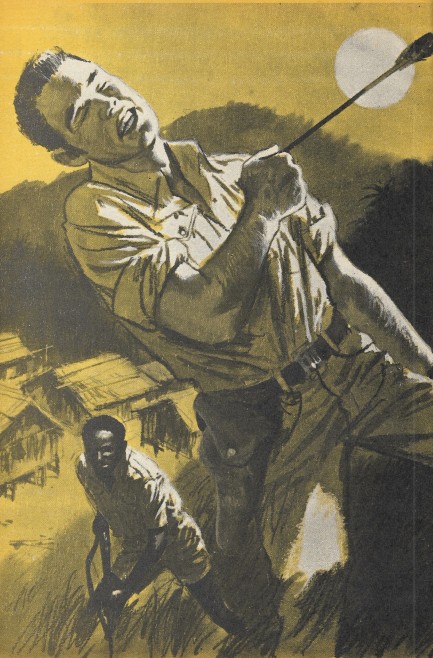 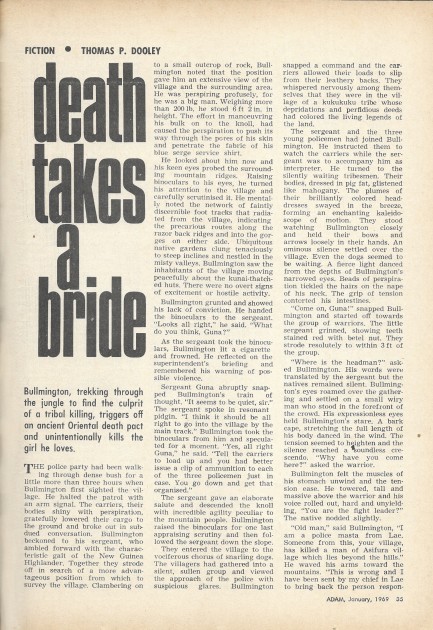 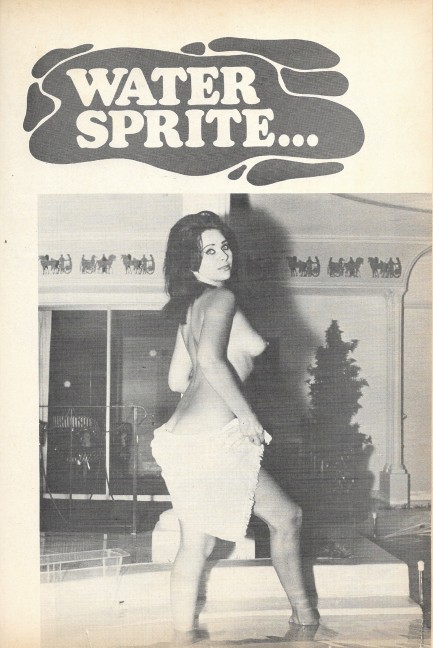 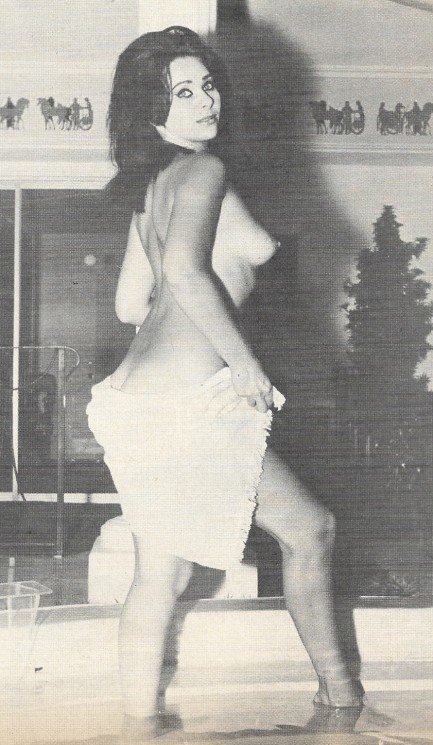 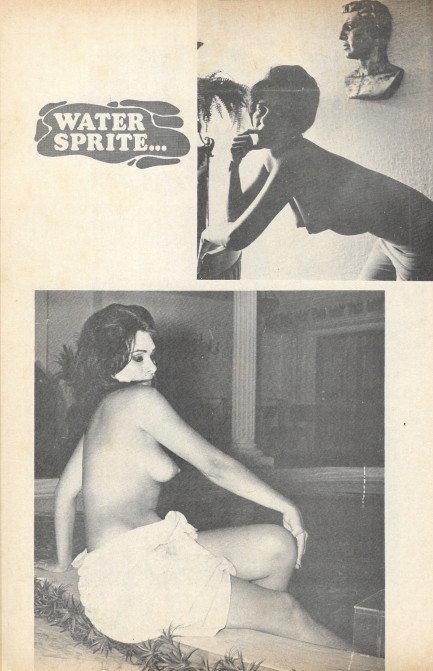 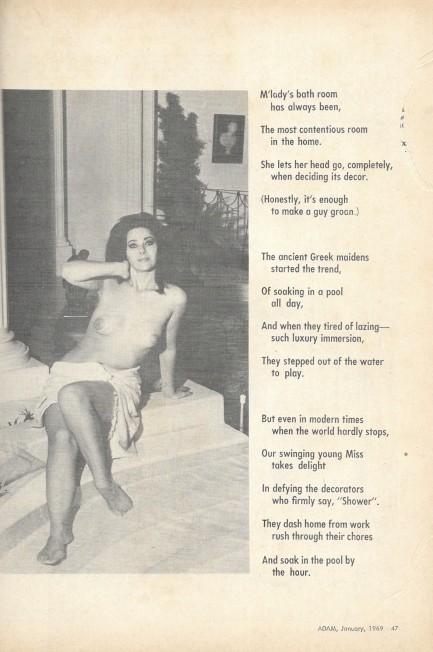 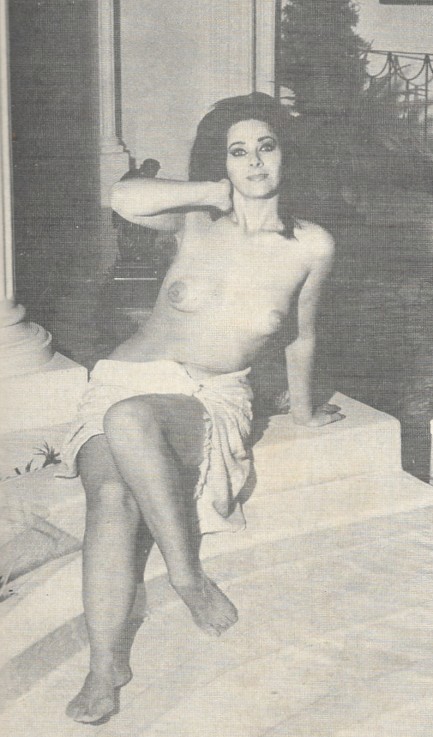 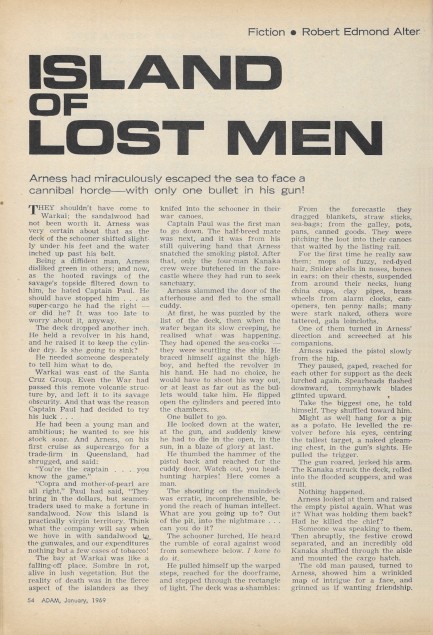 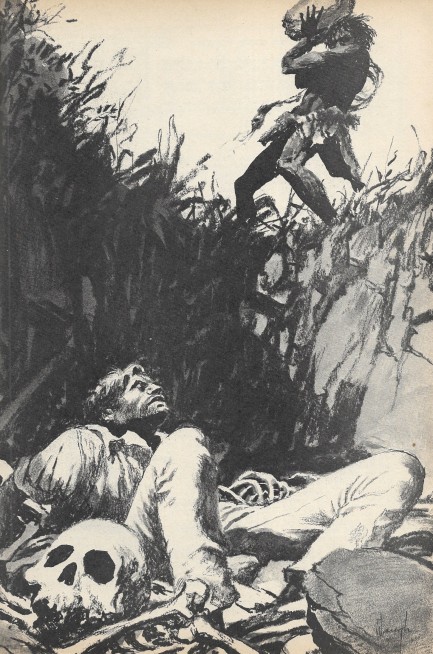 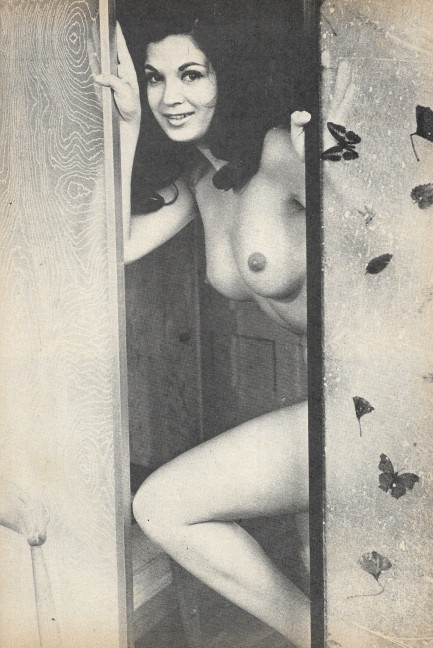 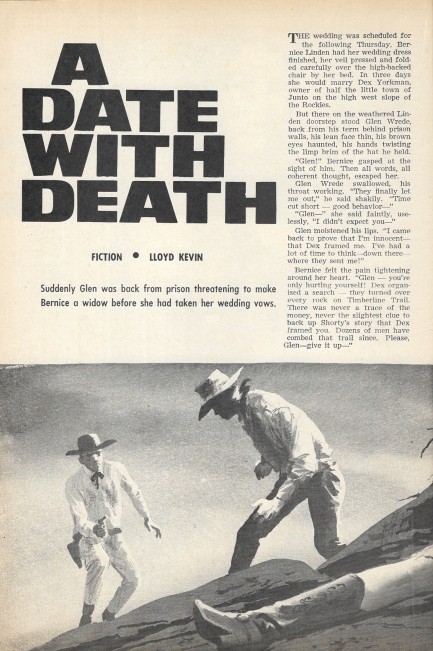 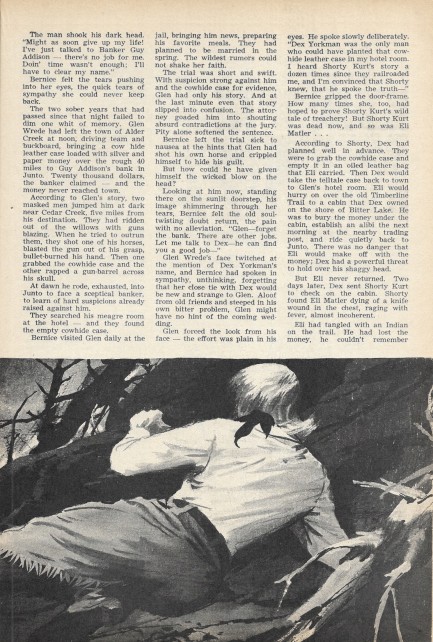
 Bad news, I lost the key. But before I was a kidnapper I was an orthopedic surgeon, so foot reattachment is no problem. 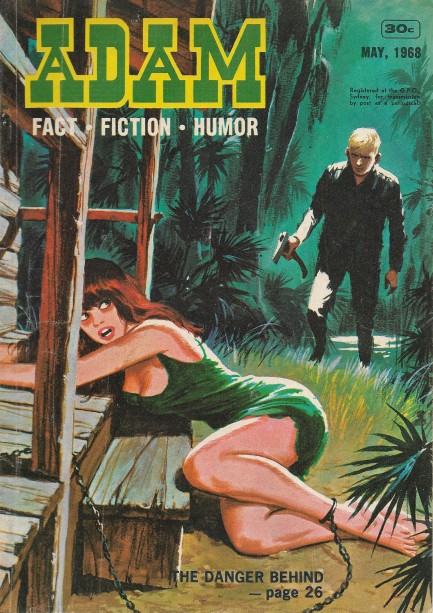
Above is another vibrant cover for Adam magazine, this one from May 1968, uncredited as always but painted by Phil Belbin or Jack Waugh. The pair did the bulk of the illustrations for the magazine, but it's not possible—for us, at least—to determine who was responsible for which pieces, because they worked in a similar style. On the occasions Belbin bothered signed something it wasn't only as himself—sometimes he signed as Duke, Pittsburgh, Humph, or Fillini. Waugh, as far as we know, was always Waugh. We've now uploaded more than seventy issues of Adam (we haven't done an actual count for a couple of years) and we'd say signatures appear on maybe one of every ten illustrations. Waugh's scrawl pops up here in the art for the H.M. Tolcher story, “Prize Sucker.”
The cover illustrates the Joachim Heinrich Woos story, “The Danger Behind,” which is is about a man walking through the woods at the exact moment some rural cops and a heavily armed posse are looking for men who robbed a bank. The robbers shot the guards and several police. Blinded by a lust for revenge, the mob mistakes the innocent hiker for one of the killers and chases him over hill and dale with the intent to end his life. He escapes by rowboat only to drift downriver and run into one of the real crooks, who's chained up a hostage and has bad ideas as well as an evil temperament. It's a decent story from Woos, who also wrote for Pocket Man, Argosy, Off Beat Detective Stories, Adventure, and Manhunt. We have thirty-three scans below.
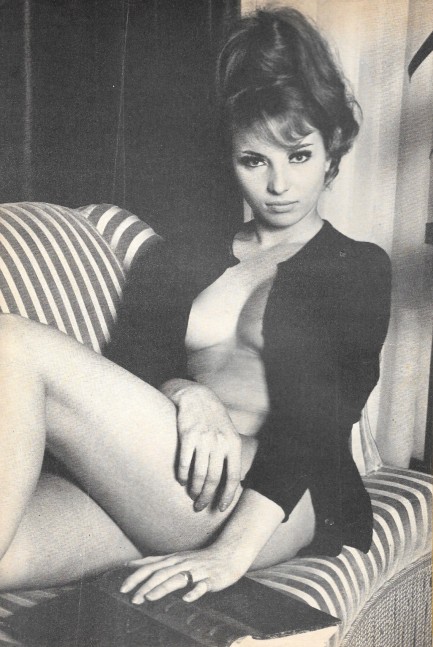 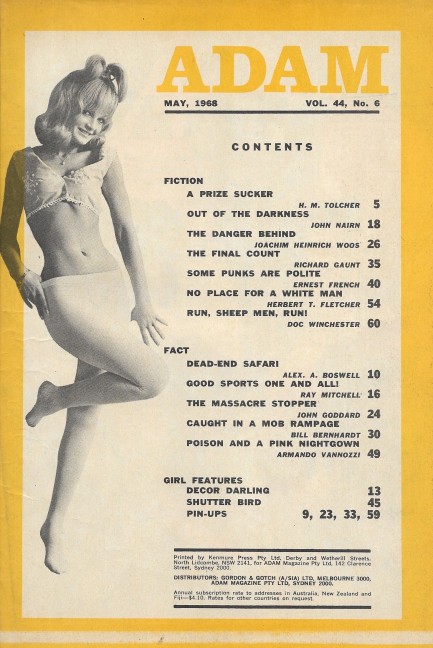 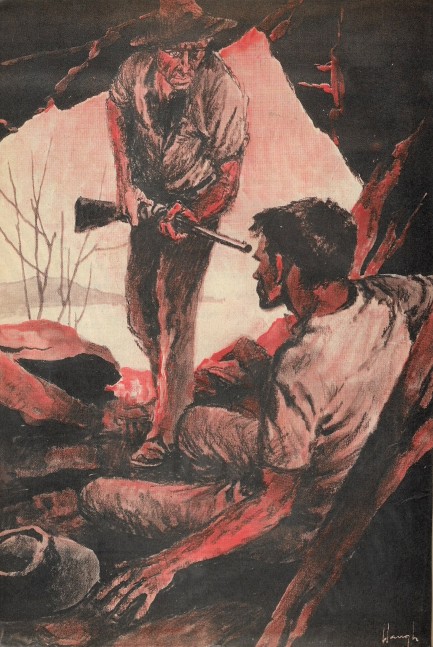 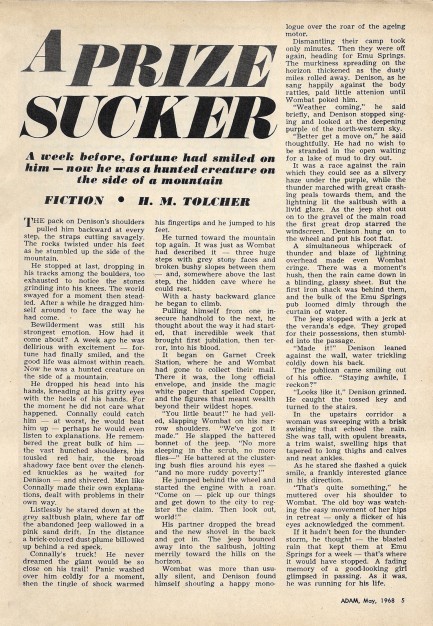  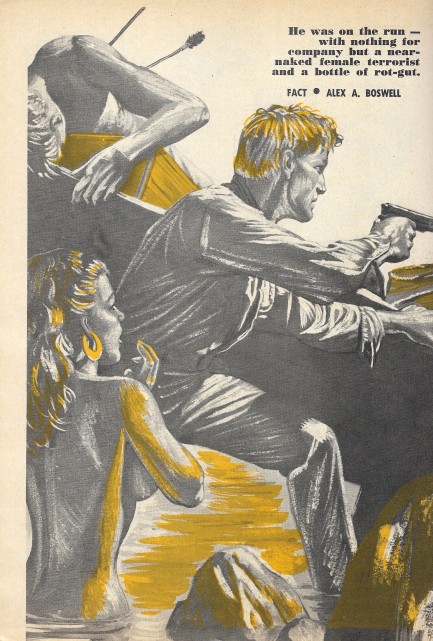 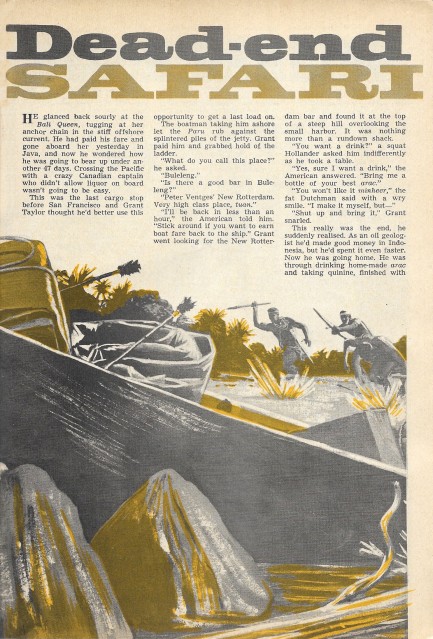 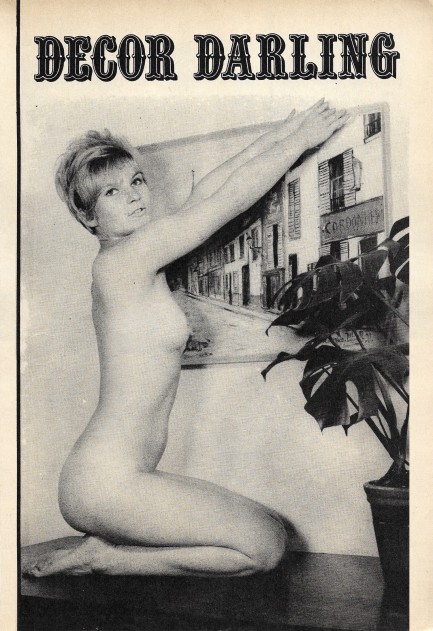  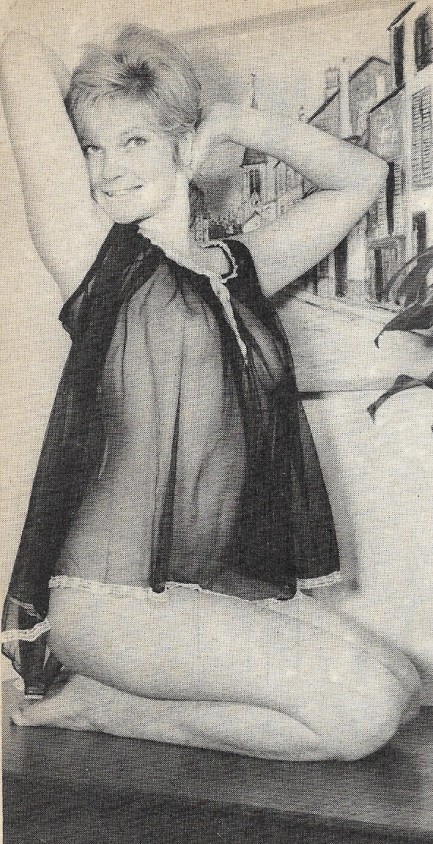 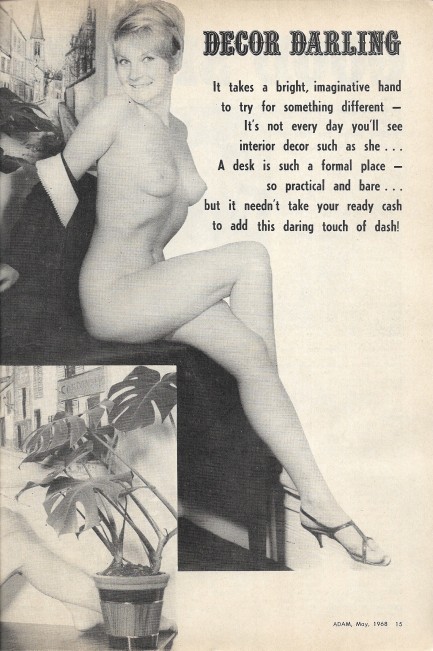 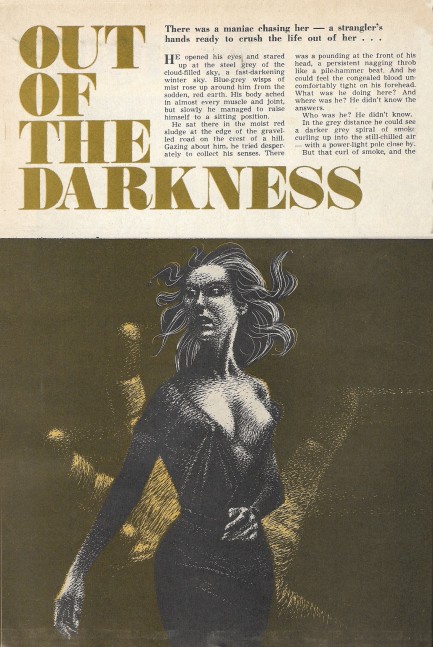 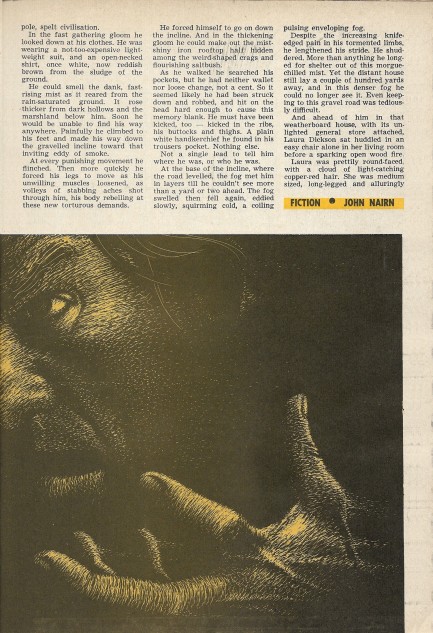  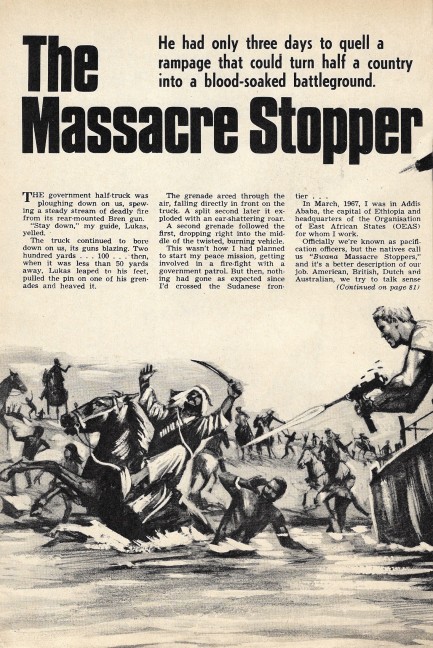 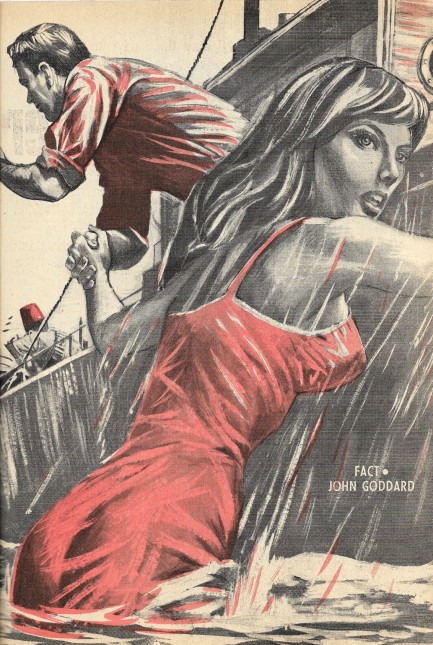 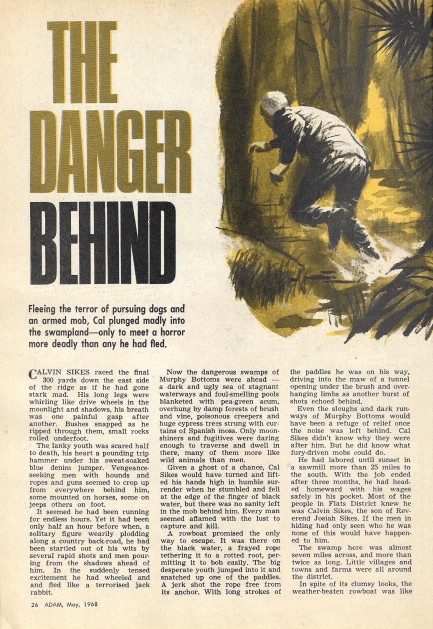 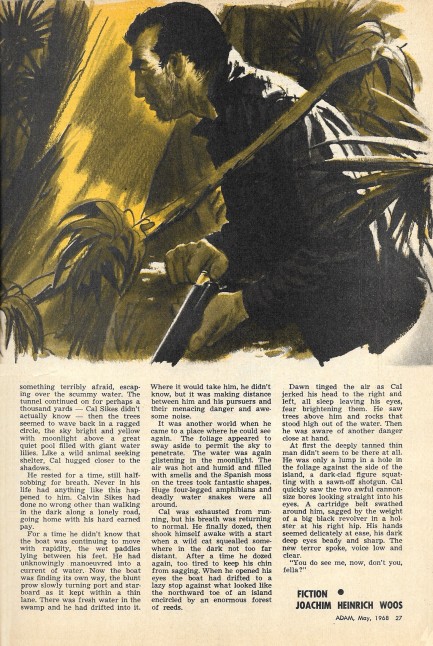 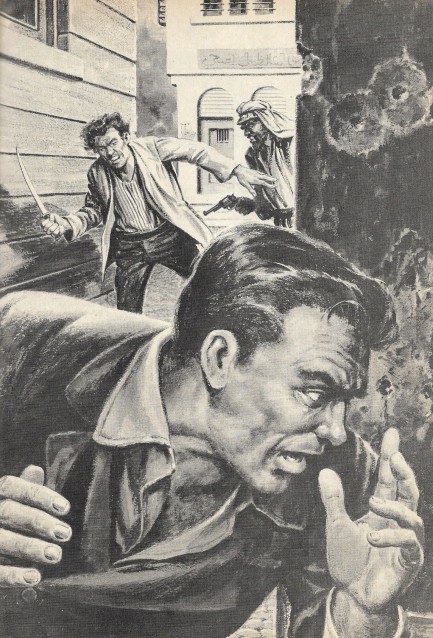 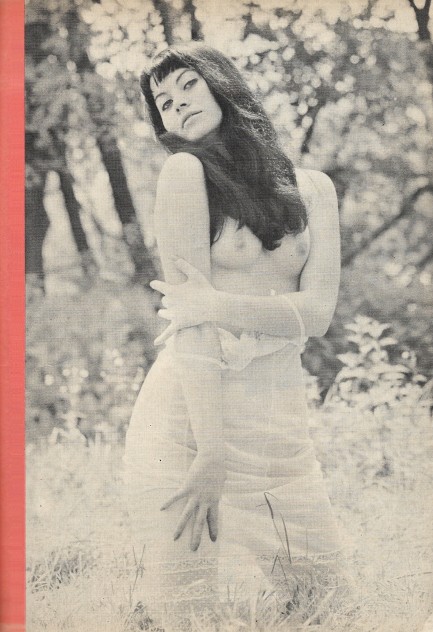 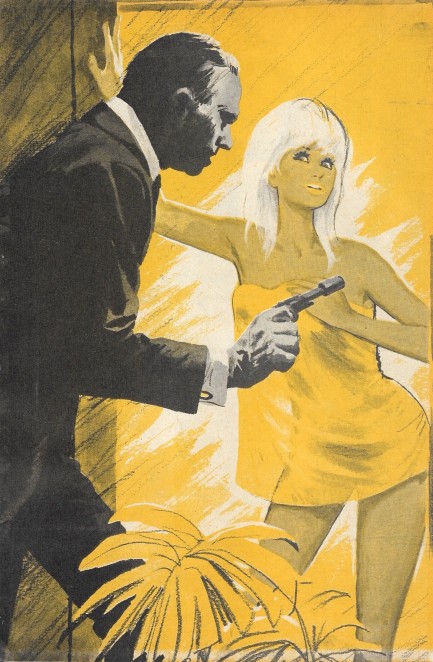 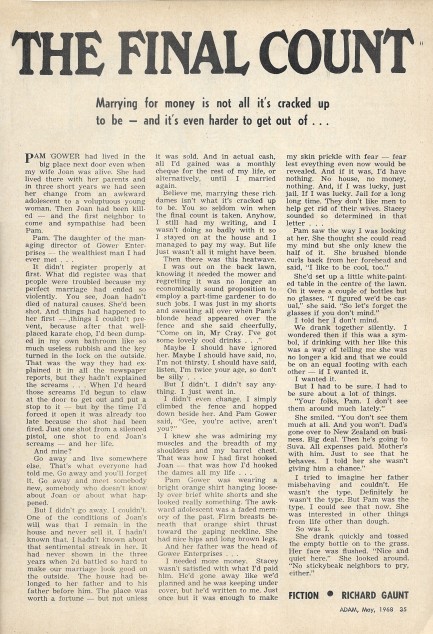 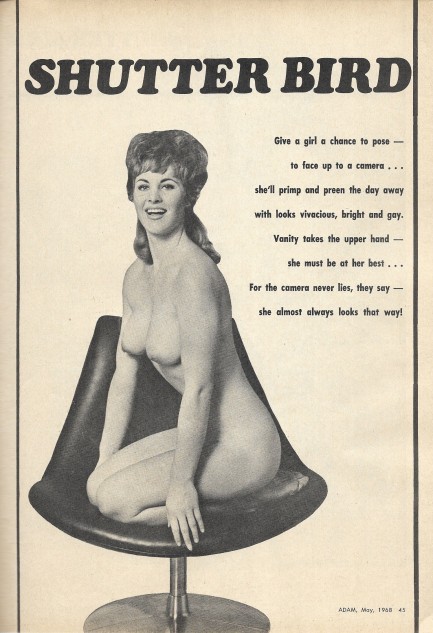   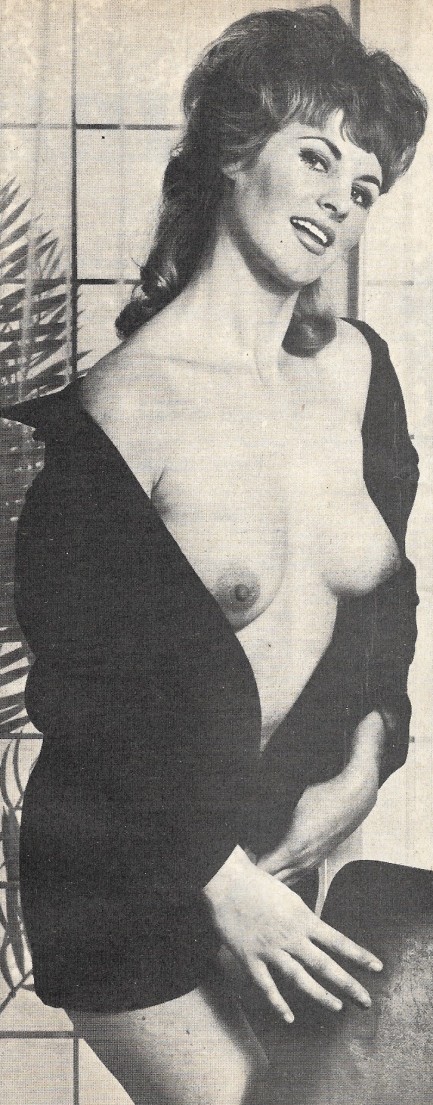 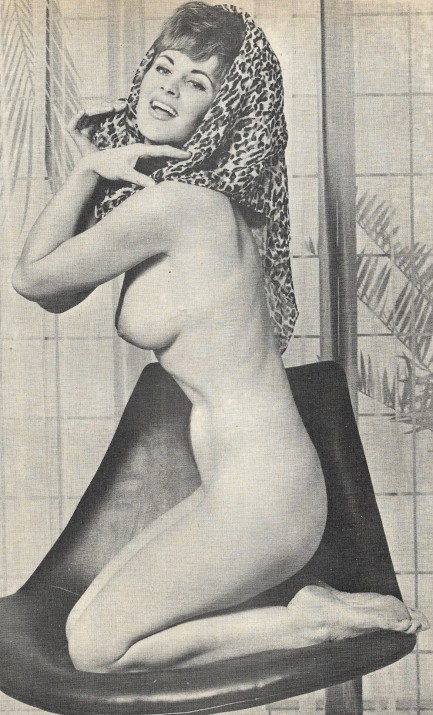 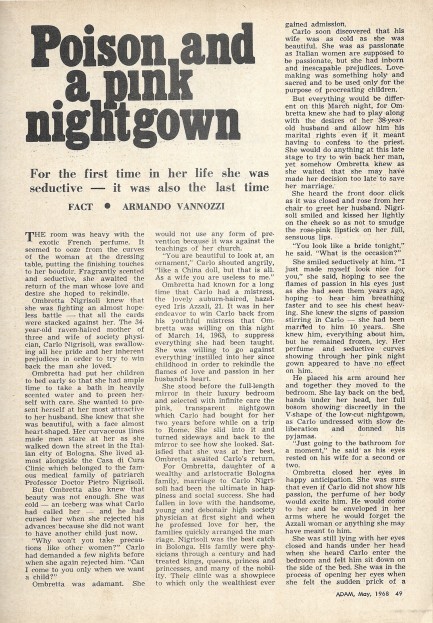 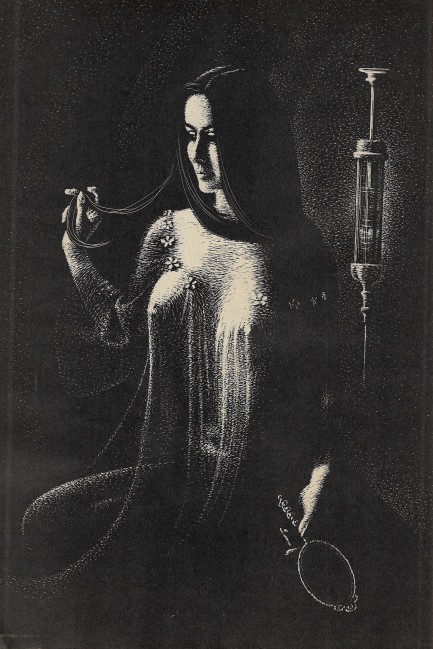 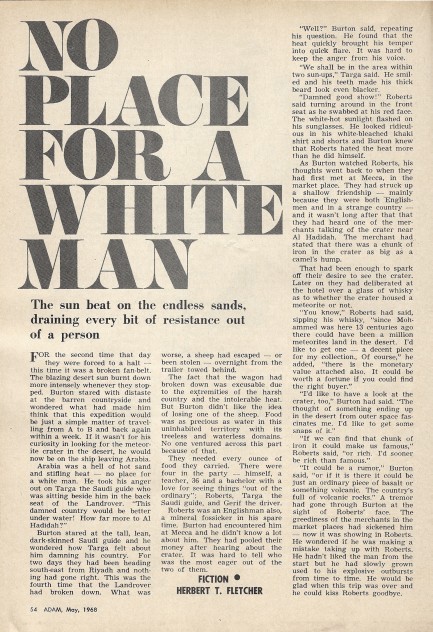 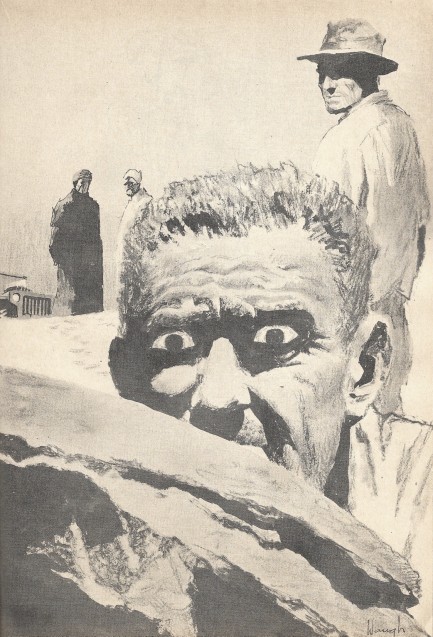 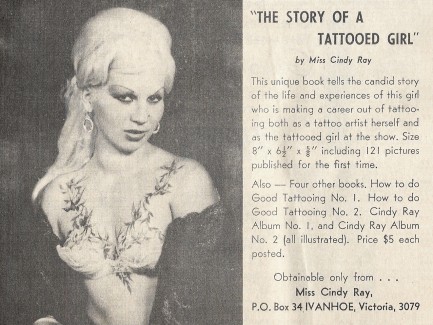 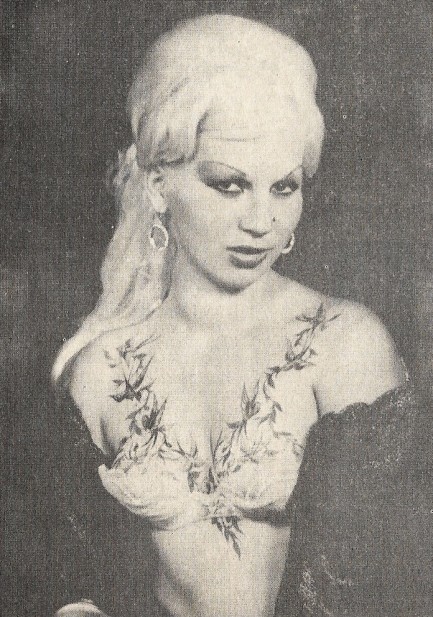
 What it lacks in maturity it makes up for in exuberance. 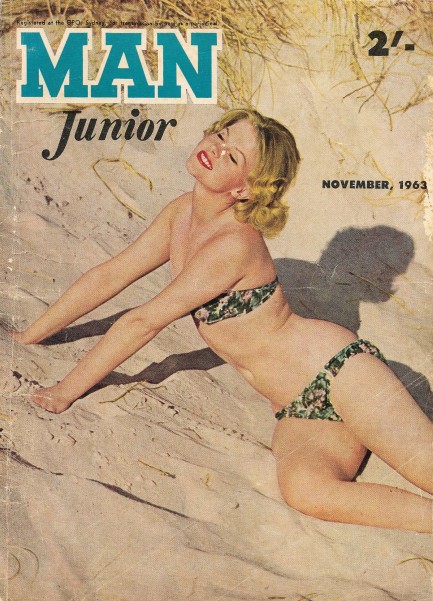
Above you see a cover of the Australian magazine Man Junior, which hit newsstands Down Under this month in 1963. An offshoot of Man magazine, it came from K.G. Murray Publishing, along with Adam, Pocket Man, Eves from Adam, Cavalcade, Man's Epic, et al. The Murray empire, run by Kenneth G. Murray, came into being in 1936, and the company's various imprints lasted until 1978—though the entire catalog was bought by Consolidated Press in the early 1970s. We've seen nothing from K.G. Murray that we don't love, so we'll keep adding to our stocks indefinitely. Or until the Pulp Intl. girlfriends finally revolt, which should take a few more years. Speaking of which, it's been a few years since our last Man Junior, but its positives and negatives are still intimately familiar to us. On the plus side, the fiction and true life tales are exotic and often good, and on the negative side the humor doesn't usually hold up, though the color cartoons are aesthetically beautiful.
Of all the stories, the one that screamed loudest to be read was, “The Hair-Raisers,” by Neville Dasey, which comes with an illustration of a bearded woman. It's an absurd, legitimately funny story about a con man who accidentally invents a hair growing tonic, which he then unintentionally splashes on his date's face. By the next morning she has a beard, which proves the tonic works, but the con man lost the magic liquid when he stilled it, and he ends up losing the formula to create it. But everyone ends up happy—the con man earns a contract that pays him regardless of whether he can recreate the formula, and his date ends up marrying the owner of the hair restoration company. We weren't clear on whether the formula wore off, or she had to shave regularly. Either way, the story is meant to be silly and it certainly achieves that goal. Twenty-eight panels below, and more from Man Junior here, here, and here. 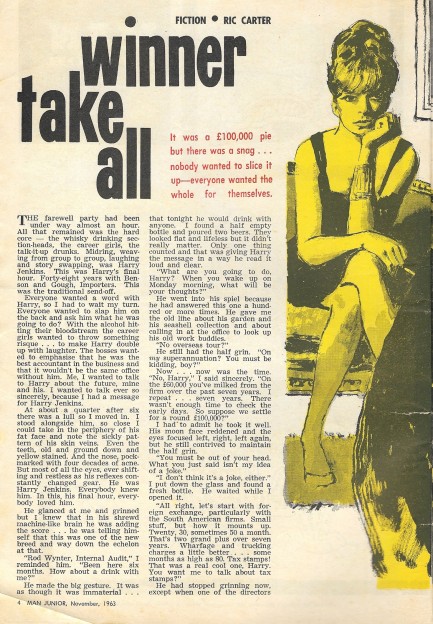 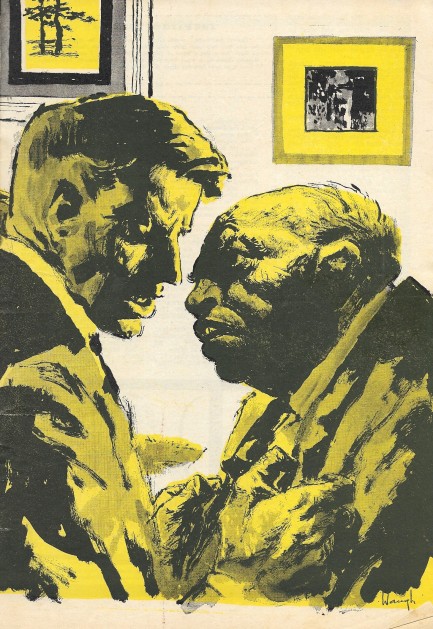 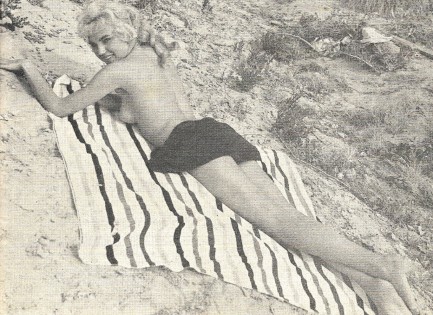 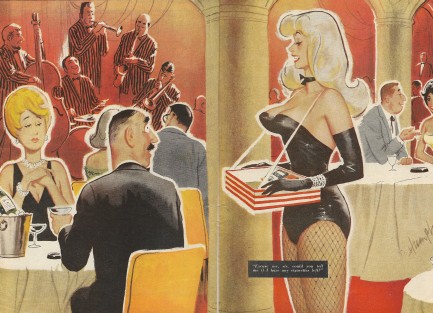 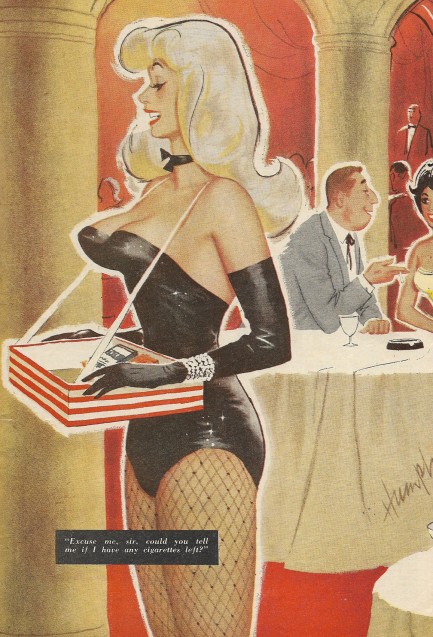 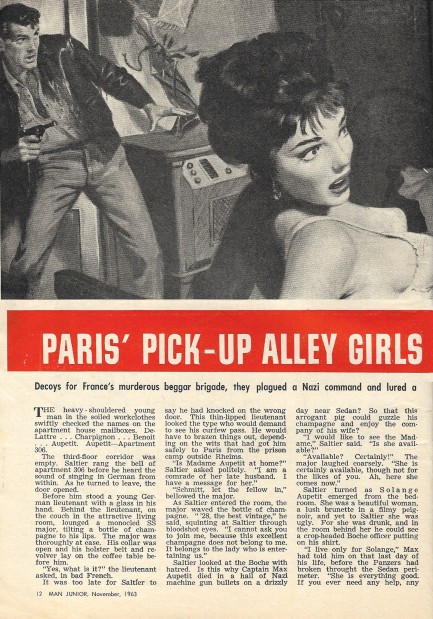 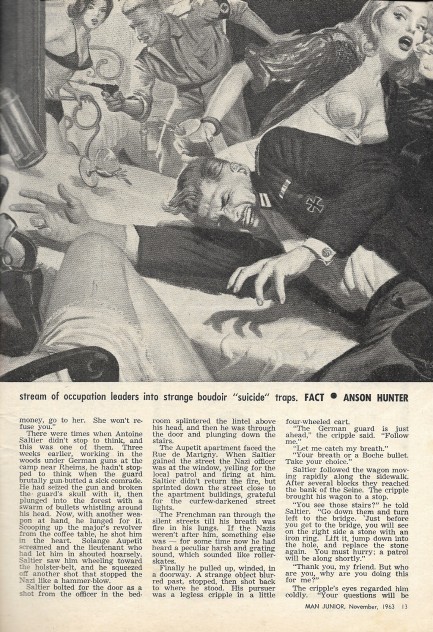 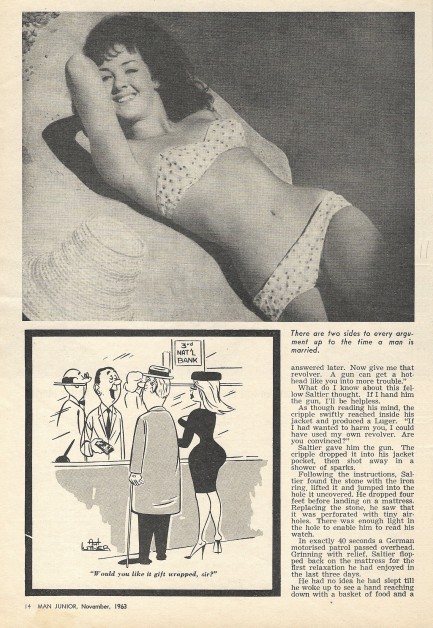 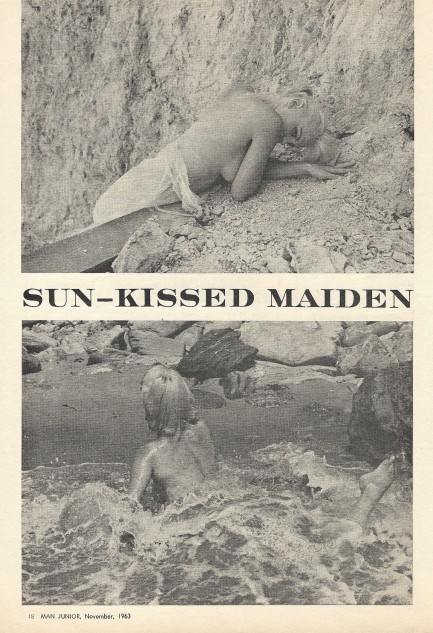 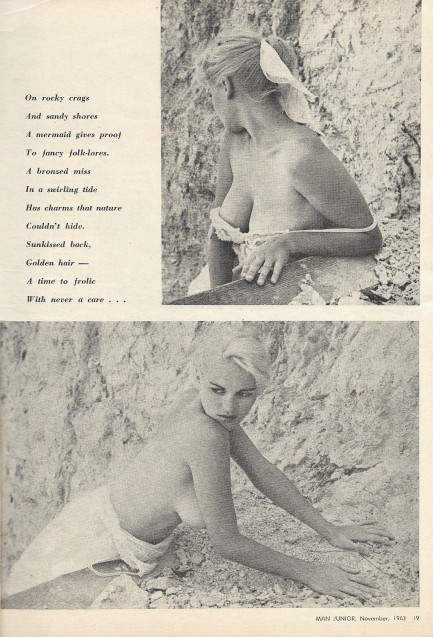 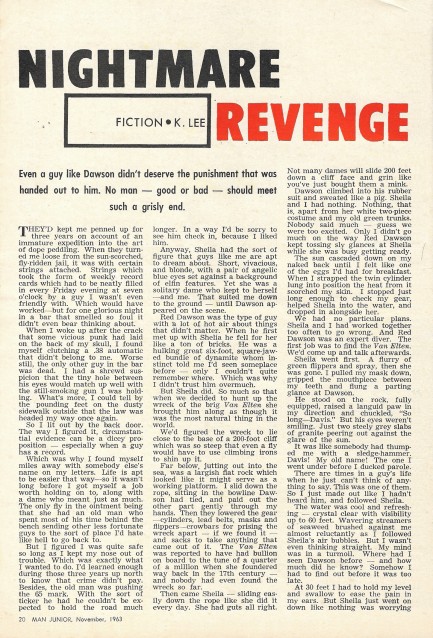 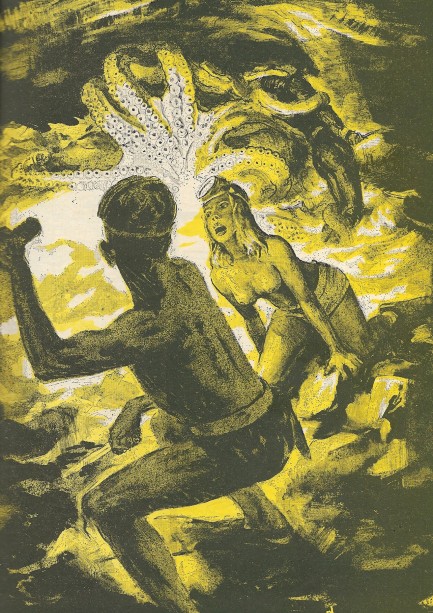 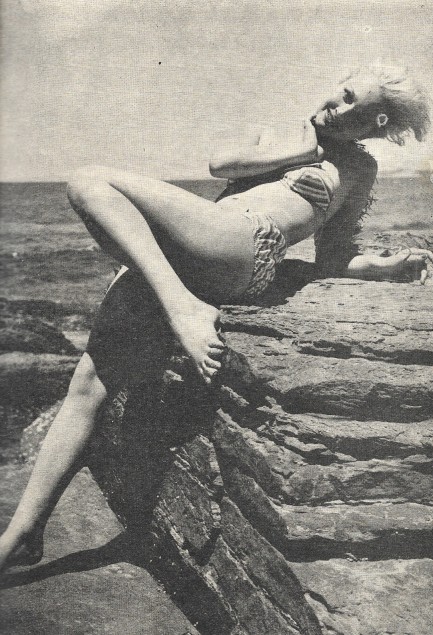 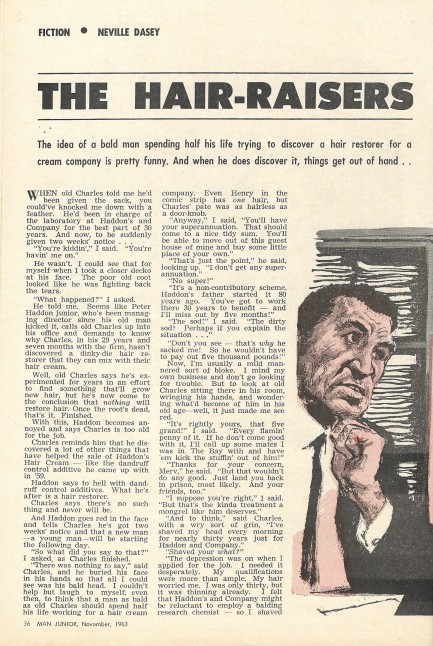 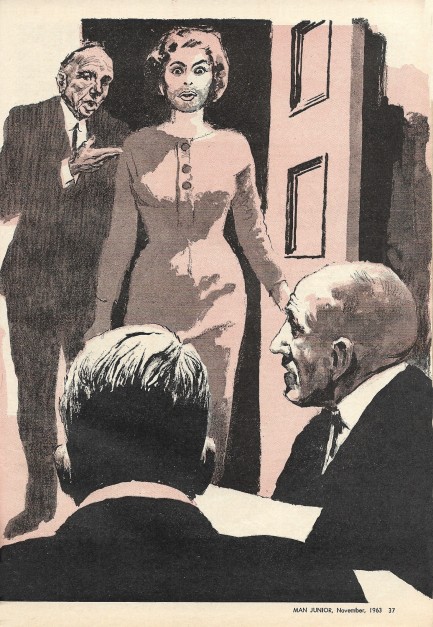 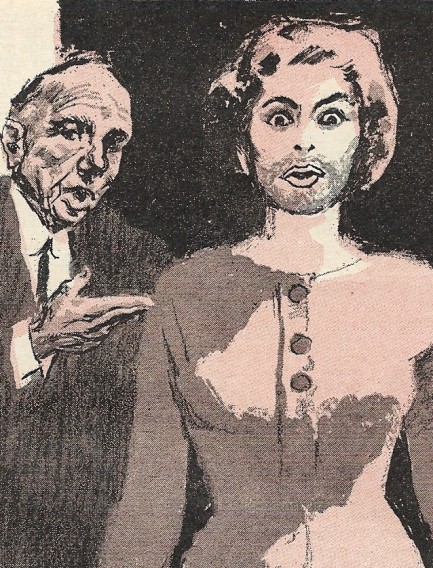  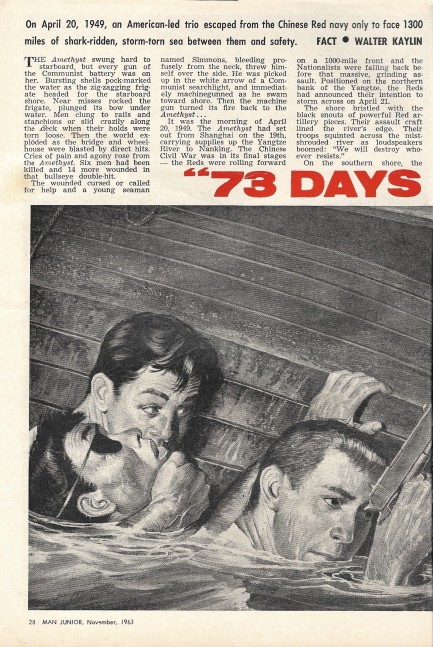 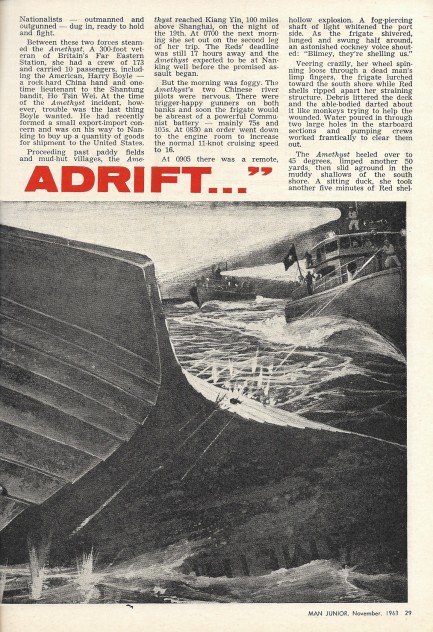 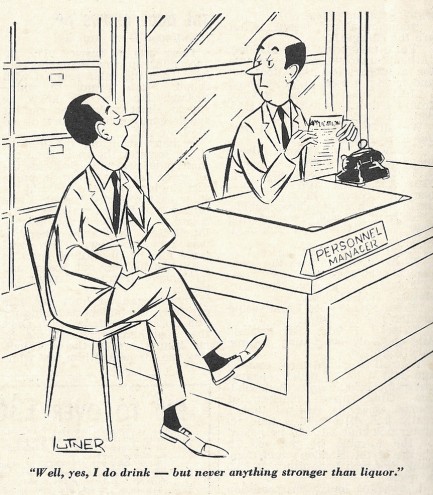  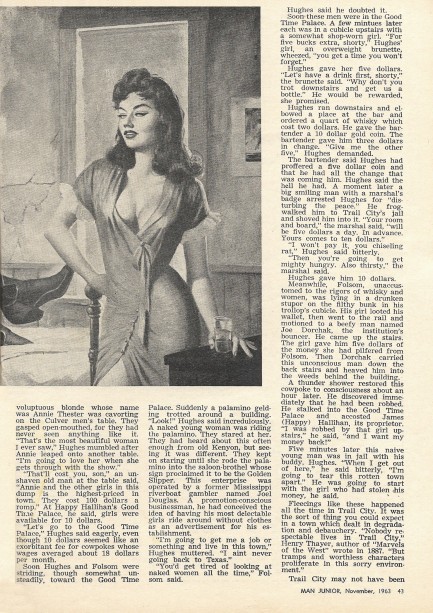 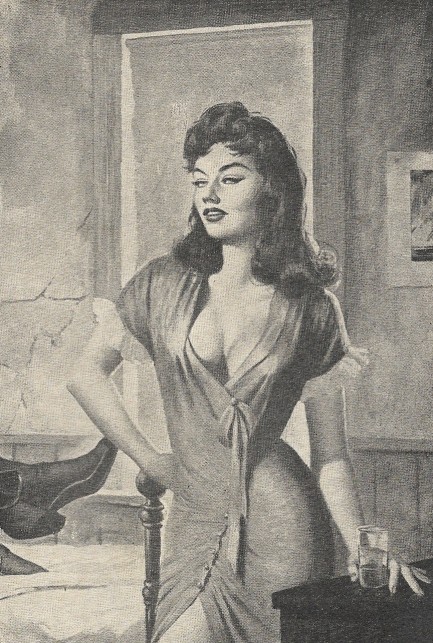 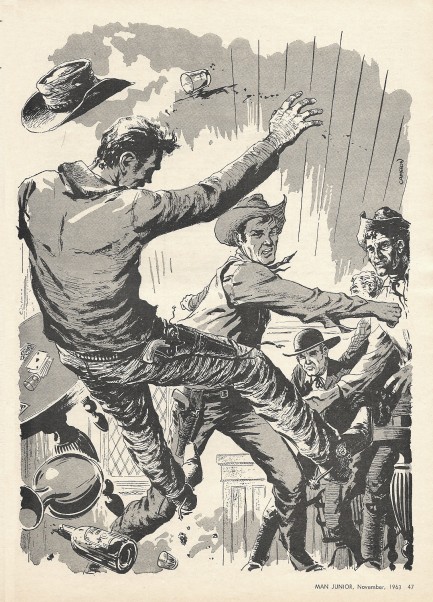 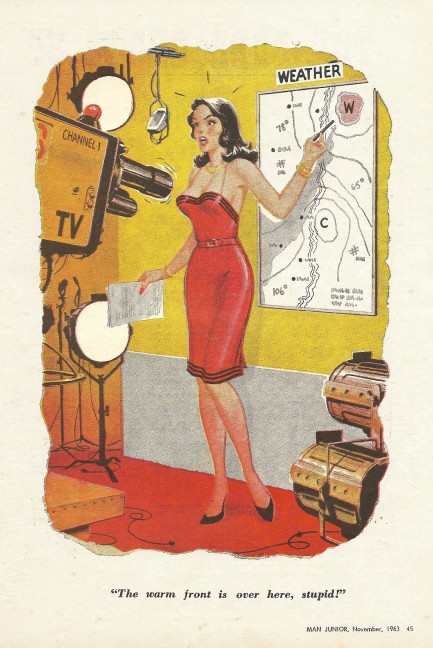 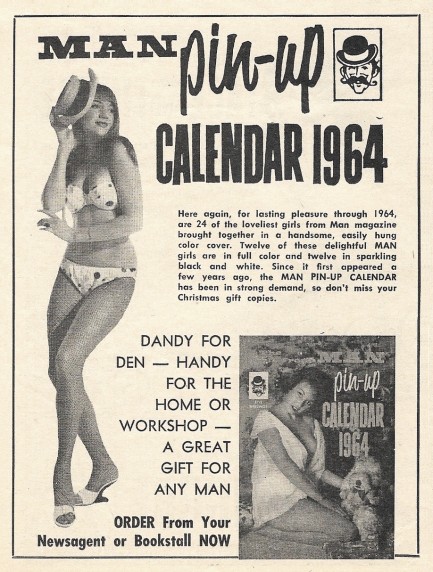 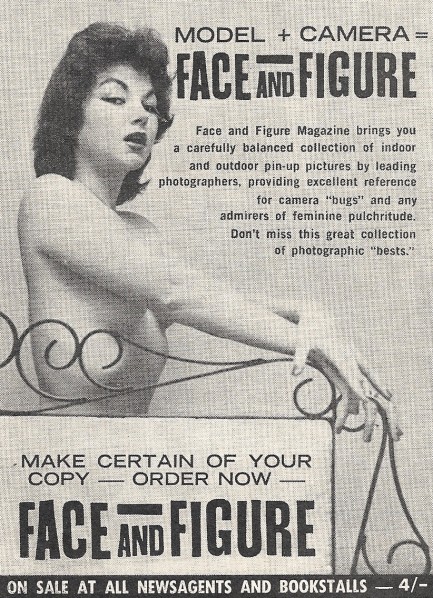 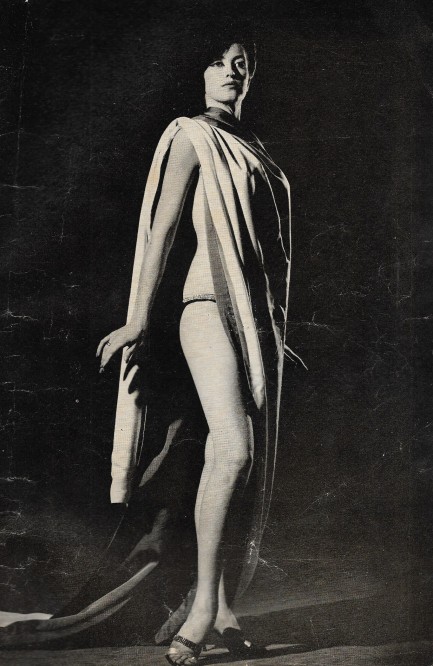

|
 |

The headlines that mattered yesteryear.
2003—Hope Dies
Film legend Bob Hope dies of pneumonia two months after celebrating his 100th birthday. 1945—Churchill Given the Sack
In spite of admiring Winston Churchill as a great wartime leader, Britons elect
Clement Attlee the nation's new prime minister in a sweeping victory for the Labour Party over the Conservatives. 1952—Evita Peron Dies
Eva Duarte de Peron, aka Evita, wife of the president of the Argentine Republic, dies from cancer at age 33. Evita had brought the working classes into a position of political power never witnessed before, but was hated by the nation's powerful military class. She is lain to rest in Milan, Italy in a secret grave under a nun's name, but is eventually returned to Argentina for reburial beside her husband in 1974. 1943—Mussolini Calls It Quits
Italian dictator Benito Mussolini steps down as head of the armed forces and the government. It soon becomes clear that Il Duce did not relinquish power voluntarily, but was forced to resign after former Fascist colleagues turned against him. He is later installed by Germany as leader of the Italian Social Republic in the north of the country, but is killed by partisans in 1945.
|

|
|

It's easy. We have an uploader that makes it a snap. Use it to submit your art, text, header, and subhead. Your post can be funny, serious, or anything in between, as long as it's vintage pulp. You'll get a byline and experience the fleeting pride of free authorship. We'll edit your post for typos, but the rest is up to you. Click here to give us your best shot.

|
|




































































































































































































































































































































































































